
Charlotte Corday
The Woman Who Killed for Freedom – A True Story of Revolution and Sacrifice
Prologue
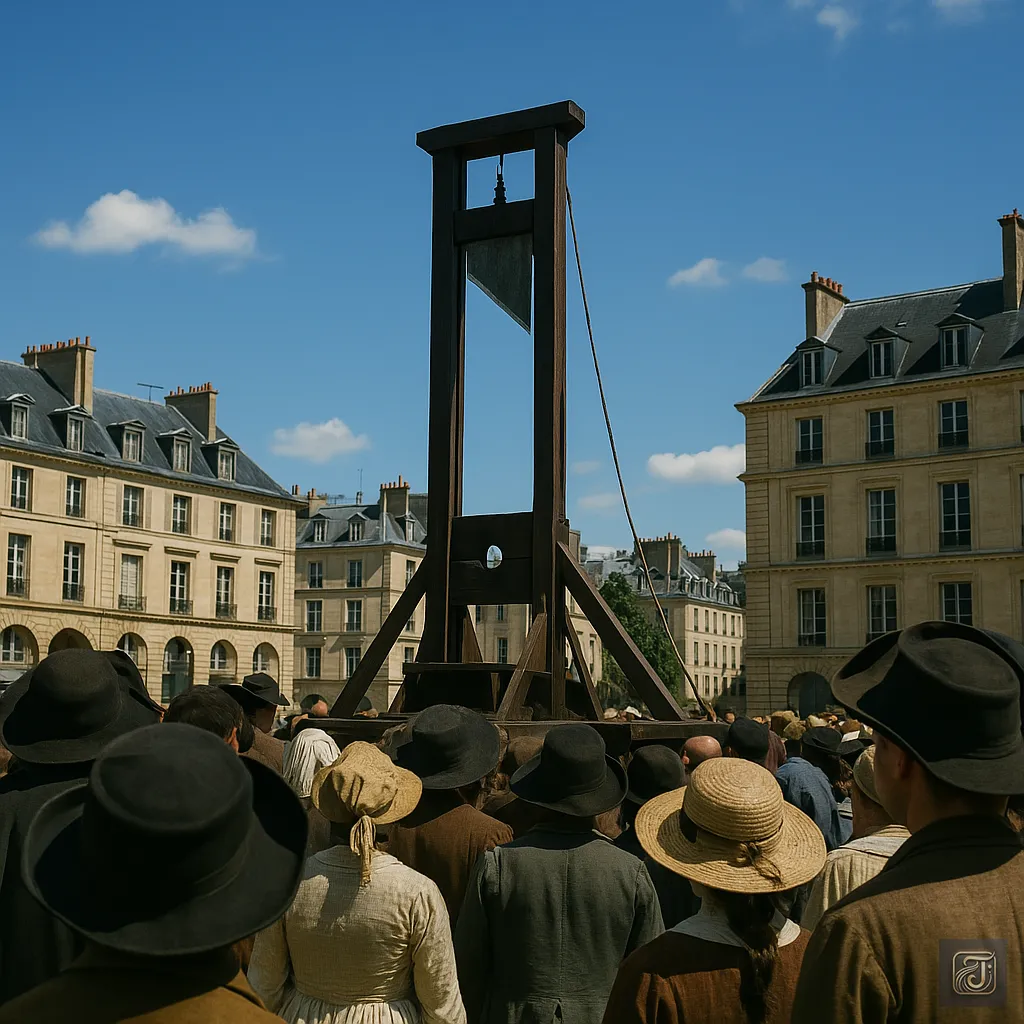
July 1793. The sky over Paris was endlessly clear, yet the streets carried the scent of blood.
The fever of revolution had reached its peak.
While the people cried out for liberty and equality, they stared at the execution platform with equal fervor.
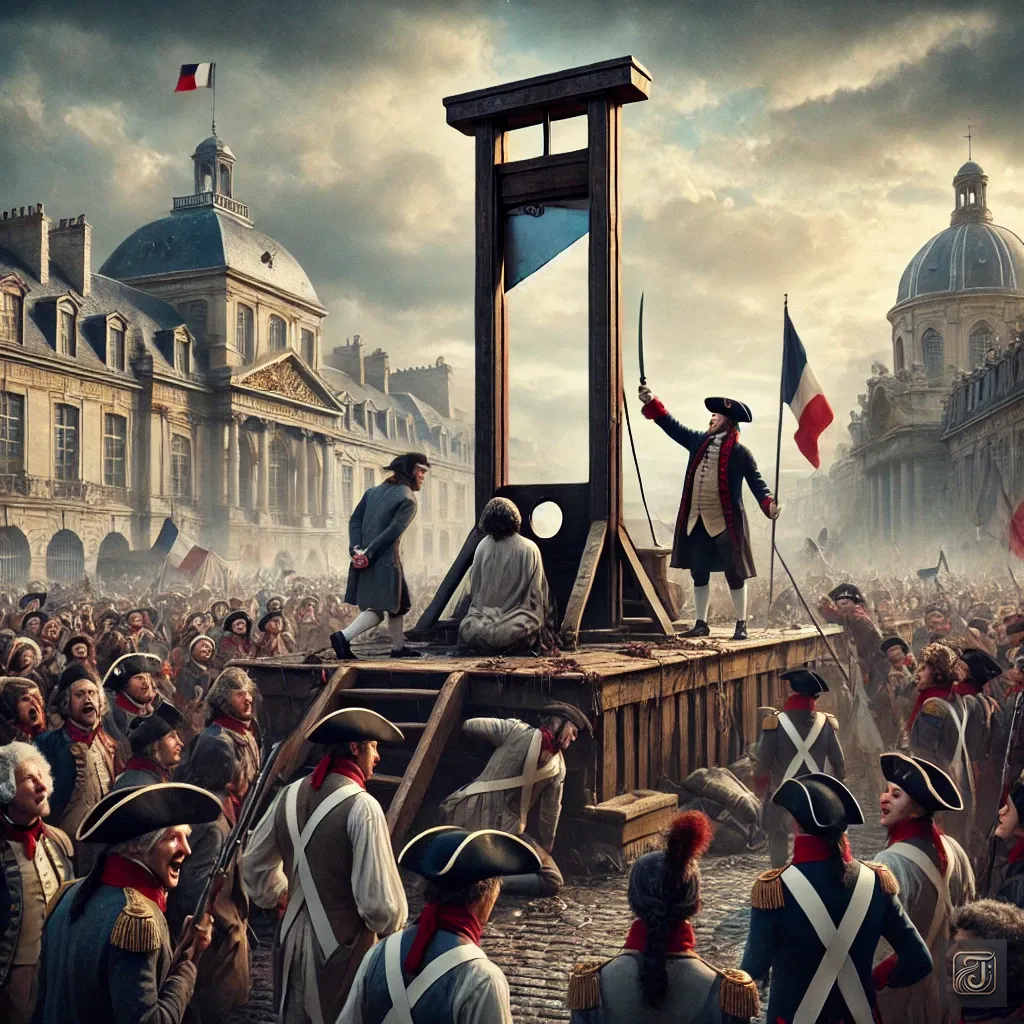
Each day, the guillotine’s blade was stained red, and whispers of who the next victim might be swirled through the markets and alleyways.
Amidst that turmoil, a young woman walked quietly forward.
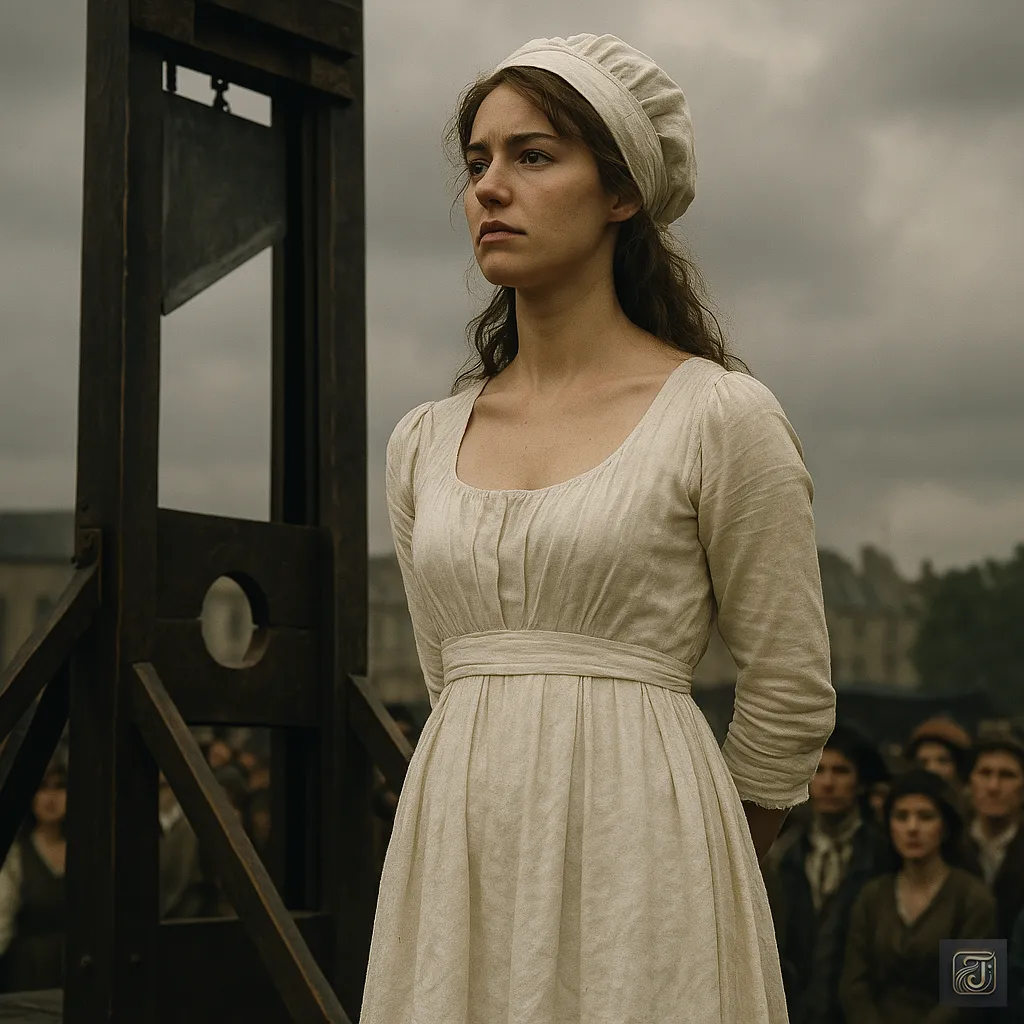
Charlotte Corday.
Though born of noble blood, Charlotte Corday burned with a passion for the ideals of liberty.
She grieved over the Jacobin regime’s tyranny and had resolved to bring death to its central figure—Jean-Paul Marat.

To her, as a supporter of the Girondins, the revolution was meant to be an embodiment of justice.
But when that justice began to twist into violence and fear, she could no longer stand by as a mere witness.
In the midst of a merciless storm of purges, she came to believe that the only way to save France was to end the life of a single man.
Leaving behind the town of Caen, she journeyed to Paris, toward Jean-Paul Marat.
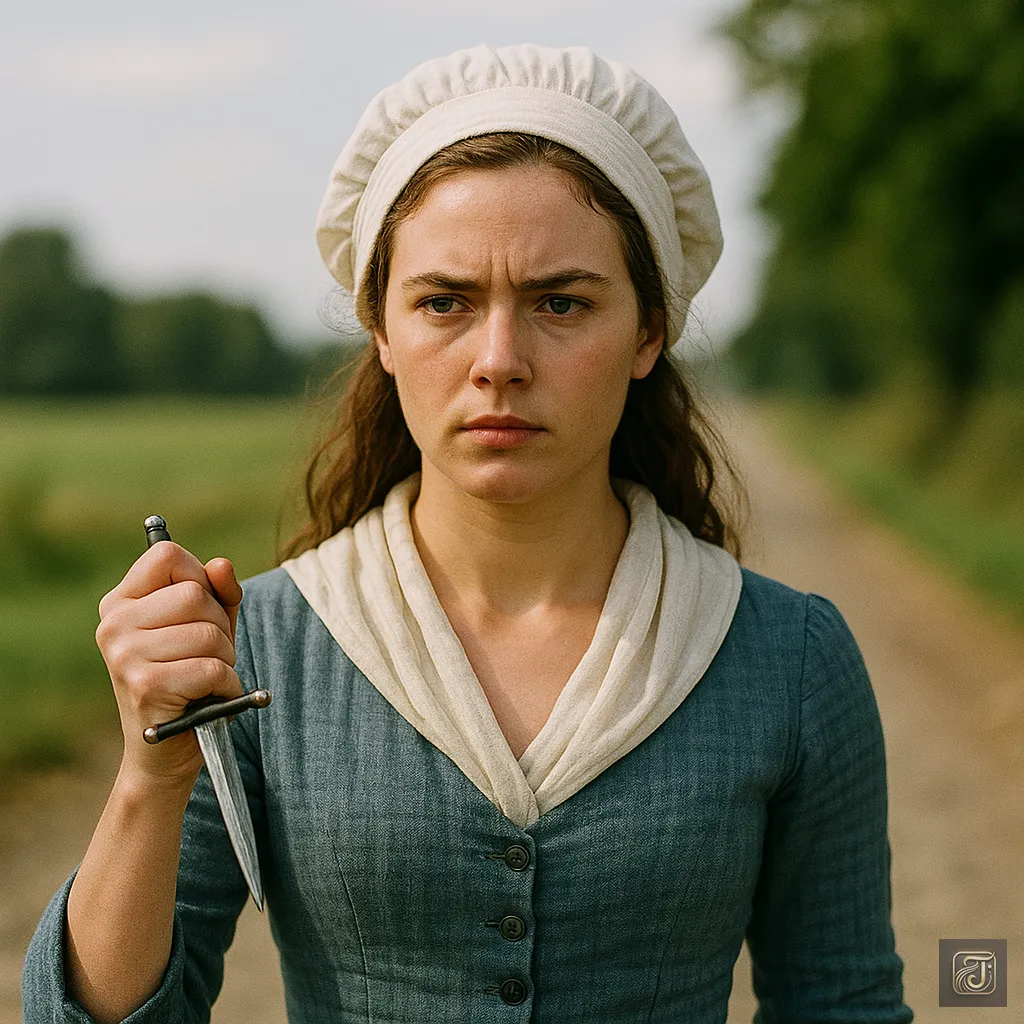
In her hand, she gripped a small dagger—its blade still untouched by blood, yet destined to play a role in one of the most dramatic moments in history.
Her destination: a quiet corner of Paris, where a single bathtub awaited.
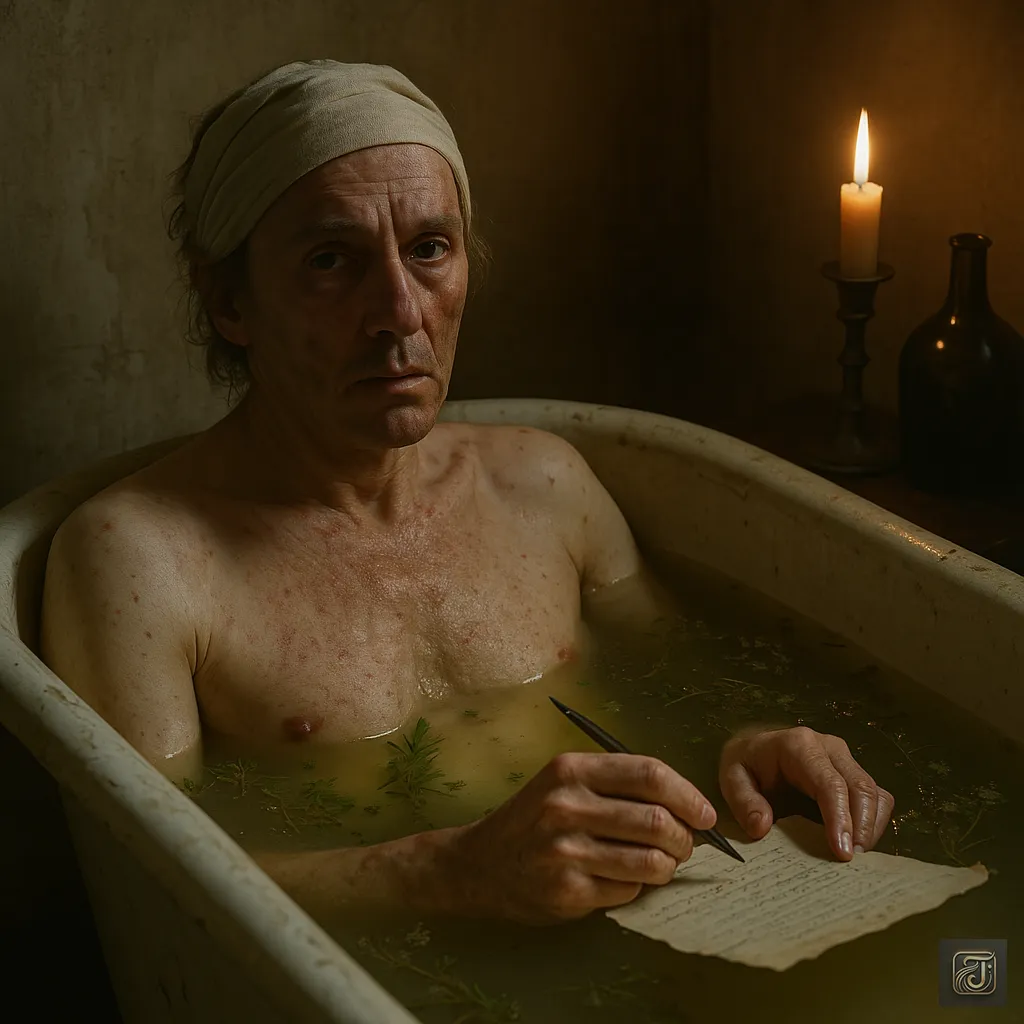
There, lying in that bathtub, was the man who incited the Reign of Terror and held the fate of France in his hands—Jean-Paul Marat.
Charlotte already understood her own fate.
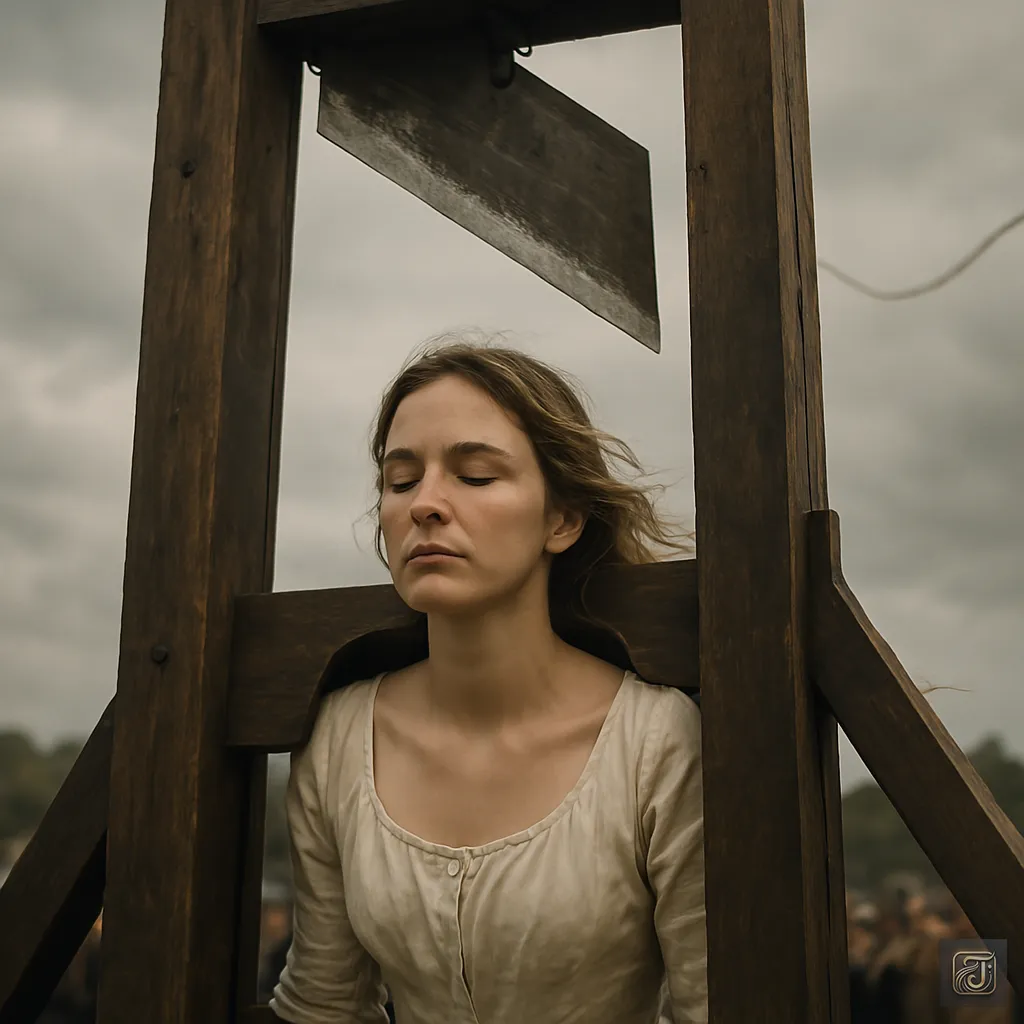
Charlotte Corday:
“Even if I die, liberty will live on.”
This is where the story of Charlotte Corday begins.
Chapter 1: The Girl from Normandy

On July 27, 1768, in a small village nestled in the lush greenery of Normandy, a baby girl was born.

Her name was Marie-Anne-Charlotte de Corday d’Armont.
Though she was born into a noble lineage, her family had already fallen into decline, and her life was far from one of luxury or splendor.
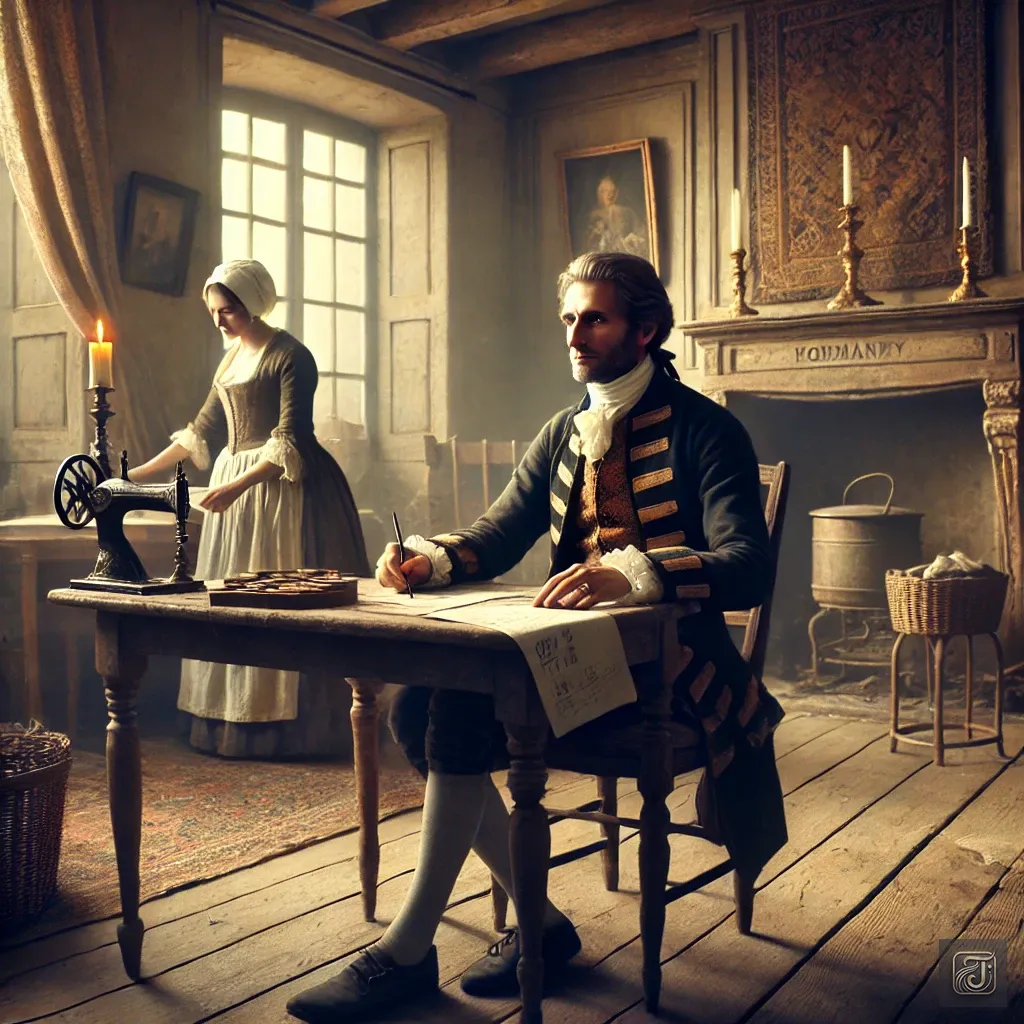
The Corday family, though still bearing traces of their former glory, were forced to live with modest means.
Her father was a proud man, struggling to keep the household finances afloat, while her mother remained the steady force, supporting the family through the trials of daily life.

Amidst such surroundings, Charlotte grew up to be a quiet and intelligent girl, finding joy in reading from an early age.
But her tranquil days would not last for long.
Chapter 2: Beyond the Convent Doors
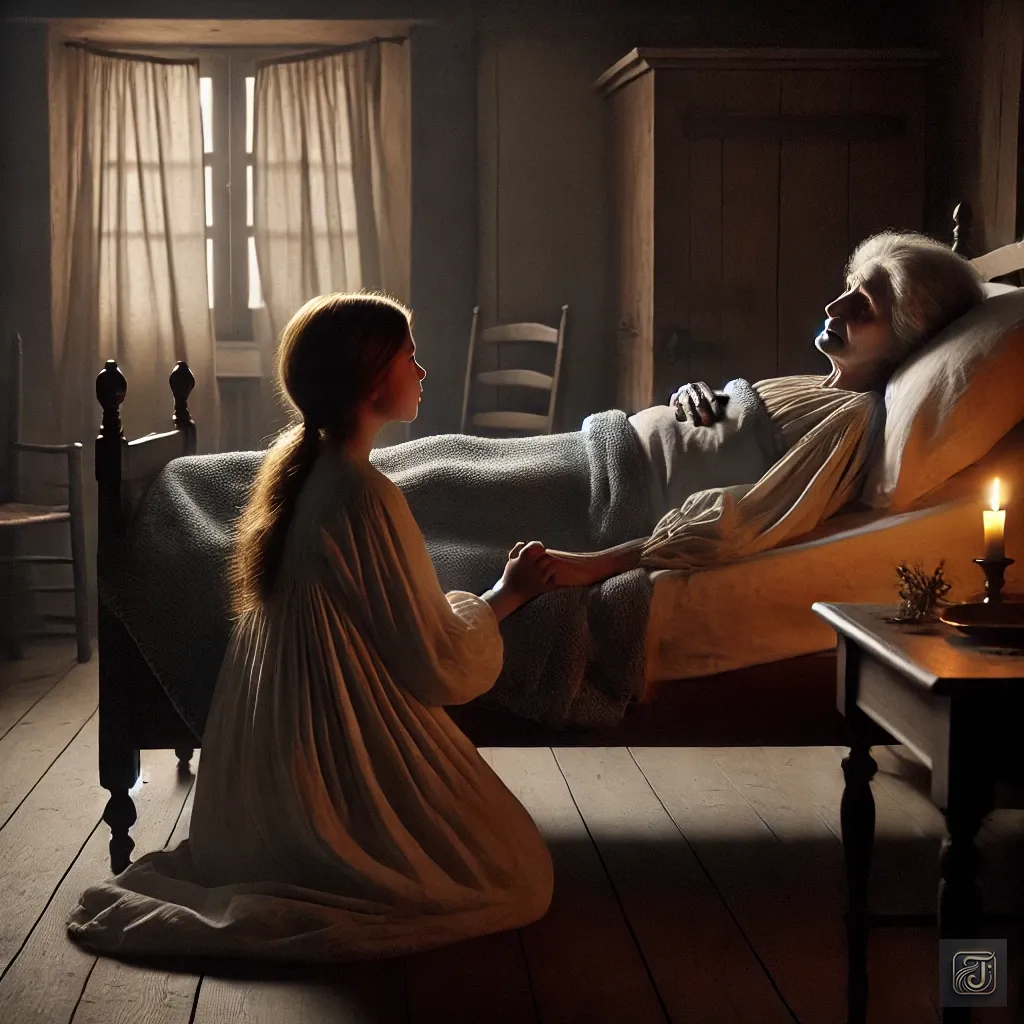
In 1782, the first great tragedy struck Charlotte Corday’s life.
Her mother fell gravely ill, and even in her youth, Charlotte witnessed the slow, heartbreaking decline of the woman who had always held the family together.
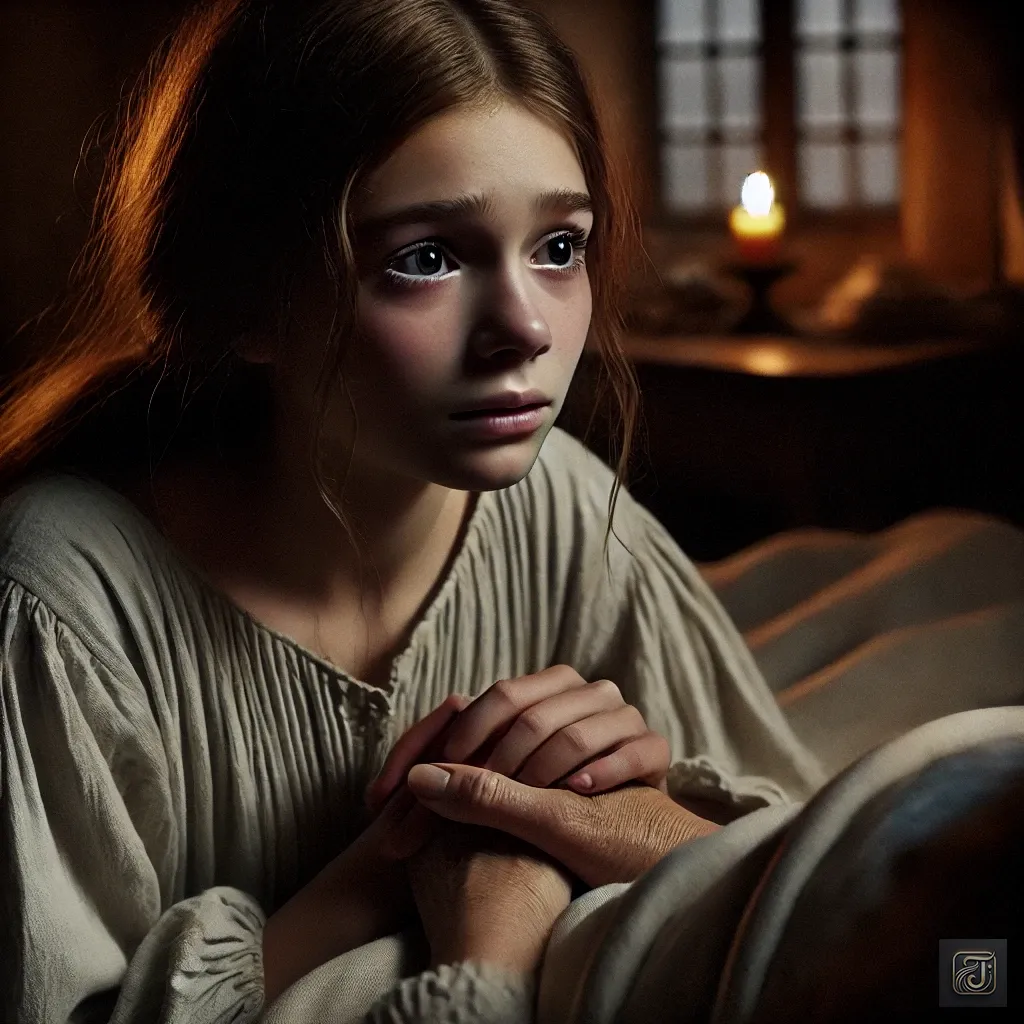
Charlotte Corday:
“Mama, please don’t leave me alone…”
Her prayers and pleas went unanswered.
Her mother passed away quietly, leaving behind a silence too heavy for a child to bear.
In that moment, something within Charlotte changed.
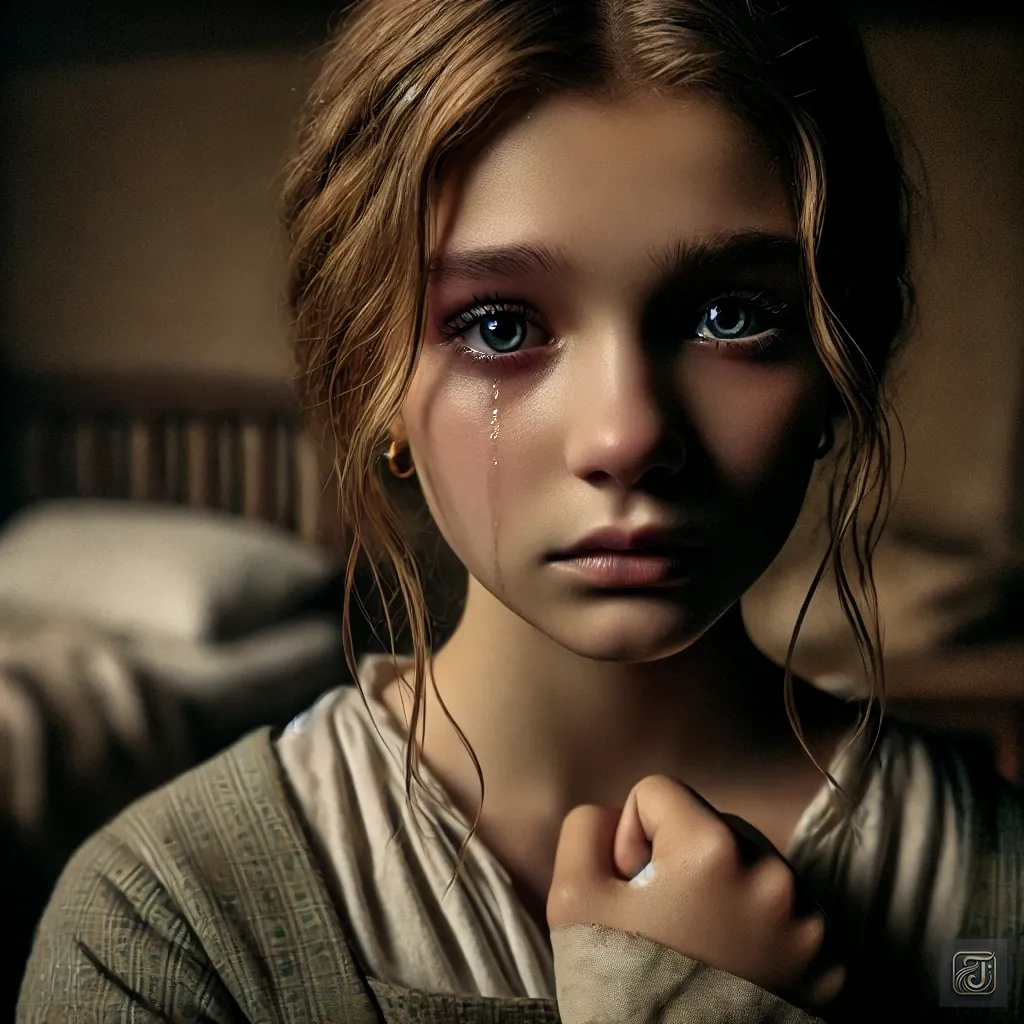
What took hold in her eyes was not mere sorrow, but something deeper—an emerging resolve to face whatever fate lay ahead.
Yet there was no time to linger in grief.
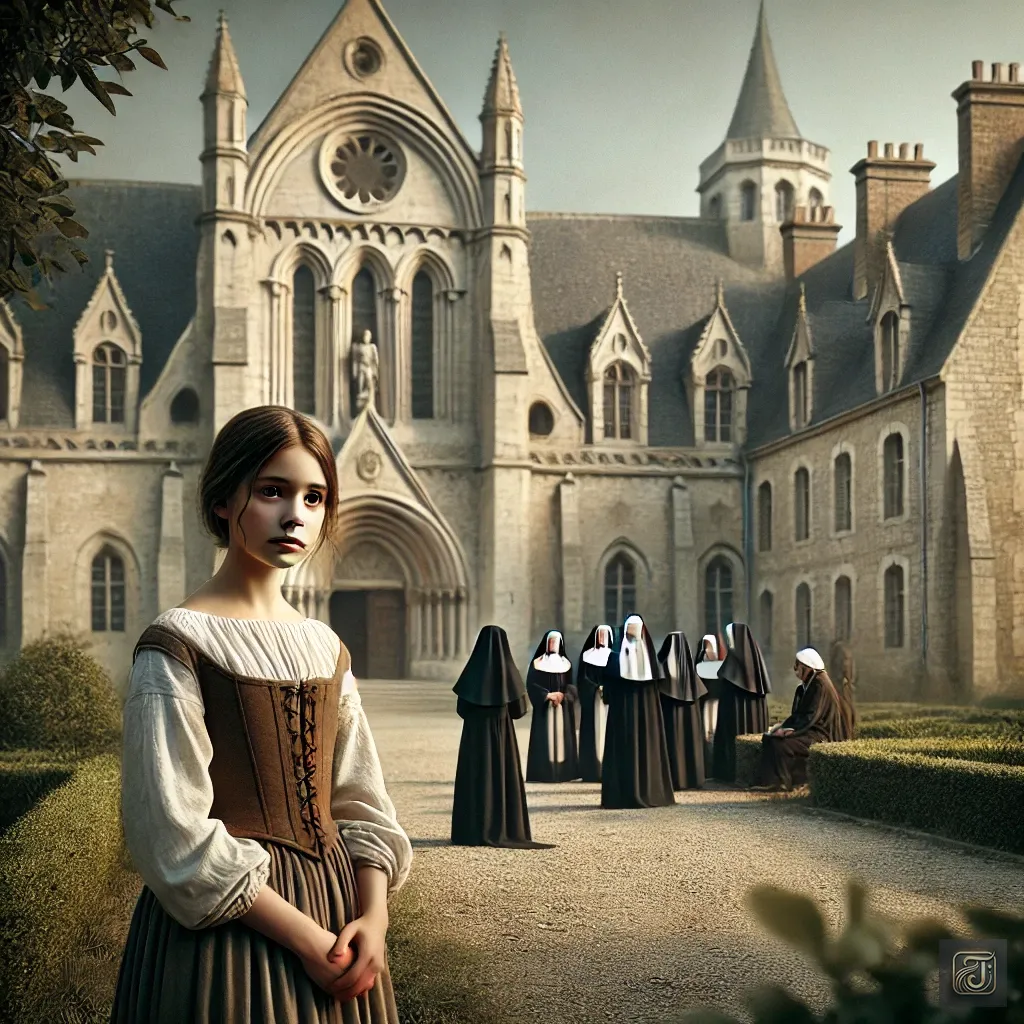
As the family’s circumstances grew increasingly dire, her father made the difficult decision to place her in the Abbaye aux Dames in Caen.
It was a place where nuns offered quiet prayers, and daughters of the nobility received their education.
The heavy sound of the convent doors closing echoed deep within her heart.
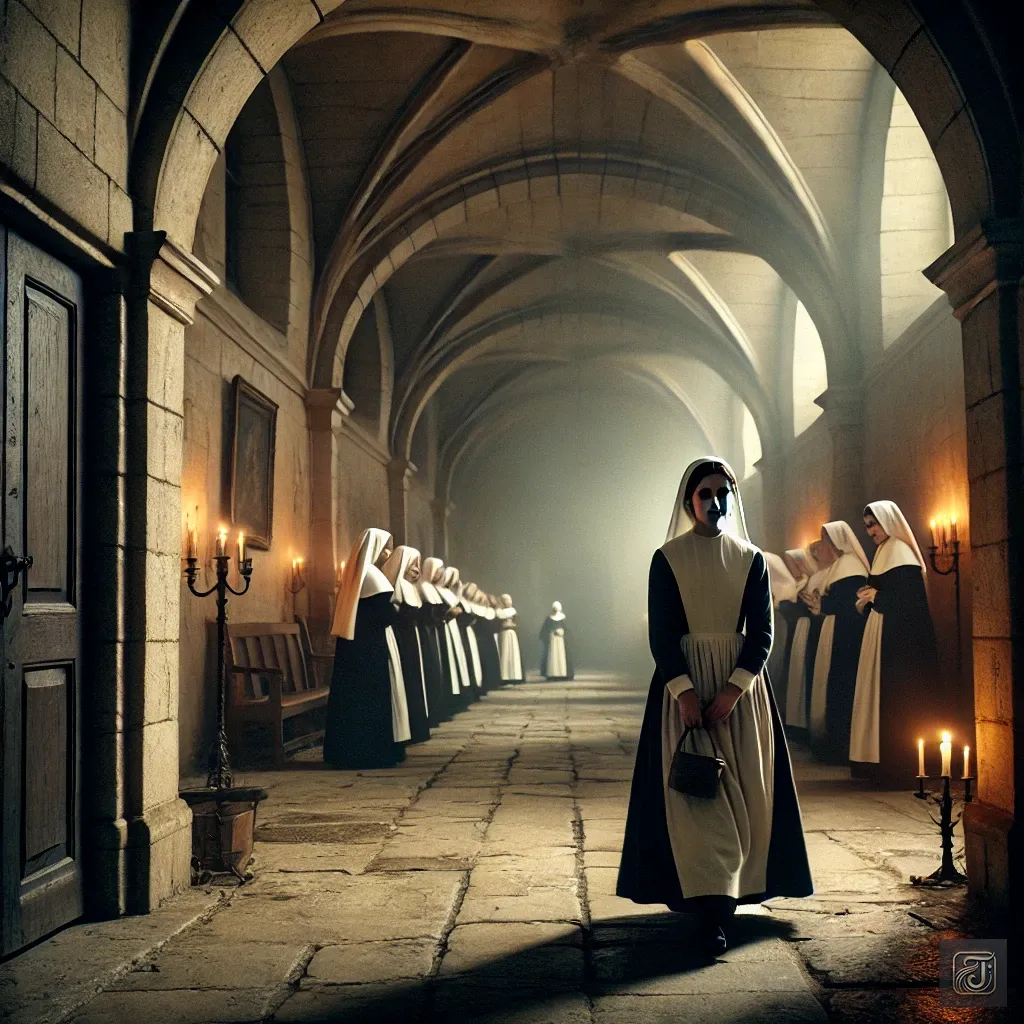
From that day on, a new chapter of her life began.
Life in the convent was strict.
Morning prayers, orderly meals, and studies conducted in silence.
Yet rather than feeling lonely, Charlotte immersed herself in books, discovering an entirely new world within their pages.

What captivated her most were the writings of Jean-Jacques Rousseau.
His words, imbued with the ideals of liberty and equality, ignited a powerful flame within her.

Jean-Jacques Rousseau:
“All human beings are born free and equal.”
These words pierced straight through her heart.
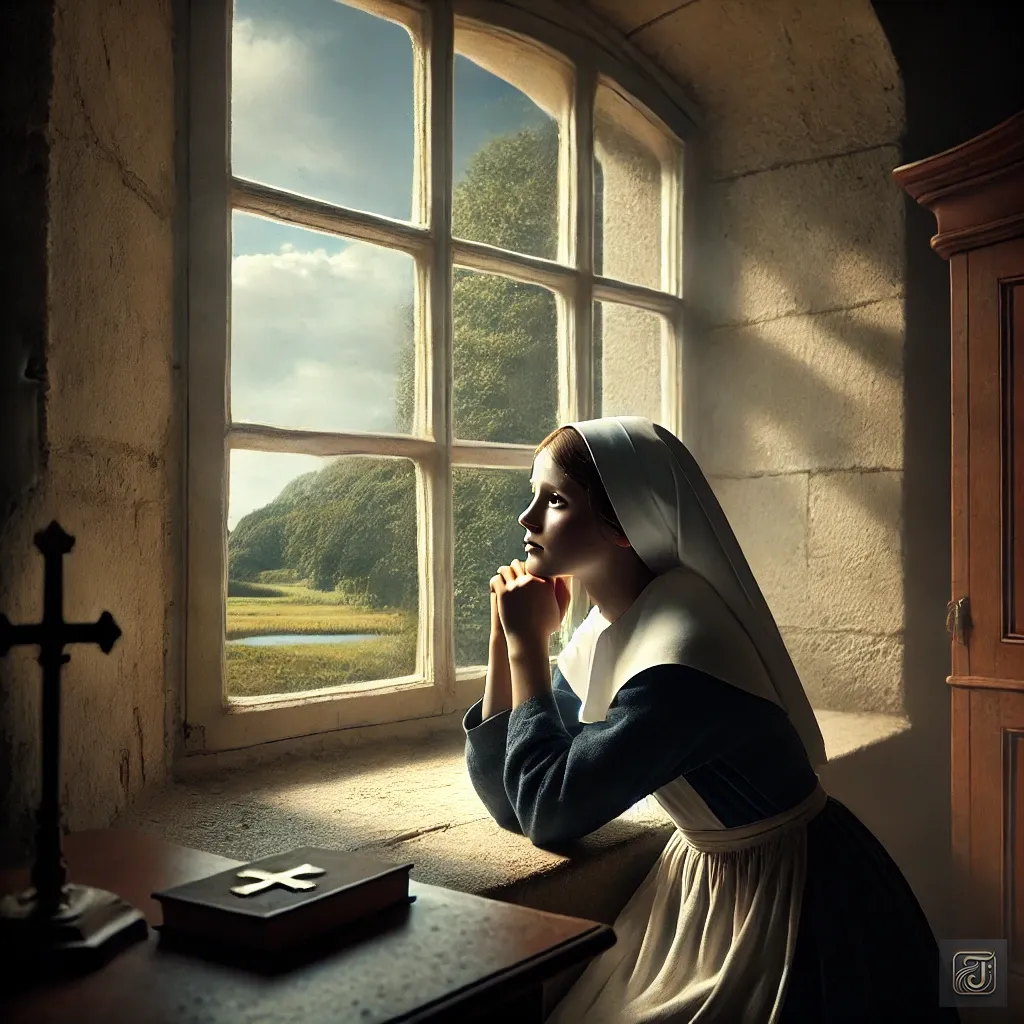
Though she had been just a country girl from Normandy, it was within the cloistered walls of the convent that she came to understand the vastness of the world.
And deep down, she instinctively knew—this was not the final destination of her life.
Far away in Paris, the tides of the revolution were beginning to stir—quietly, but inevitably.
Chapter 3: Within a World Shut Away

Around 1785
After evening prayers, Charlotte would quietly converse in the convent garden with her friend Marguerite.
Moonlight cast a soft glow over the lush green grass, and the night breeze gently stirred the hems of their habits.

Marguerite:
“Charlotte, you’ve been reading Rousseau again, haven’t you?”
Charlotte Corday:
“Yes.”
“The Social Contract.”
“His words have the power to change France.”
Marguerite:
“But… Priest said those kinds of books are dangerous—that they lead people astray.”
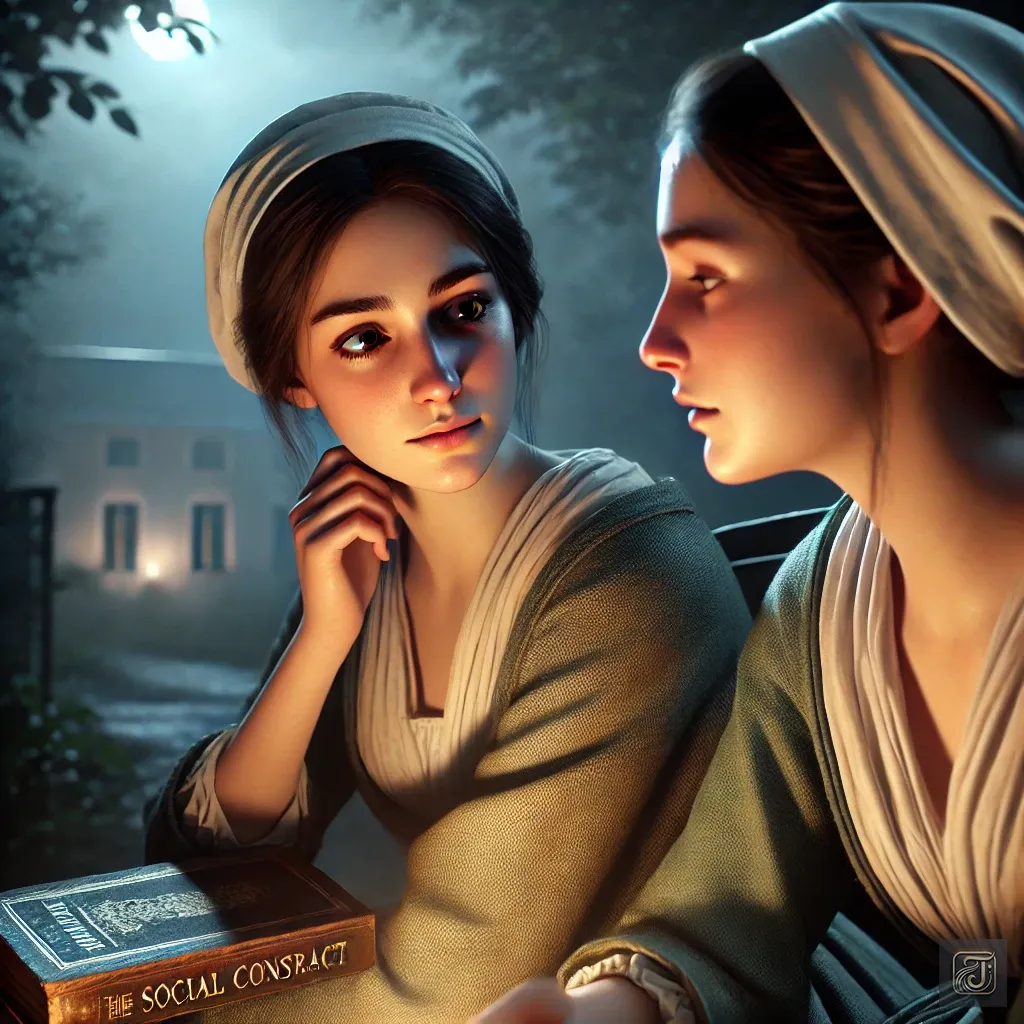
Charlotte Corday:
“Dangerous?”
“Of course, Priest would say that.”
“Because inequality works in his favor.
“What happens if liberty and equality are recognized?”
“The exemption of taxes for nobles and clergy would collapse.”
“The system that forces only the commoners to pay would fall apart.”
“And the clergy—he—would lose his power and status. Naturally, he doesn’t want that.”
“He opposes it because he’s afraid to let go of his power.”
“That’s why he denies liberty and equality.”
Marguerite:
“But… do we women even have equality?”
“As long as we’re here, we serve God.”
“Unless we marry, we have no other path but life in the convent.”
Charlotte Corday:
“But why is that accepted as normal?”
“Why don’t we have the right to choose?”
Marguerite:
“…I’ve never even thought about that.”
Charlotte looked up at the night sky.
Through the gaps in the clouds, stars were quietly twinkling.

Charlotte Corday:
“The nobility and monarchy are nothing more than false systems created by the wealthy to protect their own fortunes.”
“We are born equal and free.”
“No one should have the right to decide our fate for us.”
Marguerite:
“But the world doesn’t work that way… We’re daughters of the nobility.”
“Our only paths are marriage or the convent.”
Charlotte Corday:
“The world will change.”
“Beyond France, new ideas are already spreading.”
Marguerite:
“…But how?”
Charlotte Corday:
“One day, I will leave this place… and find a path of my own.”
Marguerite gazed at Charlotte’s profile and let out a quiet sigh.

Marguerite:
“Charlotte, you’re so much stronger than I am… I’m scared.”
“Even if someone promised me a life of equality and freedom, I wouldn’t know what that even looks like.”
Charlotte:
“So am I.”
“It’s frightening to step into a world you don’t know.”
“But that’s exactly why I want to see it.”
The moon slipped behind the clouds, and the garden fell into silence.
Soon, the convent bell rang, signaling the deepening of the night.
Chapter 4: The Winds of Revolution
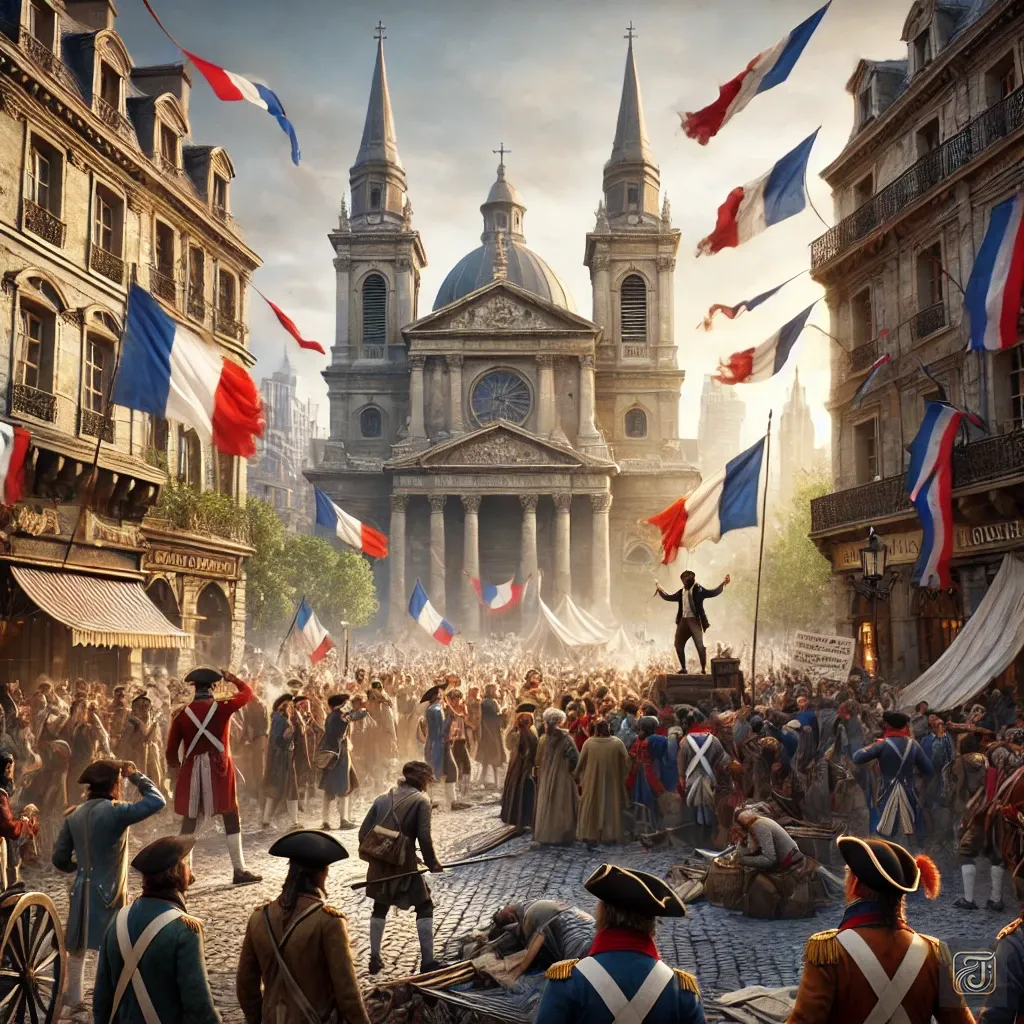
In 1790, the footsteps of a new era echoed across the land of France.
Waves of revolution shook the entire nation, toppling the authority of the monarchy and the Church one after another.
And even the convent in Caen was not immune to the upheaval.

The convent is being shut down.
One day, the news reached Charlotte’s ears.
The convent, long a place of study and silence, was to be abolished under the revolutionary government’s policies.
What once felt like distant rumblings from far-off Paris had now begun to touch her own life.
She could have chosen to remain and live as a nun—but she didn’t.
Instead, she made the decision to leave and take refuge with relatives living in Caen.

On the day the convent doors closed for good, she did not look back—and instead, walked forward toward a new future.

The town of Caen was a world entirely different from the convent.
Revolutionary ideas were spoken of everywhere, and in the public squares, passionate speeches echoed through the air.
Liberty, equality, fraternity—these words ignited the hearts of the people like a new kind of faith.
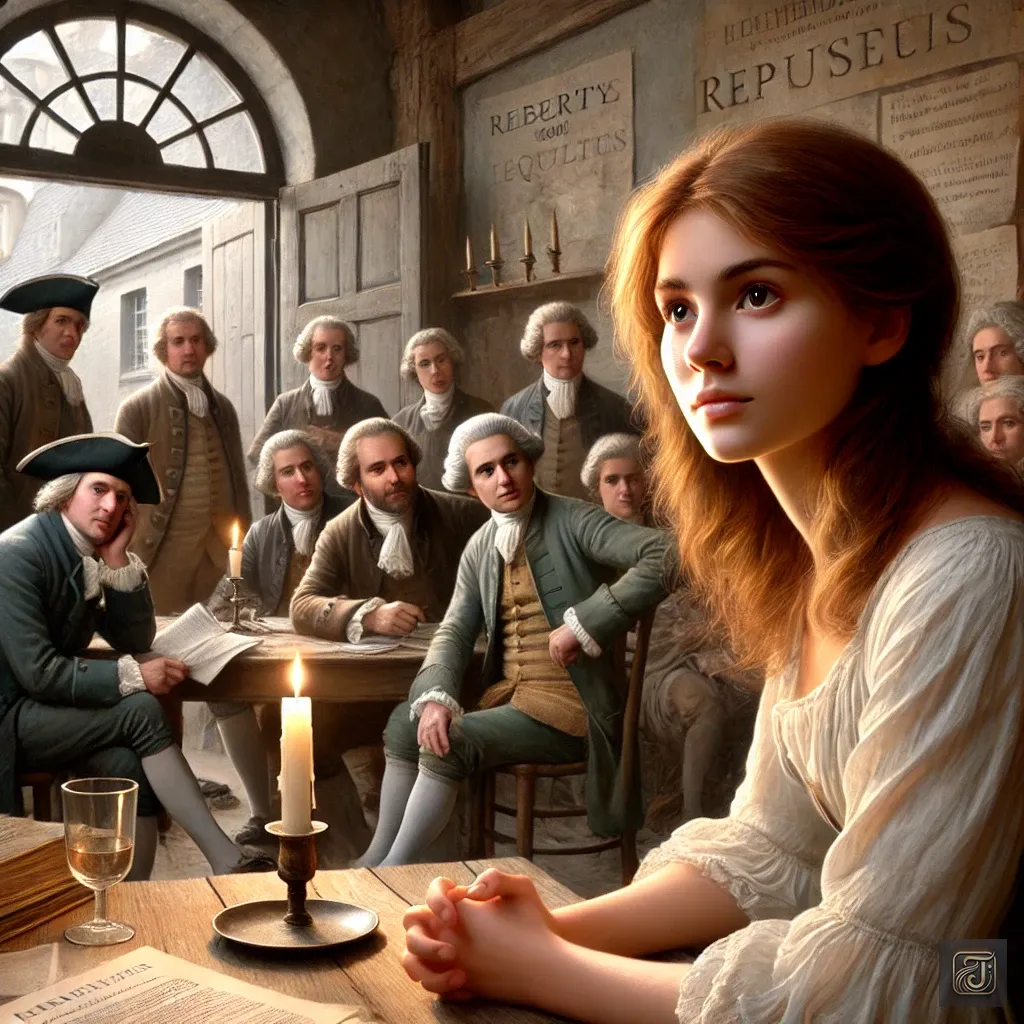
Charlotte gradually found herself drawn to the ideals of the Girondins.
They opposed radical violence and sought a peaceful, idealistic form of republicanism.
To her, their vision resonated deeply with the philosophy of Rousseau.
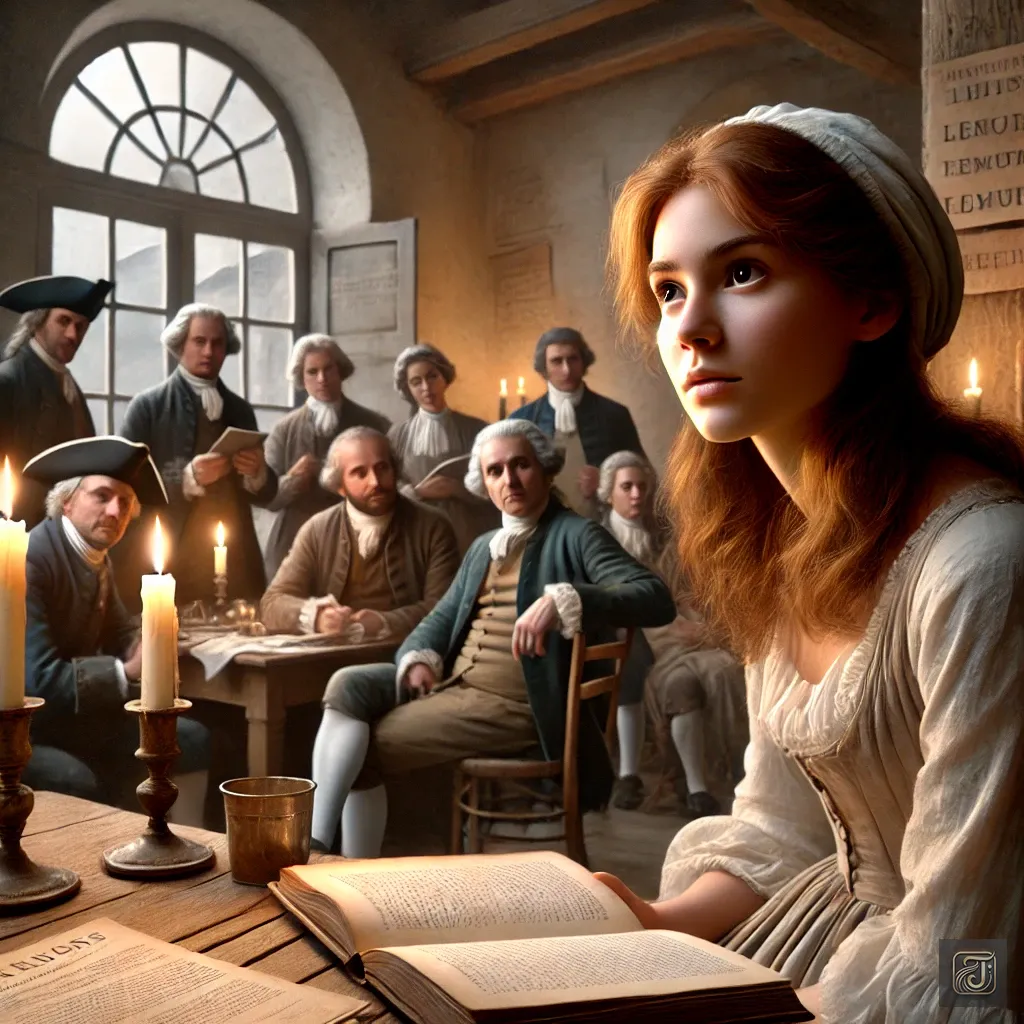
Charlotte Corday:
“This country needs a just revolution.”
She read voraciously, listened intently to debates, and searched for her place within the storm of revolution.
Should she live as one who fights for liberty—or try to avoid being swept away by the rising tide?

But soon, she would come to understand—
That revolution was not merely an ideal, but something that could also claim human lives.
Chapter 5: The Shadow of the Revolution

Between 1791 and 1792, the French Revolution entered a new and darker phase.
What had begun in the name of liberty and equality was now transforming into a struggle soaked in blood and fear.
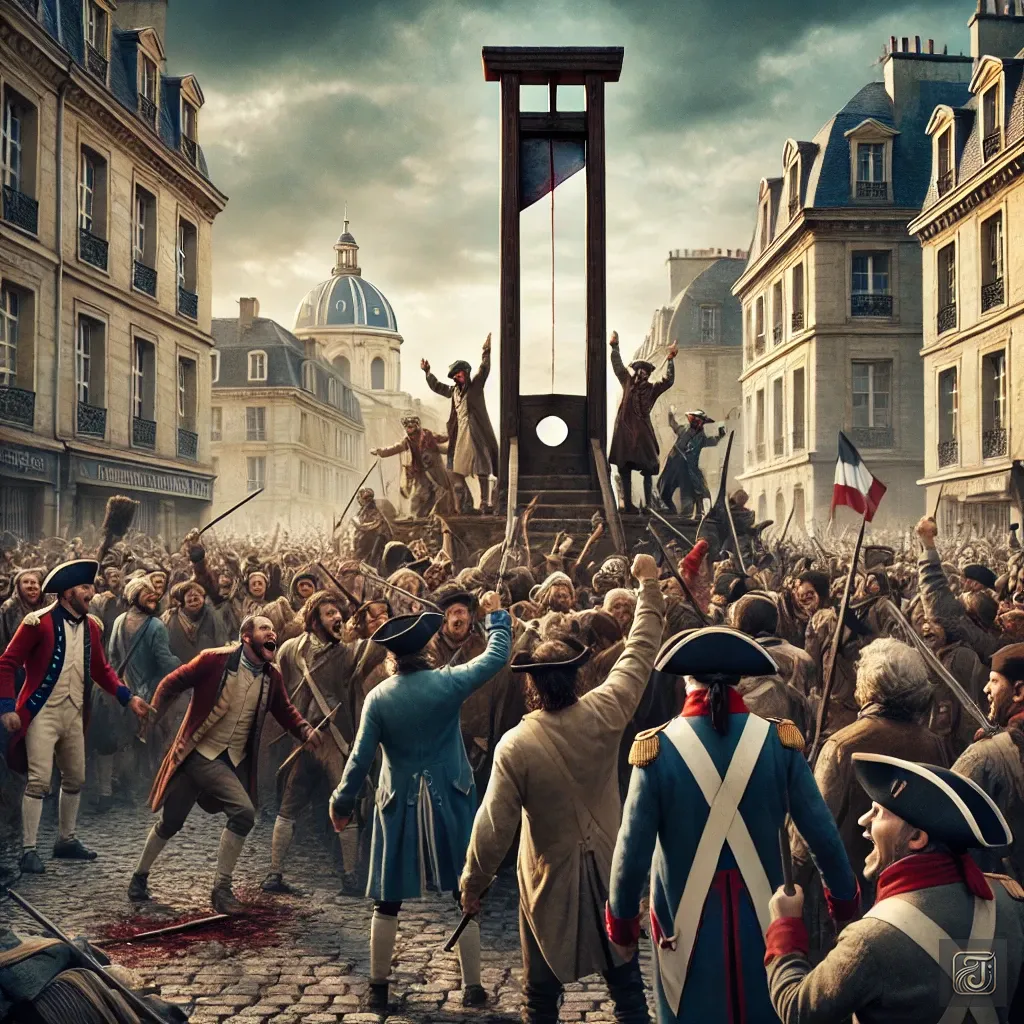
In Paris, the fever of revolution grew stronger by the day, and the power of King Louis XVI was rapidly crumbling.
Crowds filled the streets, shouting for the downfall of the monarchy, while in the squares, the guillotine’s blade fell again and again.
Behind this rising tide stood a force known as the Jacobins.
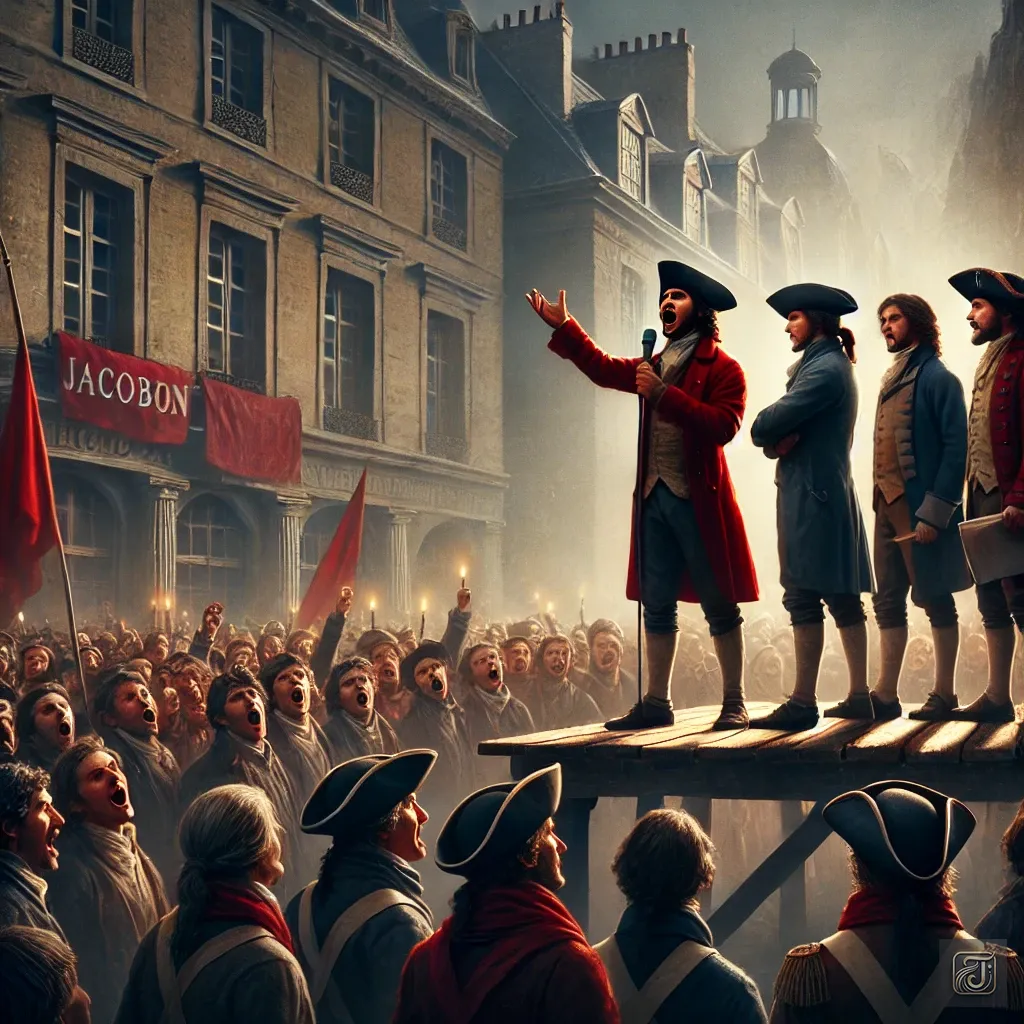
The Jacobins believed that in order to carry the revolution through to its end, ruthless purges were necessary.
Their speeches grew increasingly extreme, and anyone who opposed them was swiftly branded a “counter-revolutionary.”
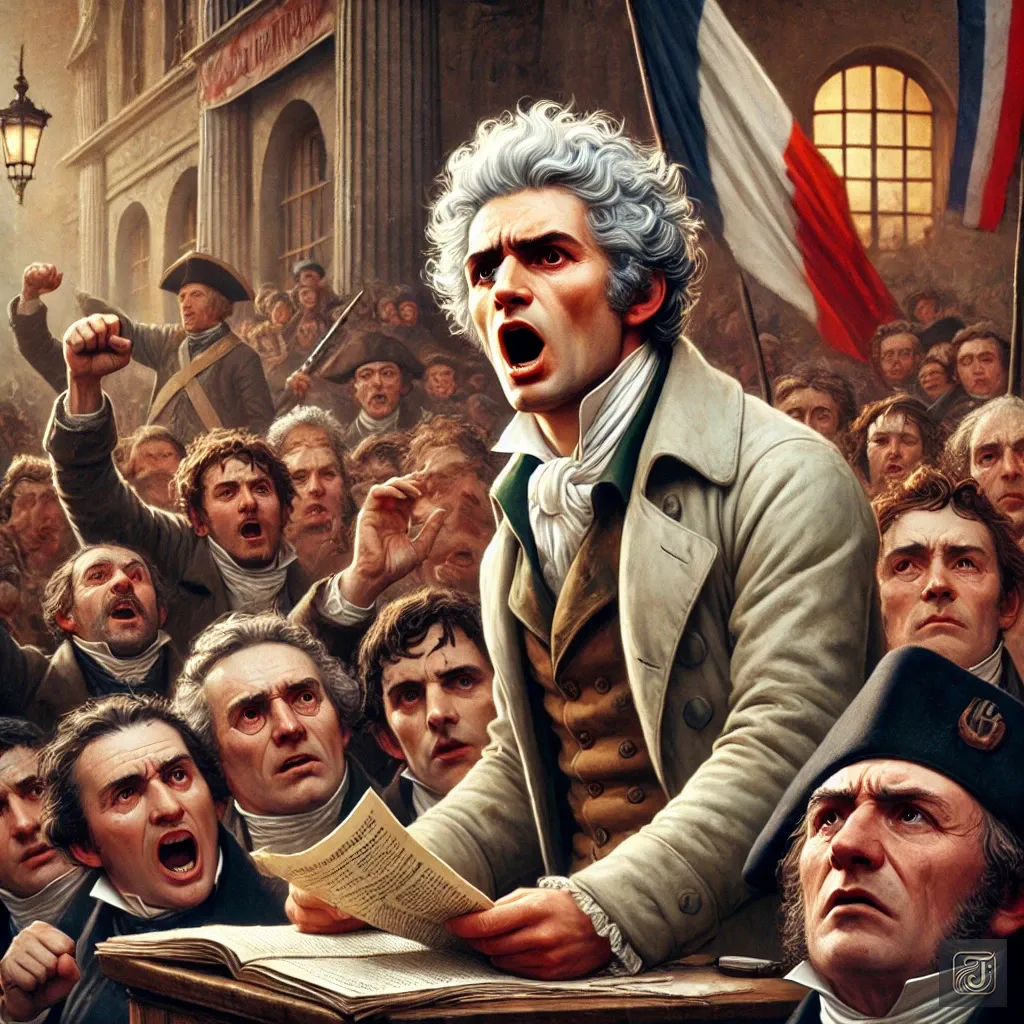
One of their key leaders, Jean-Paul Marat, continued to stoke the flames of public fury with his fierce and incendiary words.
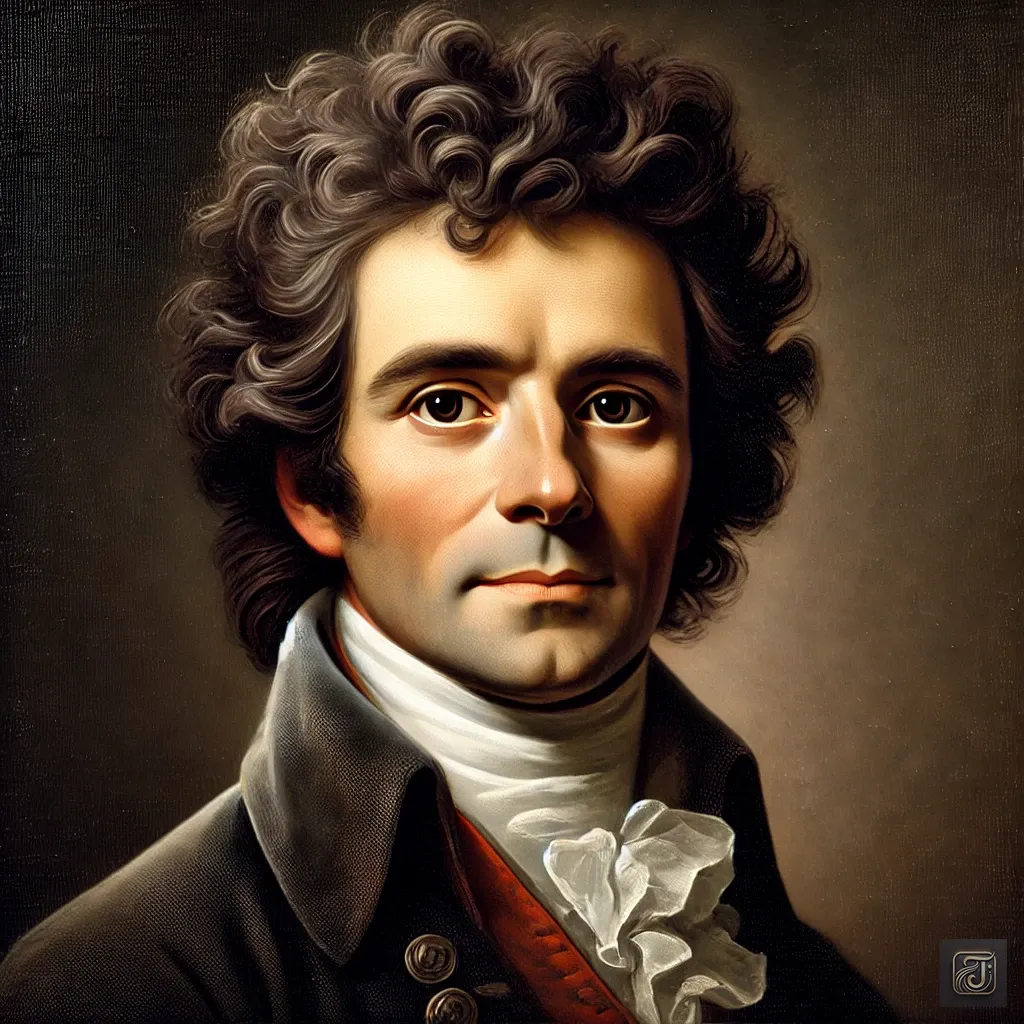
Jean-Paul Marat
Jean-Paul Marat was one of the most radical voices of the French Revolution.
A journalist, physician, and fierce supporter of the Jacobins,
he wrote passionately in L’Ami du Peuple (The Friend of the People),
demanding the execution of those he deemed enemies of the revolution.
Confined to his bathtub due to a painful skin condition, he became both a symbol and a shadow of revolutionary paranoia.
To his supporters, he was a guardian of liberty.
To his enemies, he was an instigator of bloodshed.
And to Charlotte Corday—he was a threat to peace.
A man whose death, she believed, might save the soul of a dying Republic.
Meanwhile, another faction was quietly attempting to resist.

The Girondins—advocates of a moderate republic, they rejected the use of extreme violence.
Charlotte found herself increasingly drawn to their ideals.
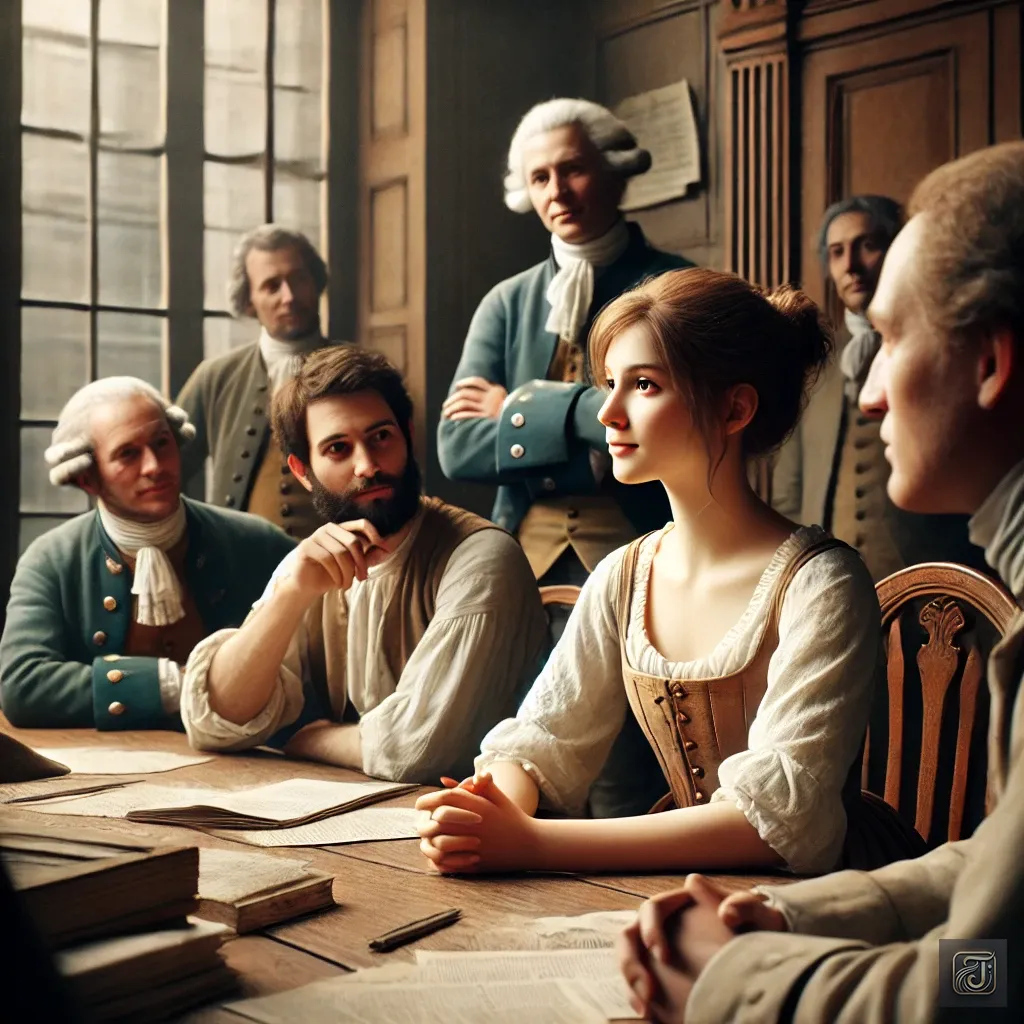
Charlotte Corday:
“Revolution should strive for ideals, not bloodshed…”
In the town of Caen, she began to deepen her ties with supporters of the Girondins.
She listened to their debates, exchanged letters, and gradually, her own convictions began to solidify.
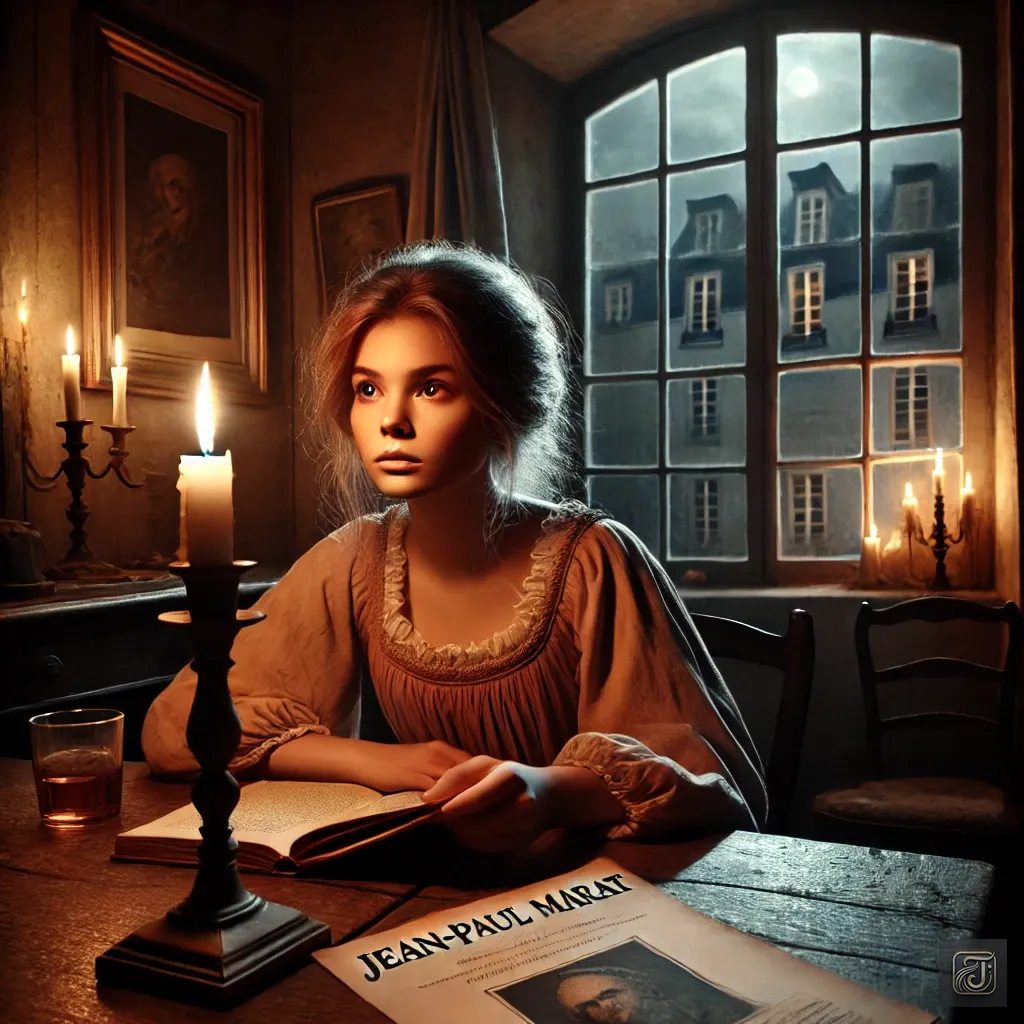
Within her heart, a quiet hatred toward the Jacobins’ violence began to take root.
And at the end of that hatred, one name rose to the forefront—
The man who was shaping the fate of France: Jean-Paul Marat.
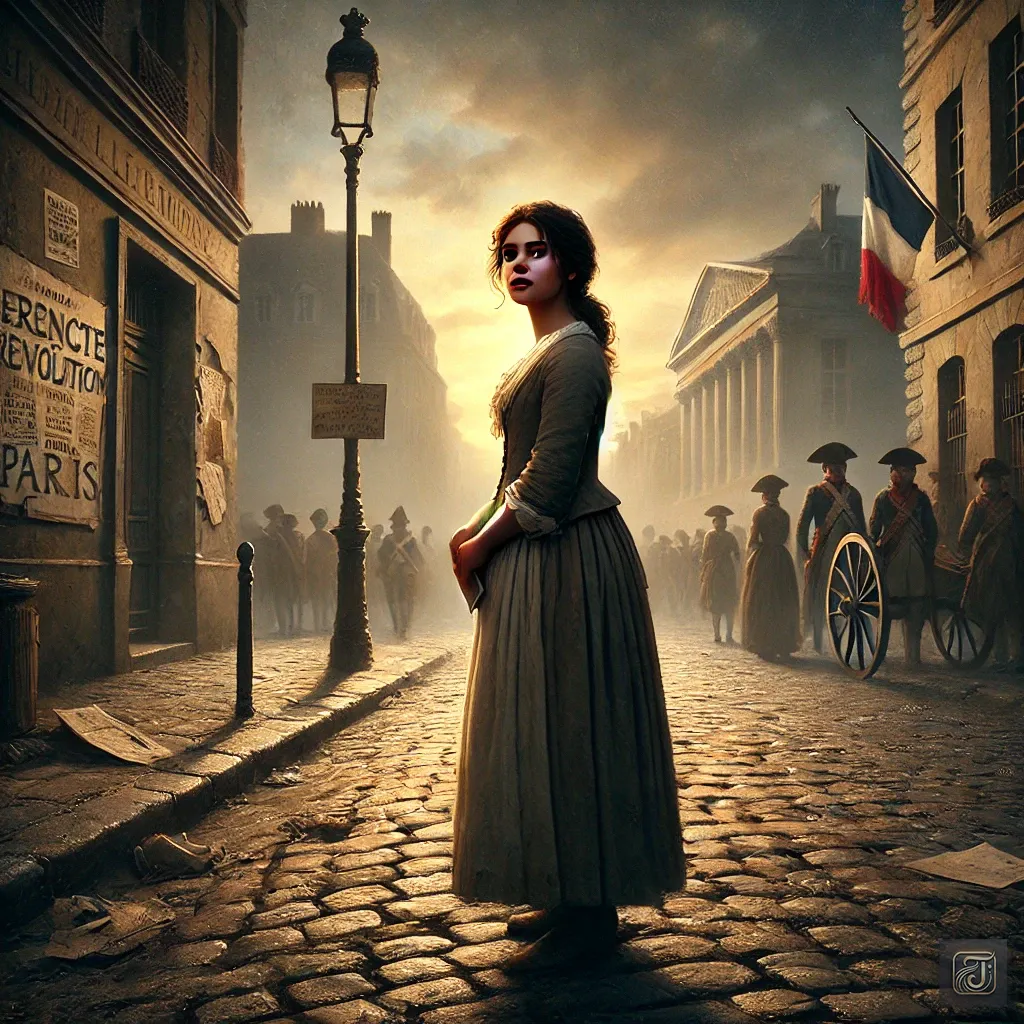
Charlotte Corday did not yet know what path lay ahead of her.
But soon, her name would become one that history would never forget.
The tide of revolution was rising—and it was beginning to pull her under.
Chapter 6: Justice Stained with Blood
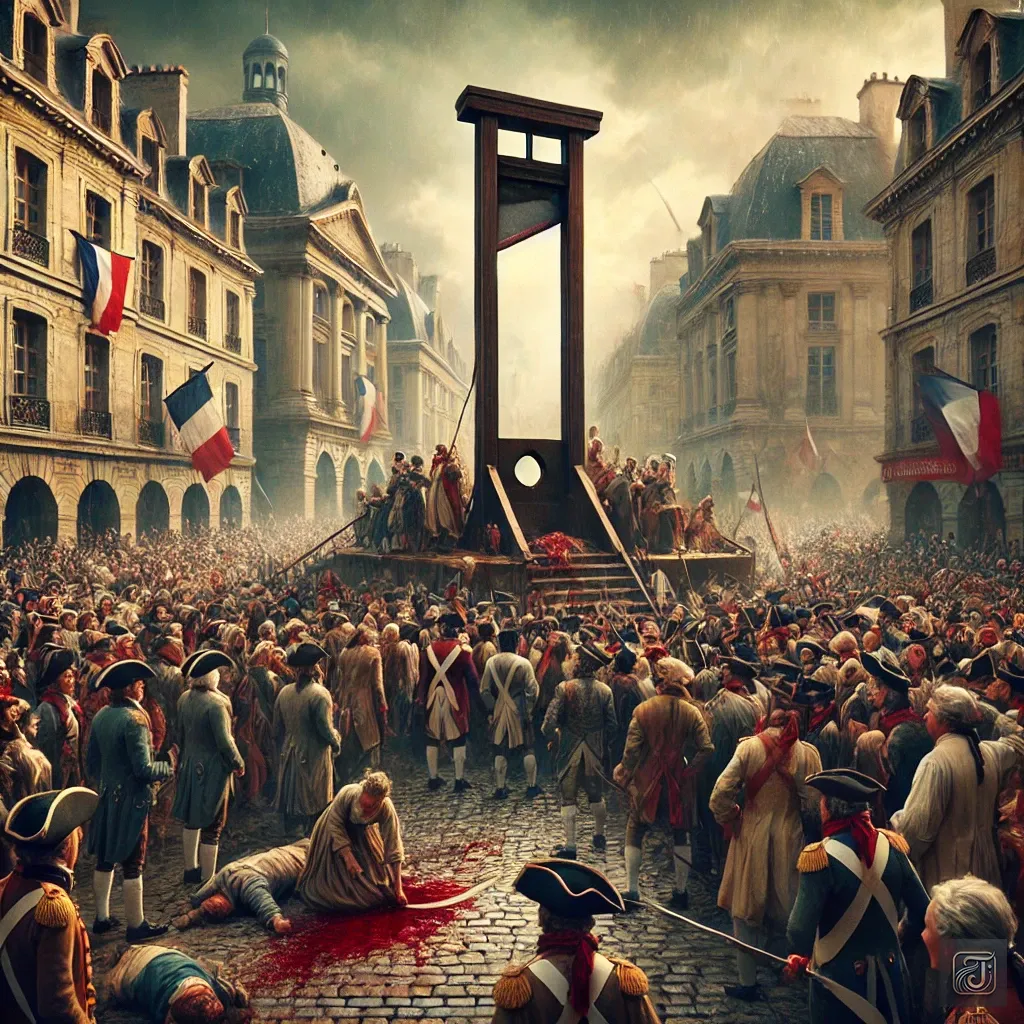
June 1793. The city of Paris was gripped by madness like never before.
Under the rule of the Jacobins, the guillotine continued its relentless descent—even as they proclaimed “liberty” and “equality.”
Cheers and screams echoed through the Place de la Révolution day and night, becoming a disturbingly normal part of daily life.
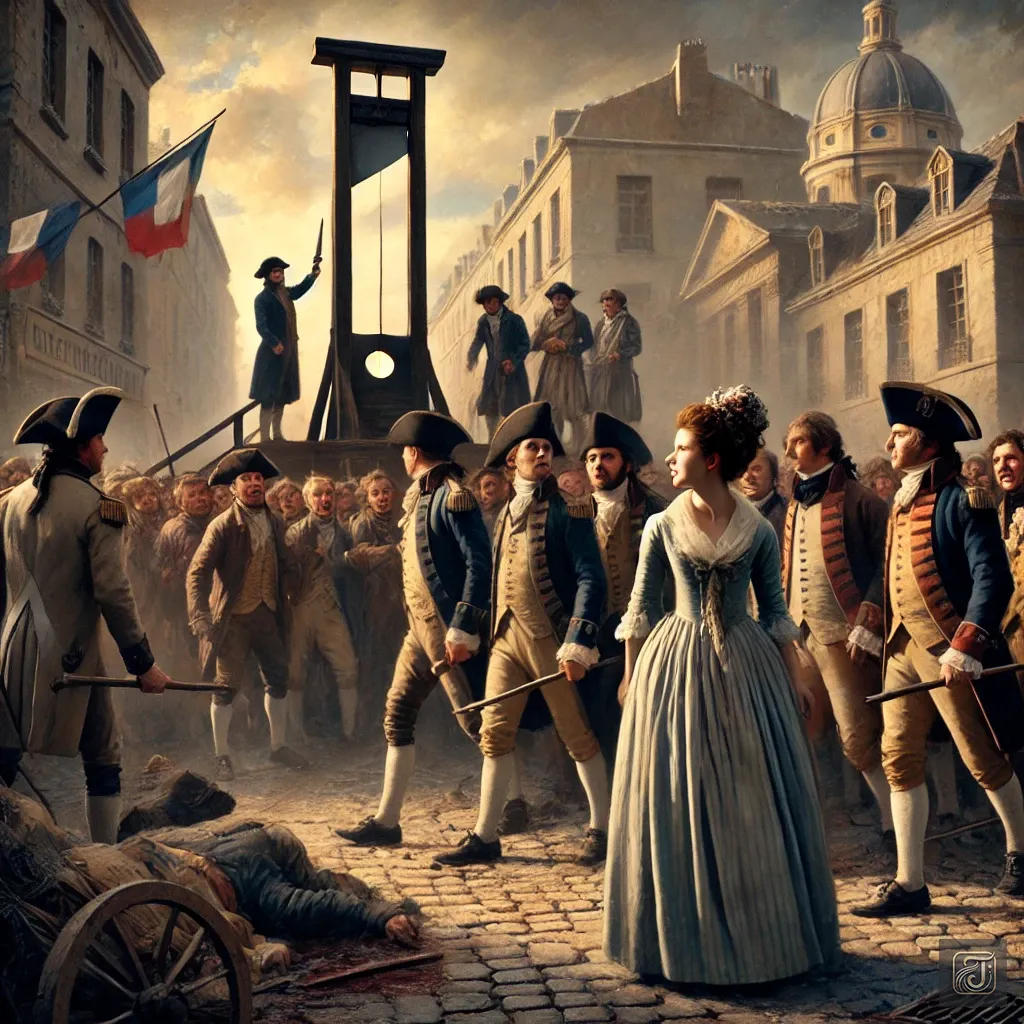
One day, as Charlotte Corday walked through the marketplace, she heard a strange commotion coming from the direction of the square.
A crowd had gathered, their voices rising in fevered excitement.
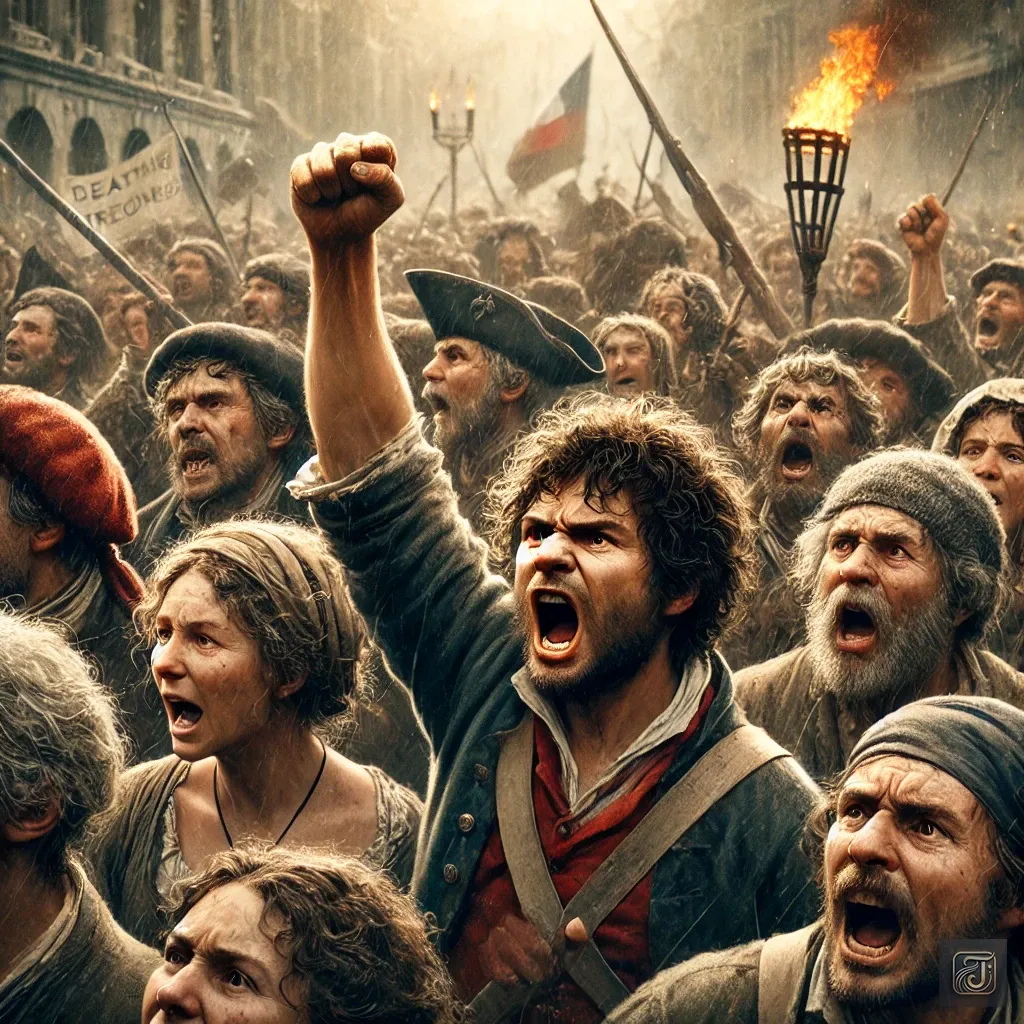
Jacobins:
“Justice for the counter-revolutionary swine!”
“Death to the enemies of liberty!”
Charlotte turned her gaze toward the square. A group of men stood lined up on the scaffold.
They were Girondin deputies.
Branded as “counter-revolutionaries” by the revolutionary government, they had been sentenced to death with barely the semblance of a trial.

One of the deputies:
“We have not betrayed France!”
“We only sought a true republic!”
One of the deputies cried out.
But his voice was drowned in the roar of the mob.
Beside him stood his pale-faced wife and young daughter.
The mother, sobbing, clung to her husband’s arm, desperately pleading with the soldiers.
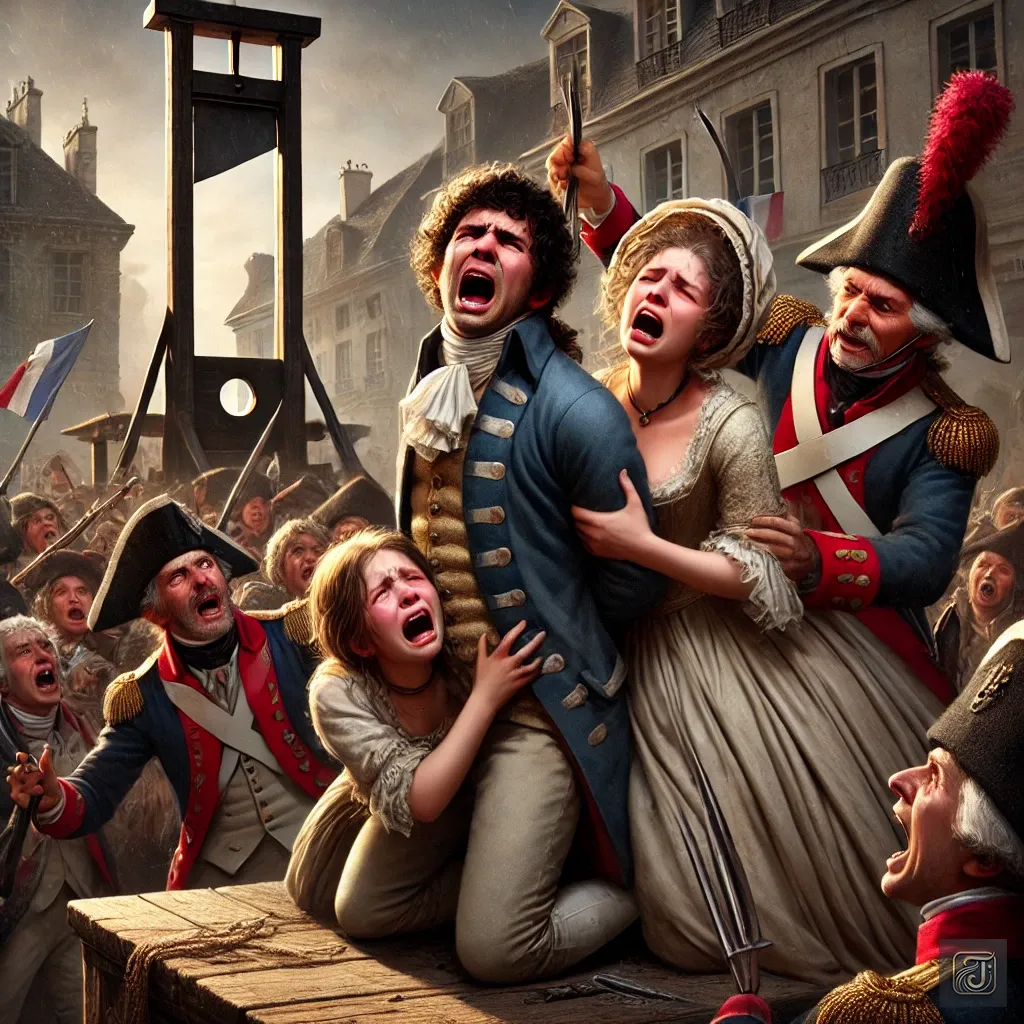
The wife:
“Please!”
“He’s innocent!”
“I beg you… Please, save him!”
The daughter:
“Don’t take Papa away!”
The soldier coldly pried the woman off, and the daughter shrieked in anguish.
But the soldier showed no mercy—he shoved the girl aside without hesitation.
She tumbled to the ground, crying, her eyes locked on her father.
And as she wept, the executioner closed the collar of the guillotine with merciless finality.
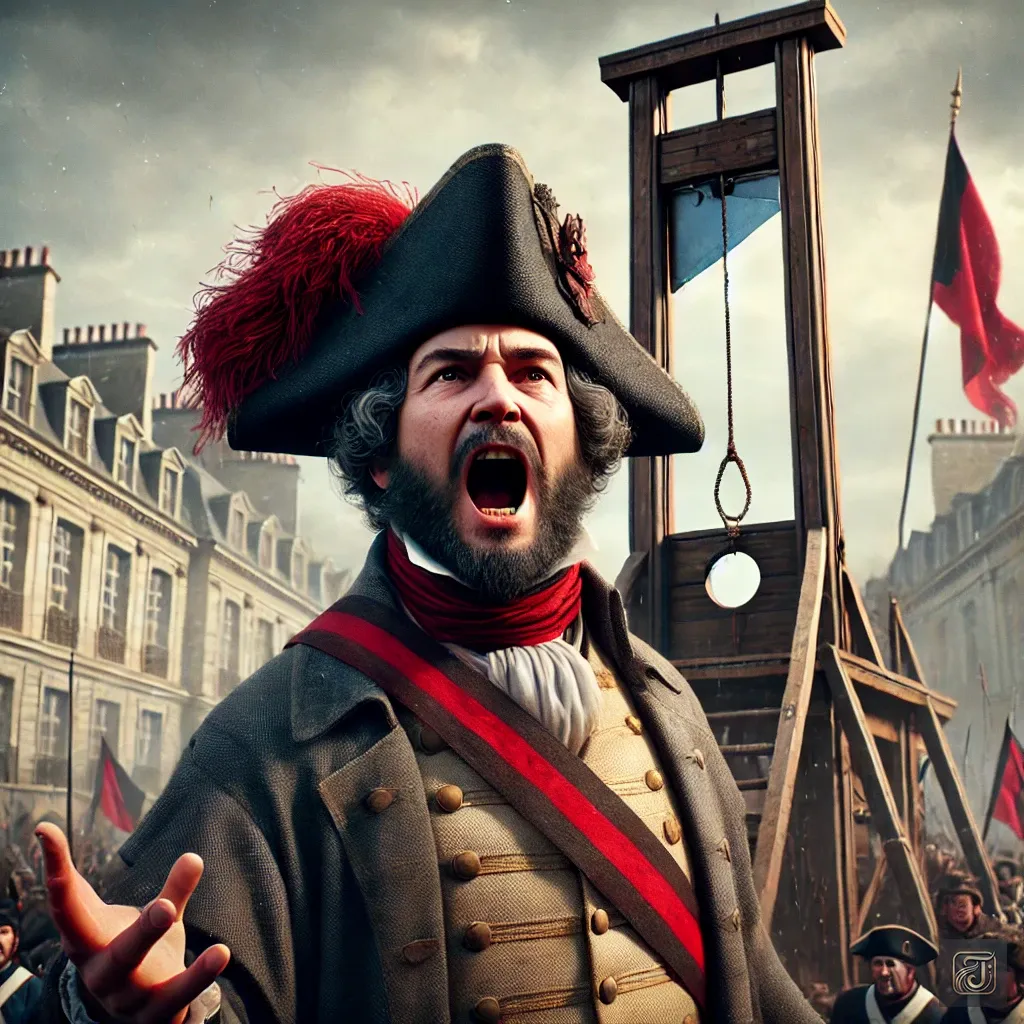
The executioner:
“The crime: opposing the Jacobins.”
“This is the justice of the Revolution.”
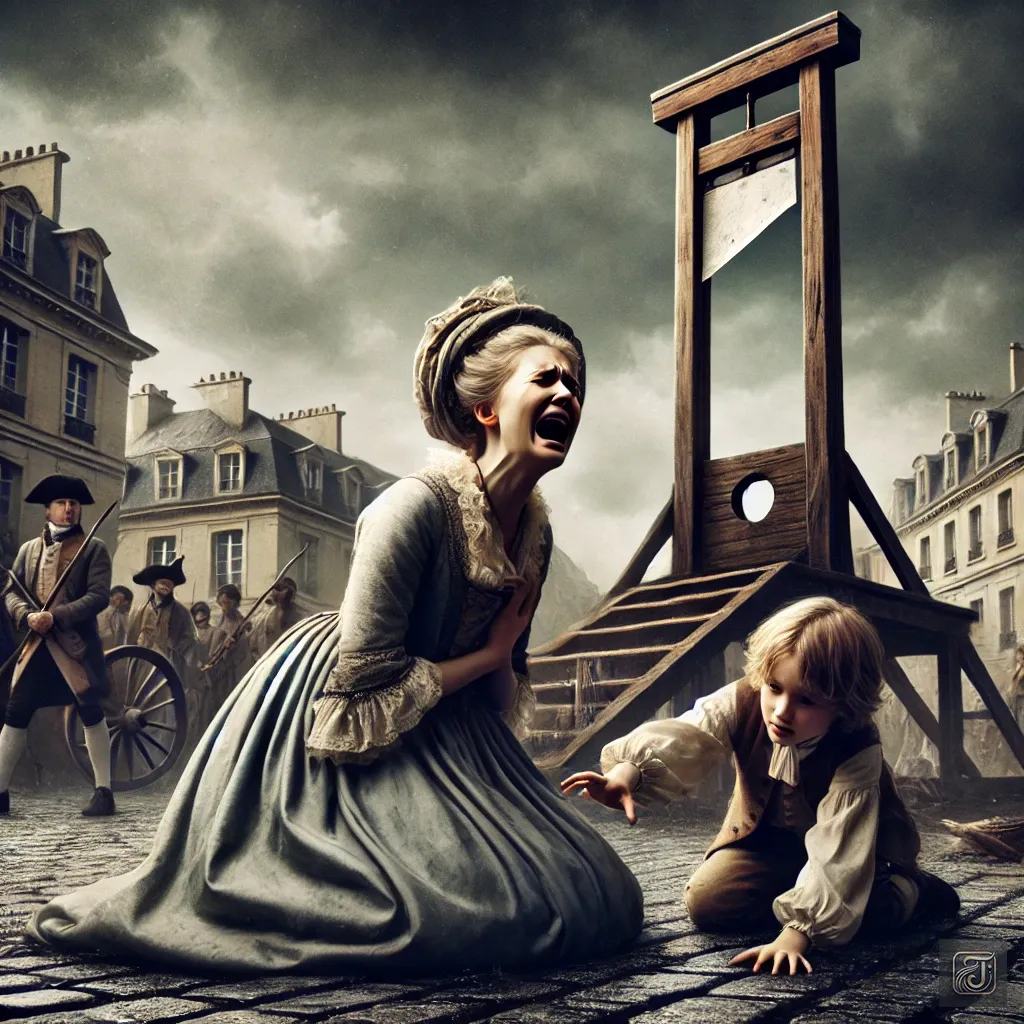
With the executioner’s words, the blade of the guillotine came crashing down.
The man’s head rolled to the ground, and blood soaked into the earth.
His wife collapsed in tears, and the girl tried to run to her father’s lifeless body—only to be held back by the soldiers.
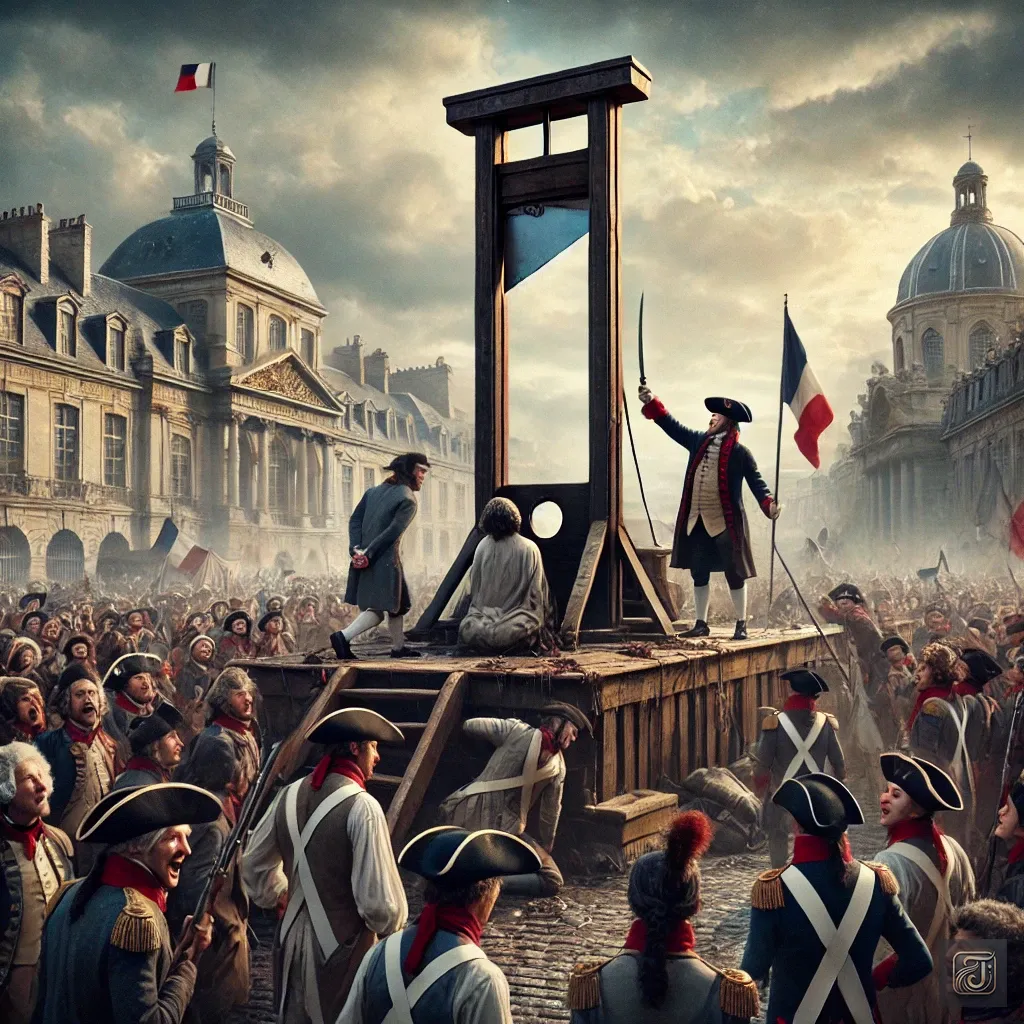
The executioner:
“Next!”
The executioner’s cold voice rang out across the square.

Charlotte Corday:
“This is no revolution.”
“It’s nothing but slaughter.”
Charlotte clenched her fists, trembling with rage.
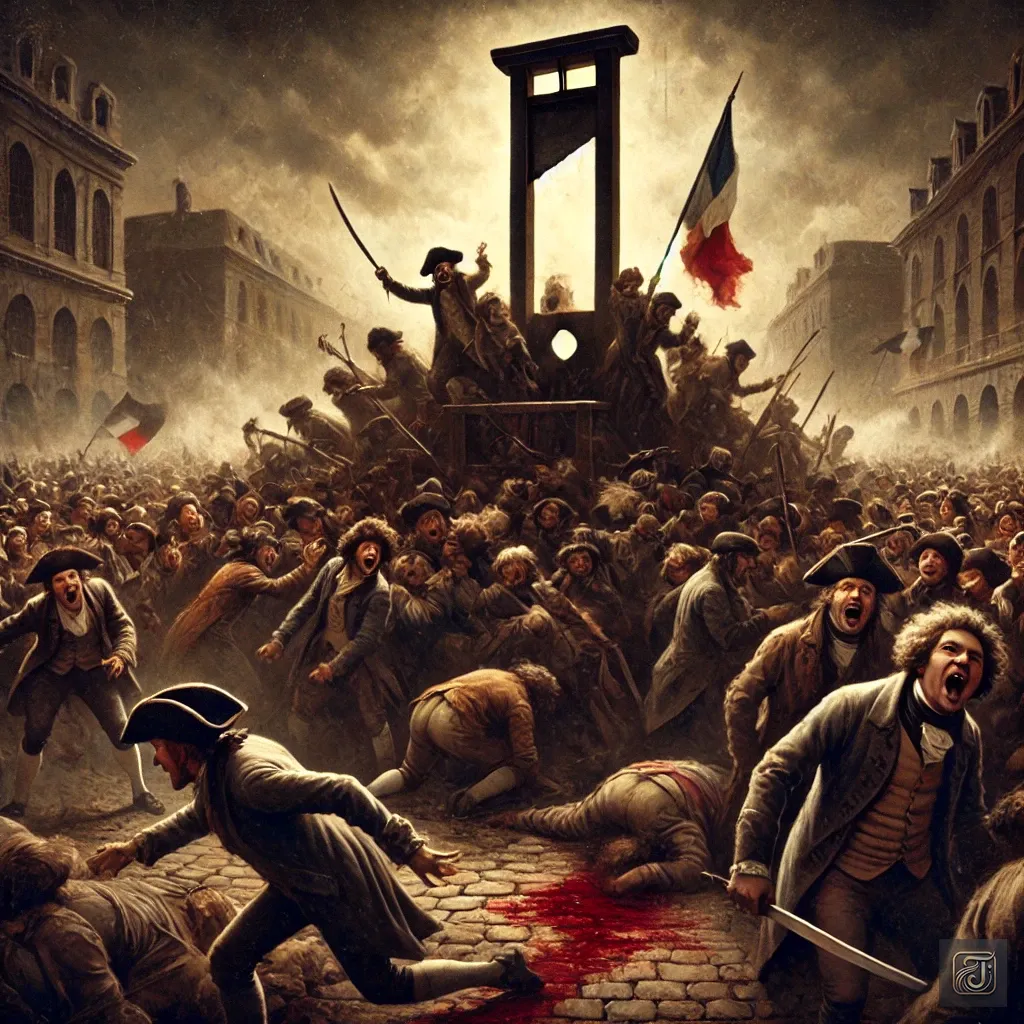
Under the Jacobin dictatorship, “liberty” and “equality” had become empty slogans, and a reign of terror now gripped the land.
Those who held differing opinions were mercilessly purged.
Anyone who dared to speak out was branded a “counter-revolutionary” and sent to the guillotine.
The people, like beasts drunk on blood, clamored for the next victim.
In Charlotte’s mind, memories of the debates in Caen came flooding back.

Charlotte Corday:
“If the Jacobin tyranny is not stopped, France will drown in a sea of blood.”
Those words had now become a grim reality.
She bit her lip, her jaw clenched in silent fury.

Charlotte Corday:
“…This—this can’t be called justice.”
“If this continues, even more innocent lives will be taken.”
“To end this madness, I have to cut off the source.”
Charlotte’s resolve hardened.

Charlotte Corday:
“Jean-Paul Marat…”
He was the chief instigator, the one fanning the flames of this endless chain of blood.
If he were gone, the revolution might return to its rightful path—
Charlotte clenched her fists and quietly walked away.
There was no longer any doubt in her heart.
Chapter 7: A Silent Resolve
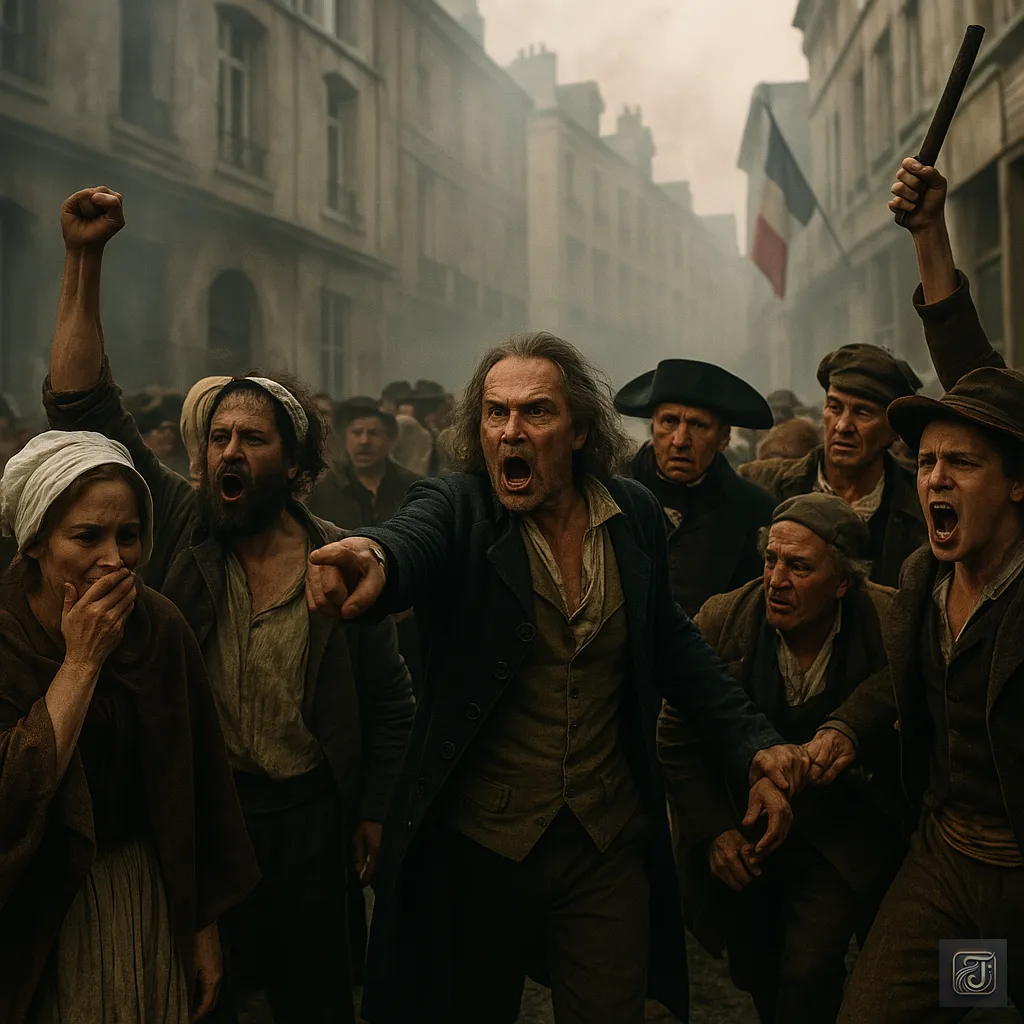
June 2, 1793 — Paris was engulfed in a maelstrom of chaos and fear.
The liberty and equality once championed in the name of revolution had long since lost their true meaning, replaced by a regime ruled through blood and violence.
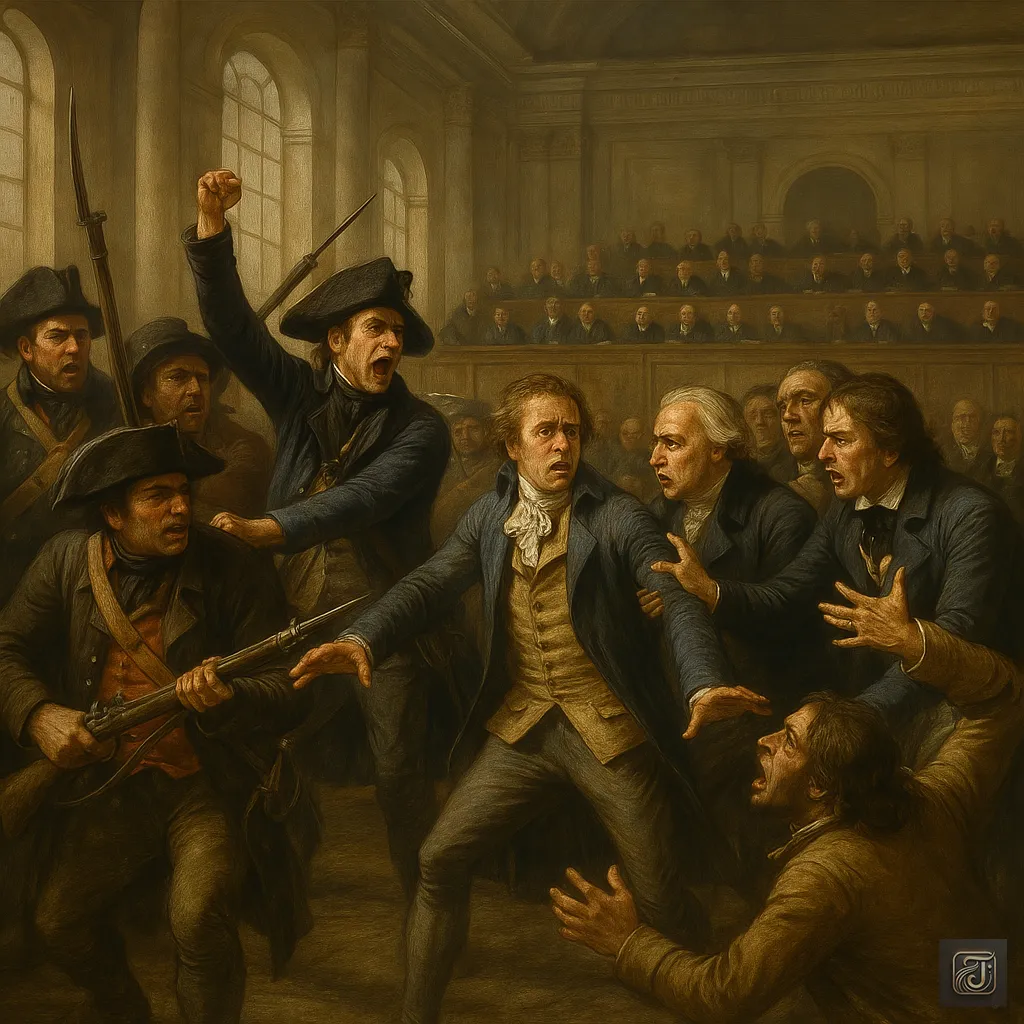
That day, the Jacobins carried out a coup d’état and expelled the Girondins.
Those who had advocated for a moderate republic were now branded as “counter-revolutionary conspirators,” arrested one after another and sent to the scaffold.
Their voices vanished from the halls of the National Convention.
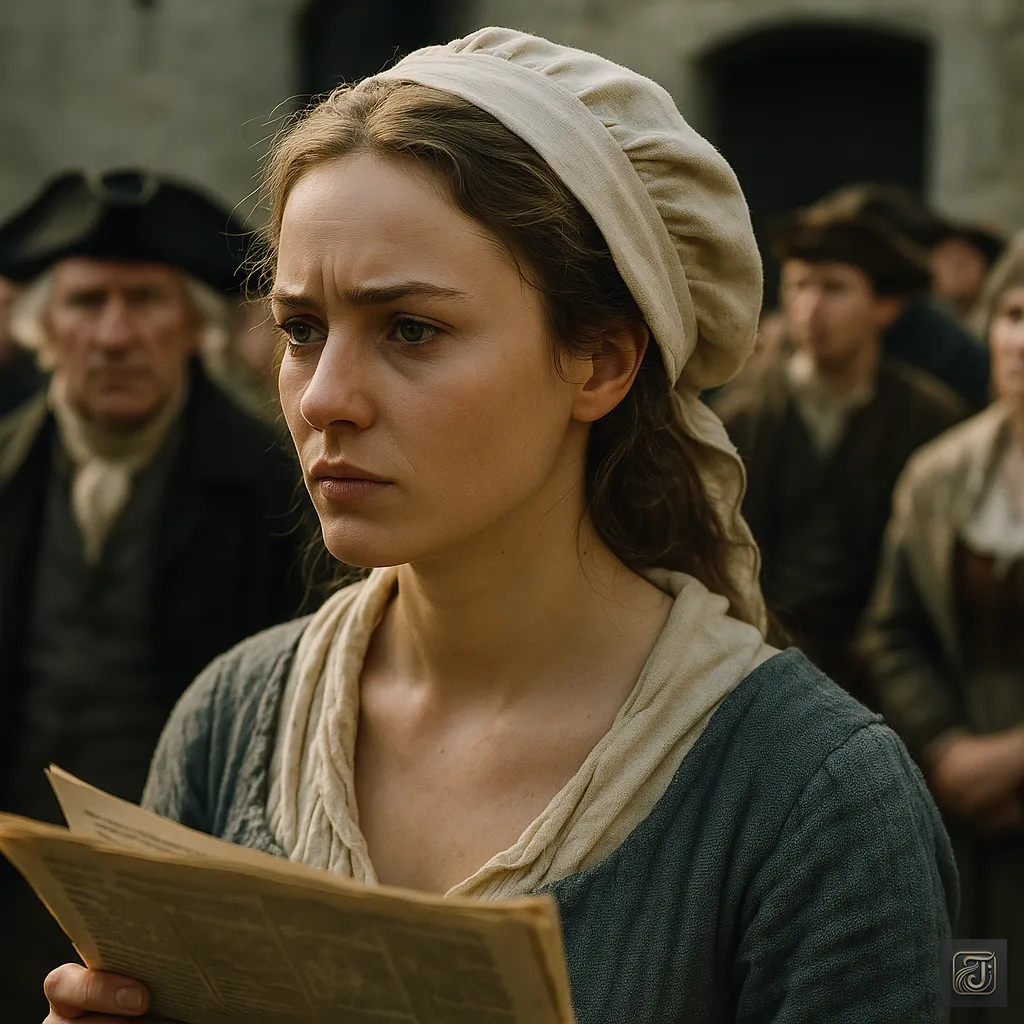
When the news reached the town of Caen, Charlotte listened in silence.
The leaders of the Girondins—those she had supported and believed in—were being purged one by one, powerless against the tide.
In that moment, a quiet yet unshakable resolve crystallized within her.
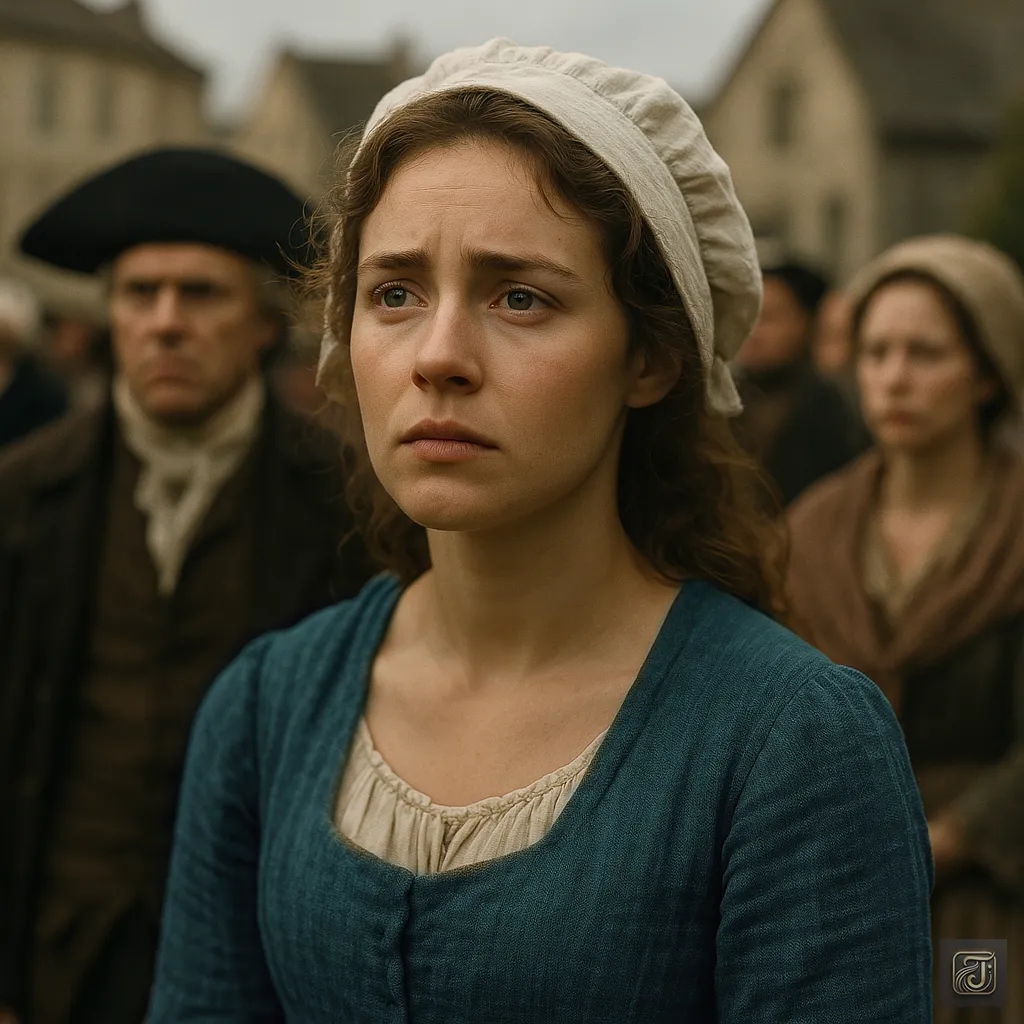
Charlotte Corday:
“If this continues, France will destroy itself.”
The Jacobins’ grip on power tightened with each passing day—and at the center of it all stood Jean-Paul Marat.
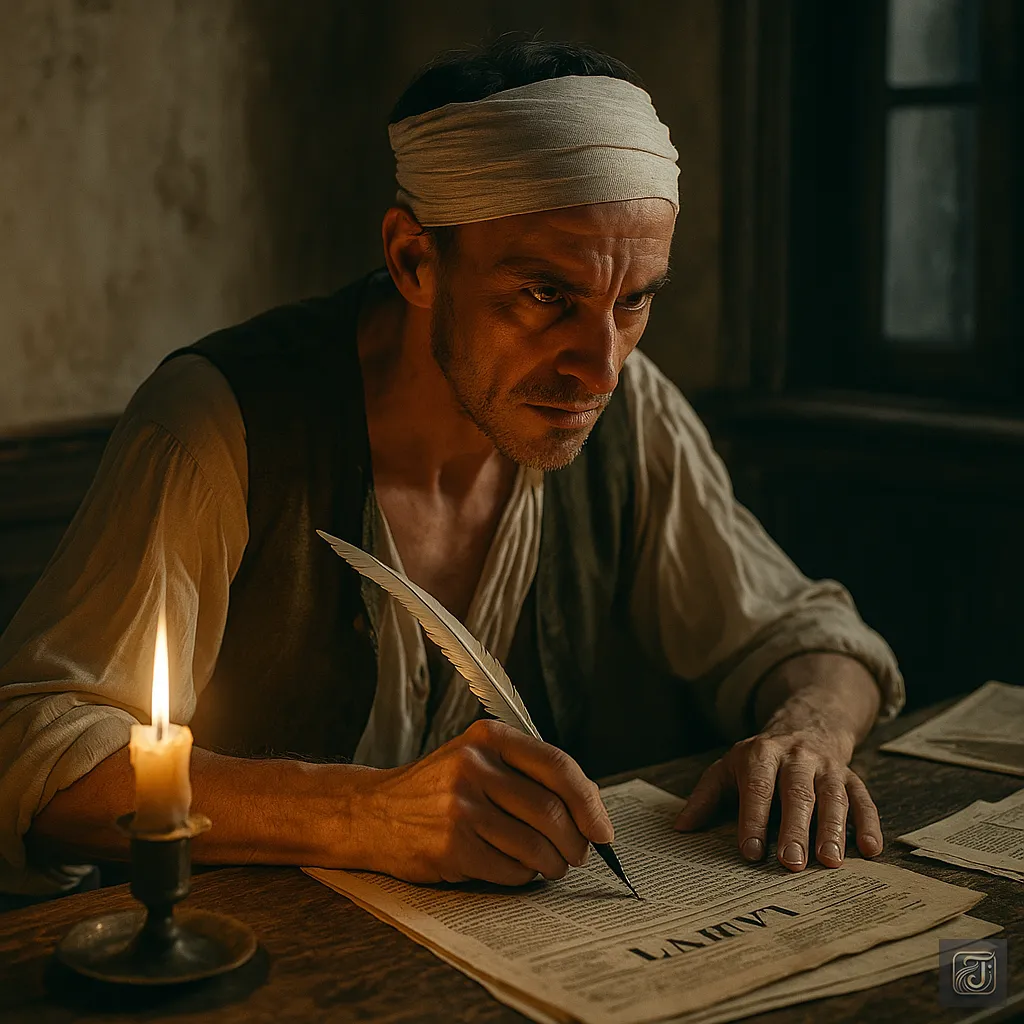
Through his newspaper, he incited the fury of the masses, calling for ever more purges.
In the early morning haze, the cry of an old newspaper vendor echoed through the streets.
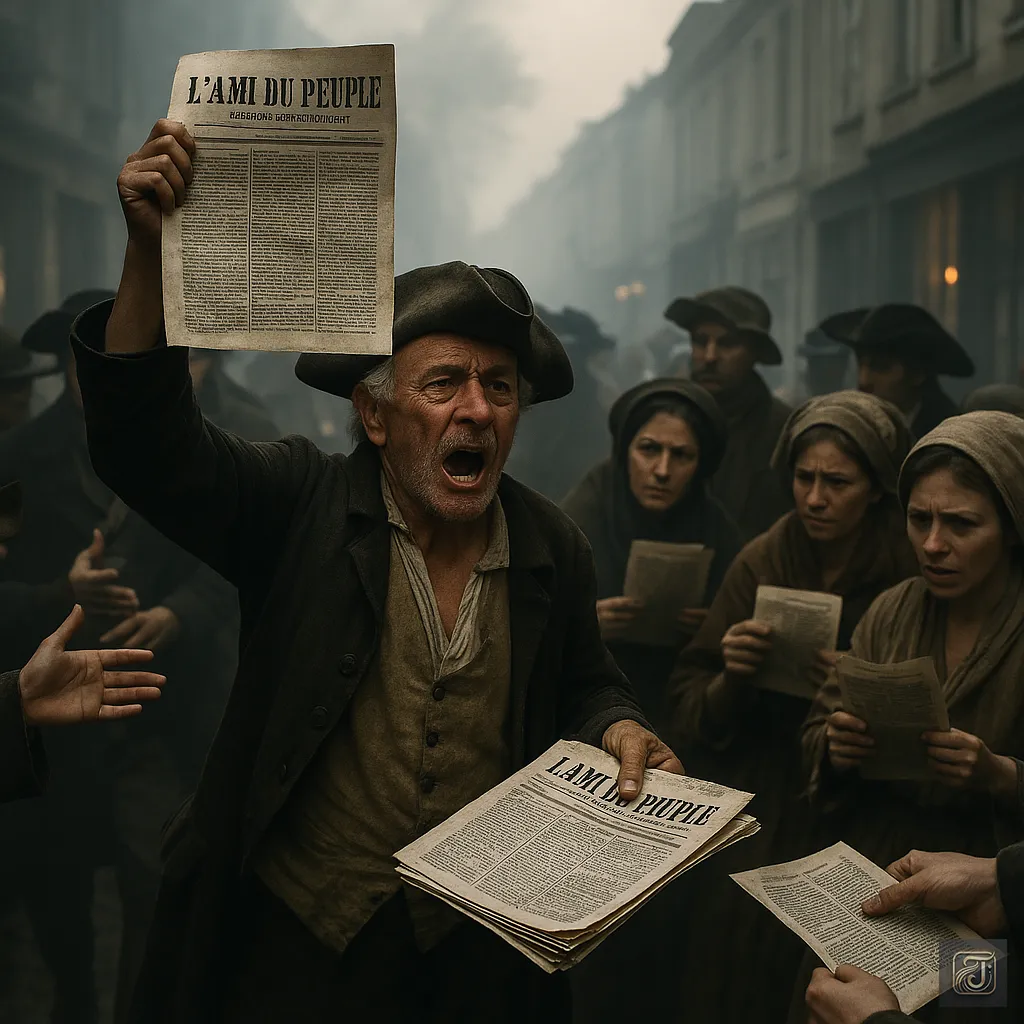
The people:
“L’Ami du Peuple!”
“Latest issue!”
The people snatched up the papers like the starving, their eyes scanning the names printed within.
Each list read like a death notice—a grim announcement of who would soon meet the guillotine.
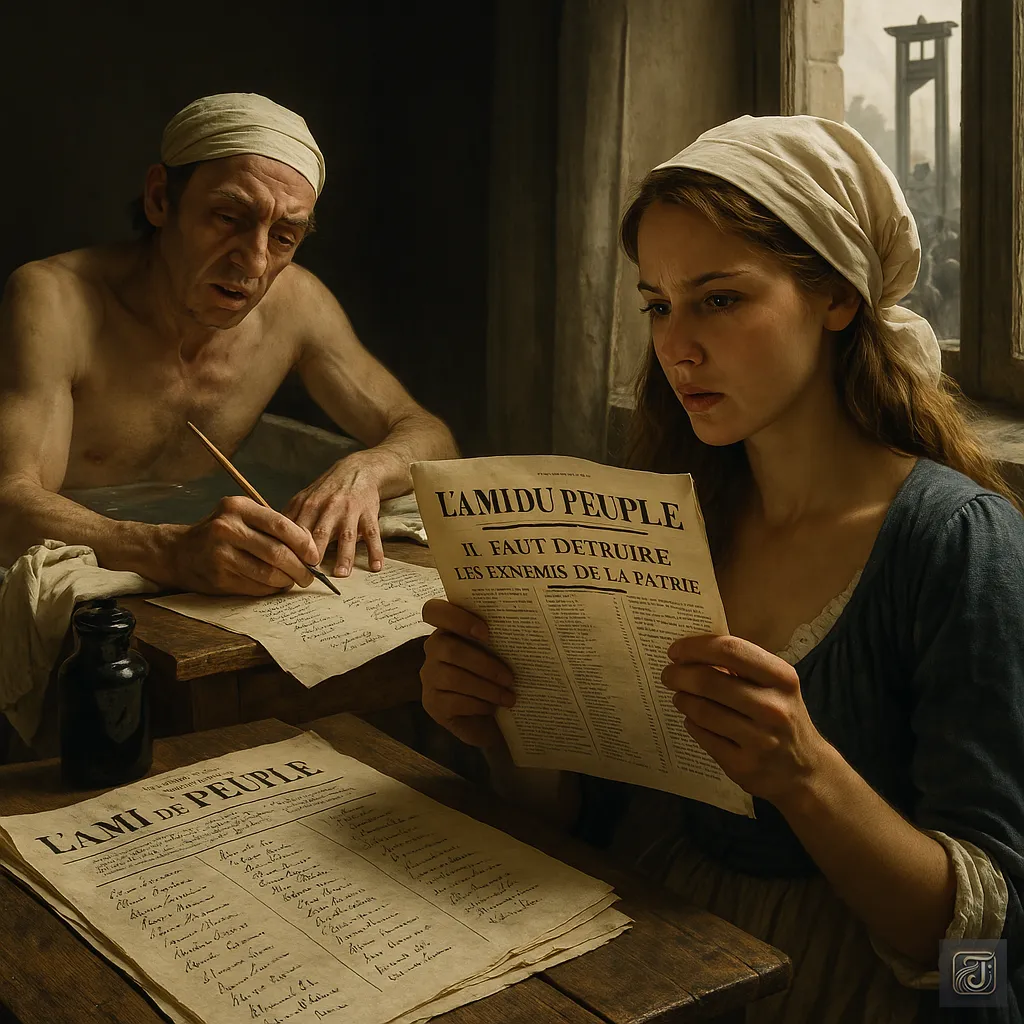
Jean-Paul Marat.
In a dimly lit room, submerged in a bathtub to soothe his diseased skin, he scribbled furiously with a quill.
A bandage wrapped his head, and in his eyes burned a feverish light—half madness, half zeal.
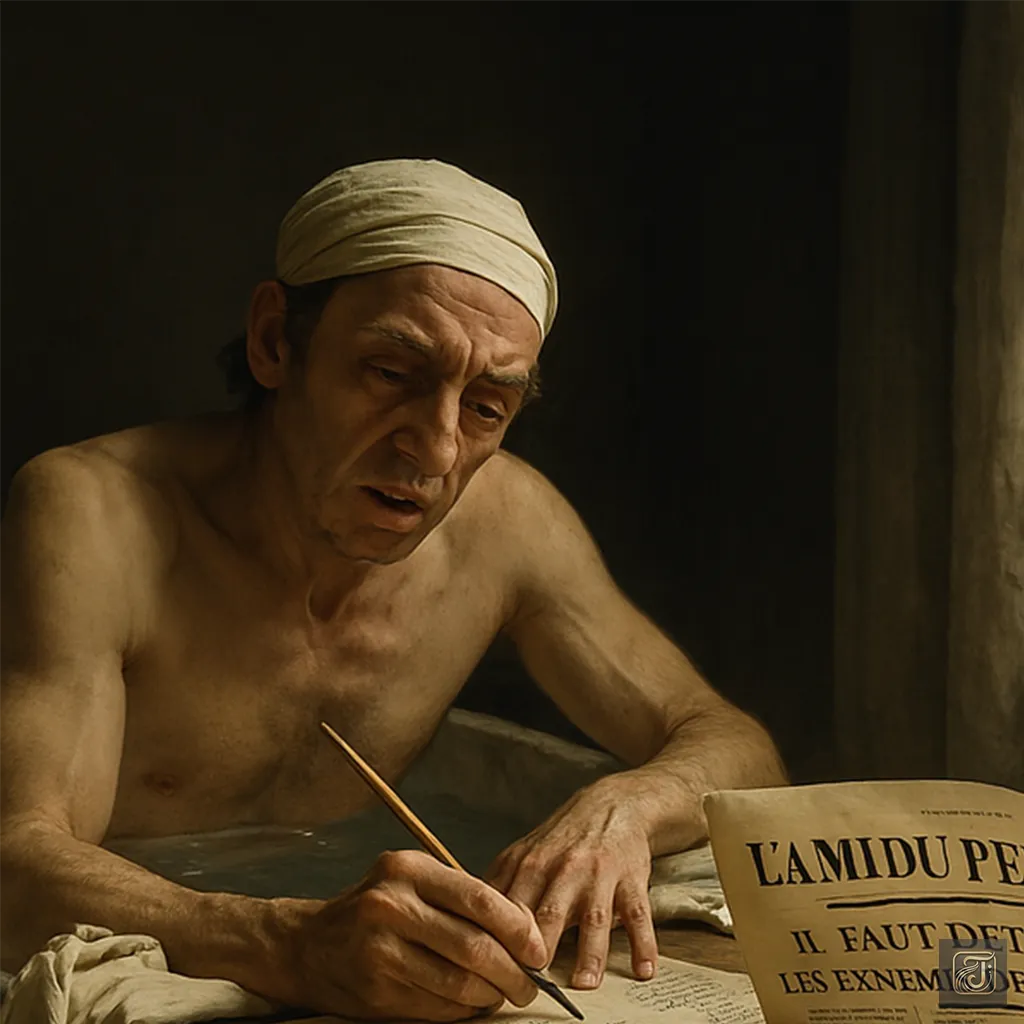
Jean-Paul Marat:
“He… and she… are both counter-revolutionaries.”
What soaked into the ink was not merely words—it was the lives of the innocent.
His newspaper, L’Ami du Peuple—The Friend of the People—was no longer a source of information.
It had become a death warrant signed in print.
Those who read it were driven to rage, to denounce, to shout names, and to flood the squares—demanding blood.
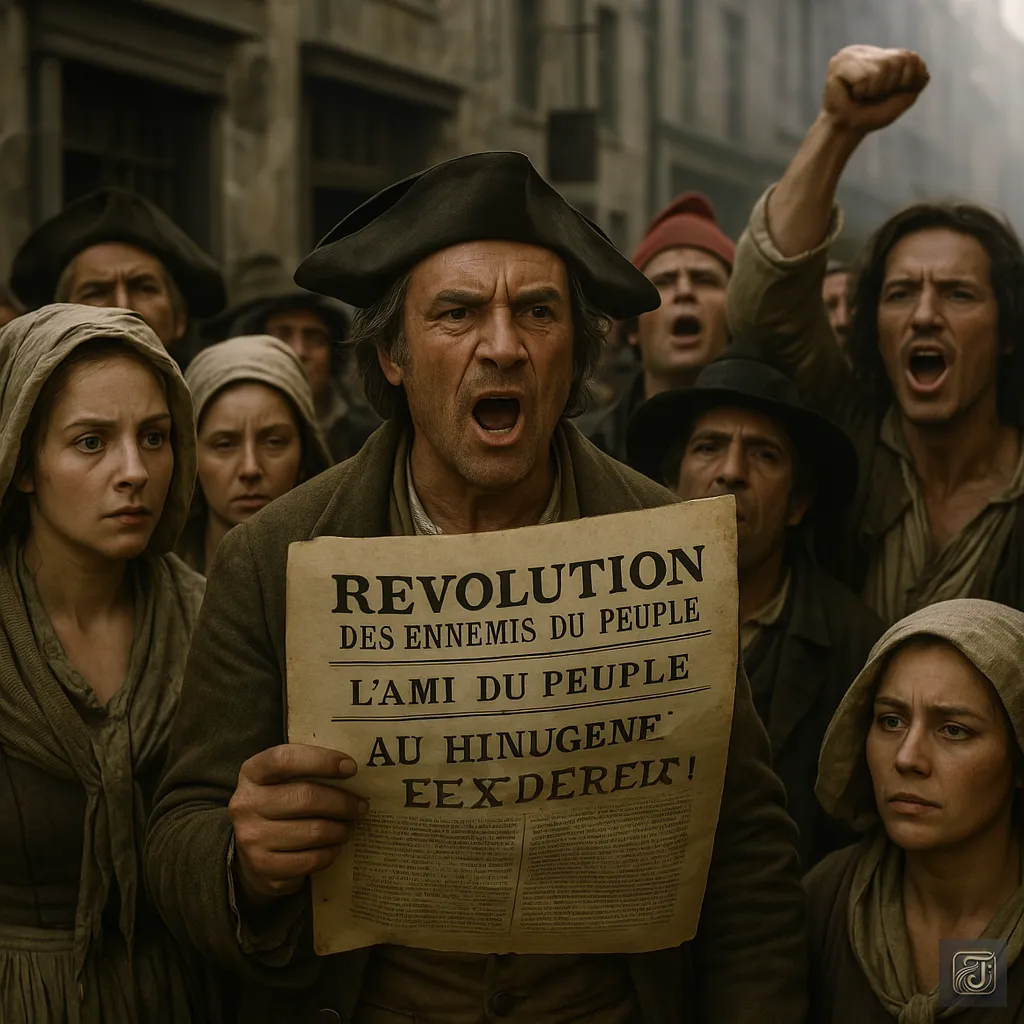
“Eradicate the enemies of the Revolution!”
That was Marat’s creed.
And anyone who dared question it found their name added to the next list.
The blade of the guillotine was born from the tip of his pen.
Not just once—but again and again, it fell, claiming countless heads.
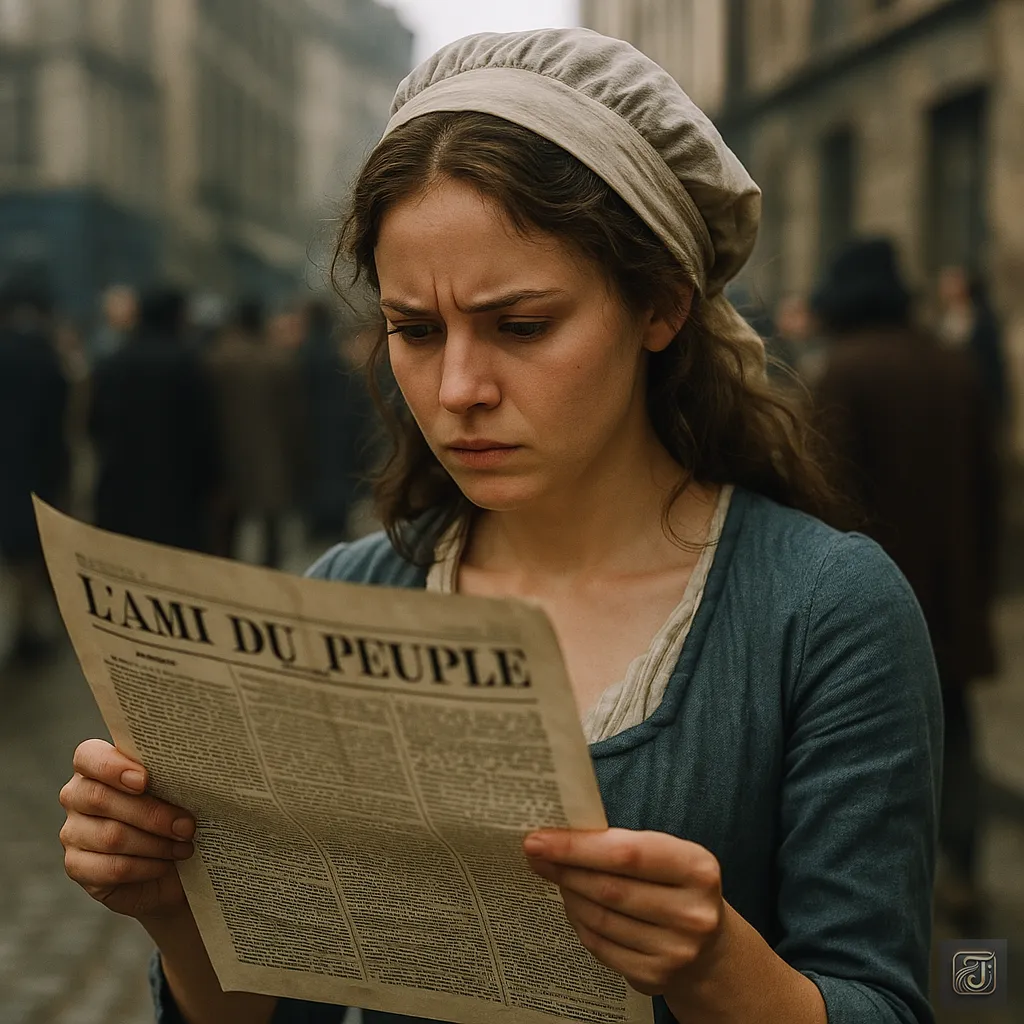
Charlotte Corday held the newspaper in her trembling hands, slowly turning its pages.
Her gaze was filled with a storm of anger and sorrow.
Marat’s words were staining France with blood.
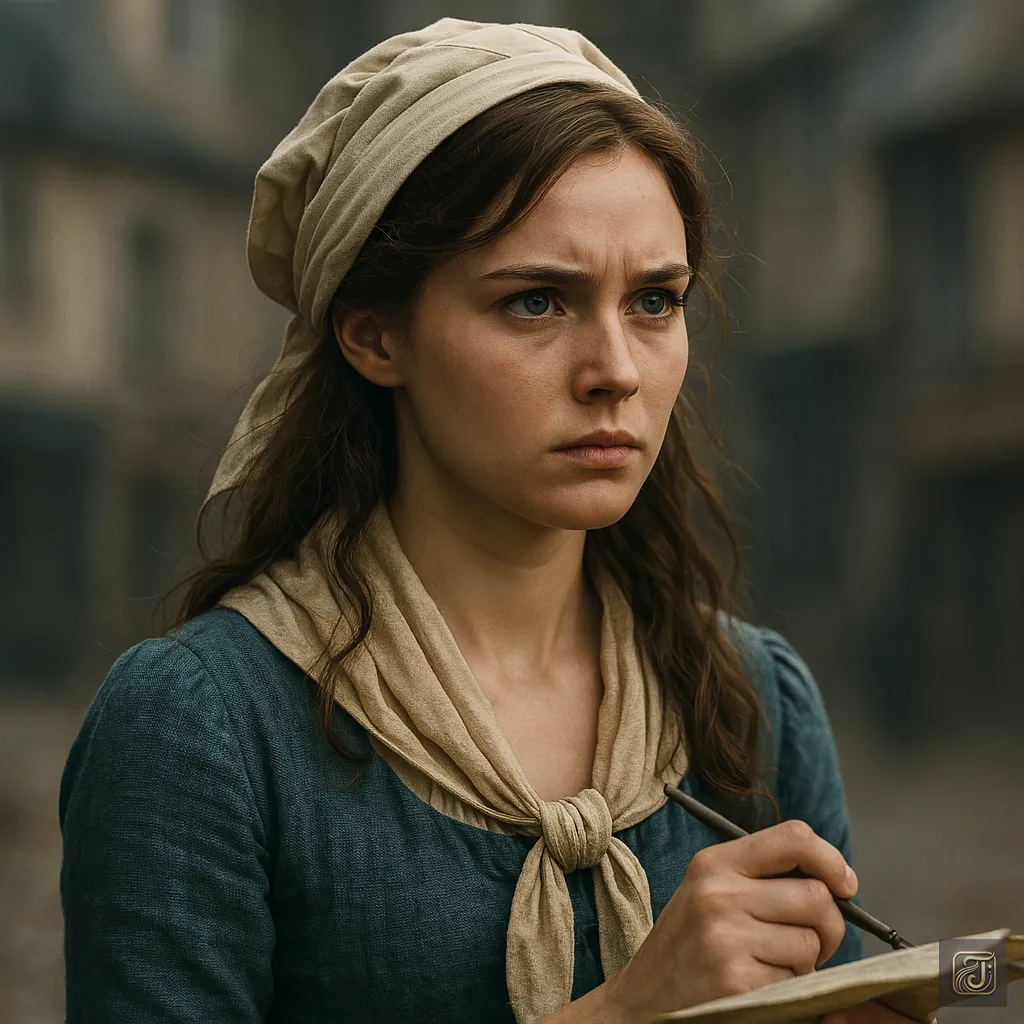
Charlotte Corday:
“His pen is the deadliest weapon of all…”
“I will be the one to end this.”
In that moment, something within her took clear and irreversible shape.
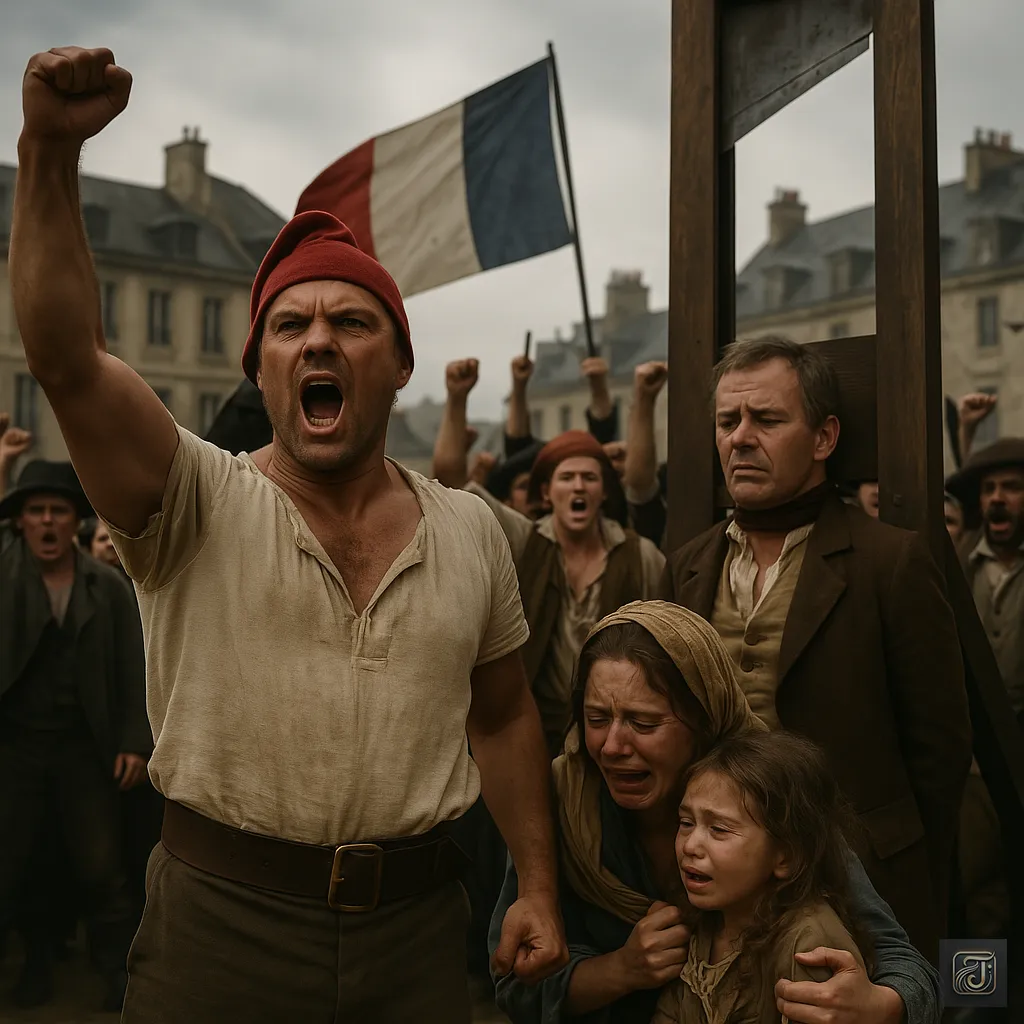
“Eradicate the enemies of the Revolution”—his words became the guillotine’s blade, falling again and again, severing head after head.
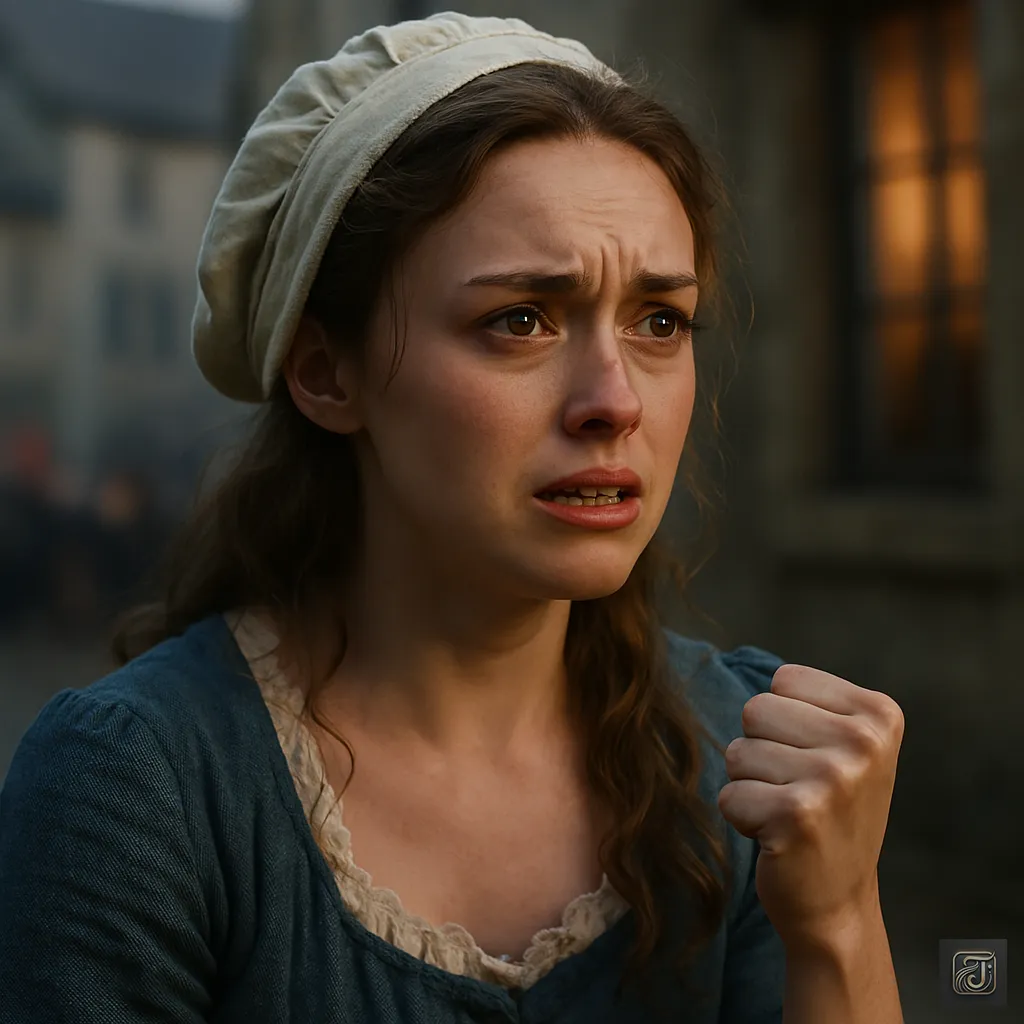
Charlotte Corday:
“They only spoke their minds.”
“So why did they have to die?”
“Everyone should have the right to speak freely.”
“To kill someone just because they think differently—this is absolutely wrong.”
“This cannot be allowed.”
“Someone has to stop it…”
Charlotte made the decision—
to change the course of history with her own hands.
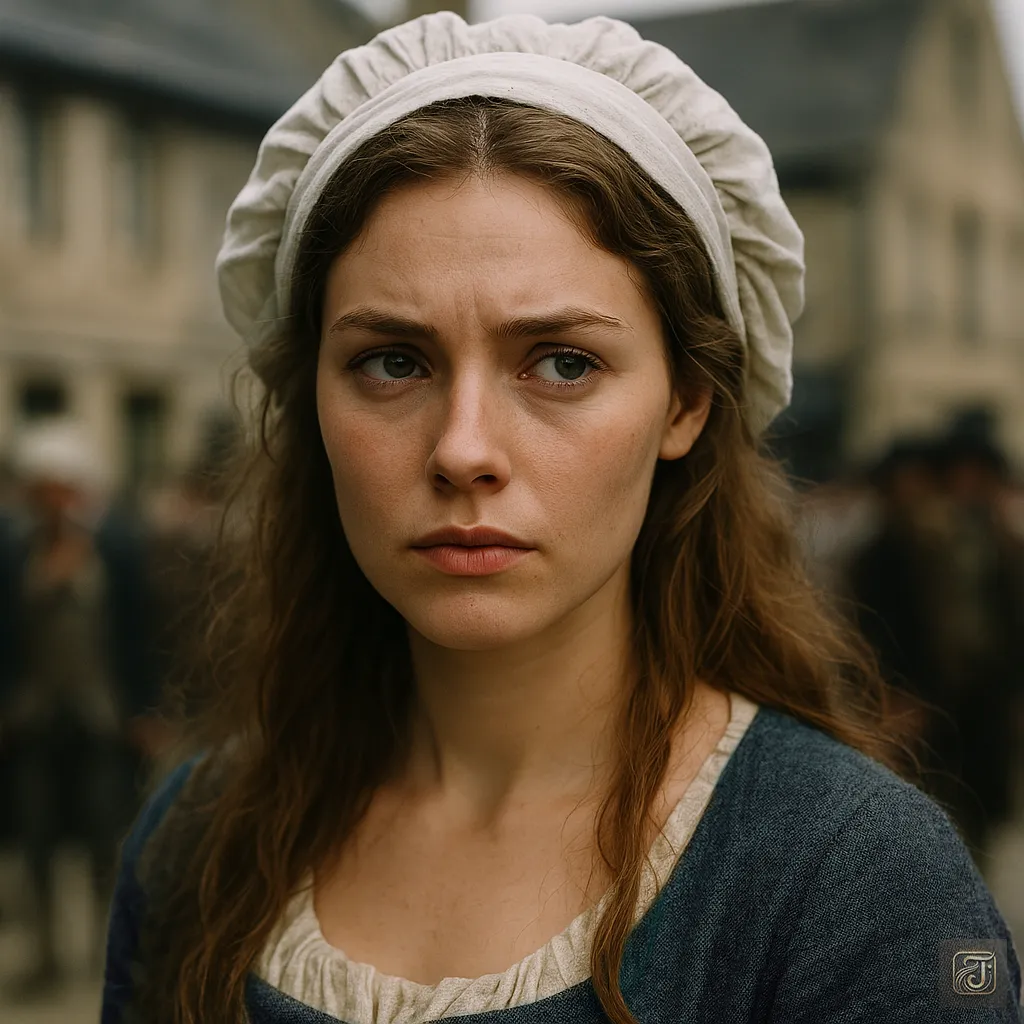
Charlotte Corday:
“I will—kill Jean-Paul Marat.”
Chapter 8: The Night of Decision
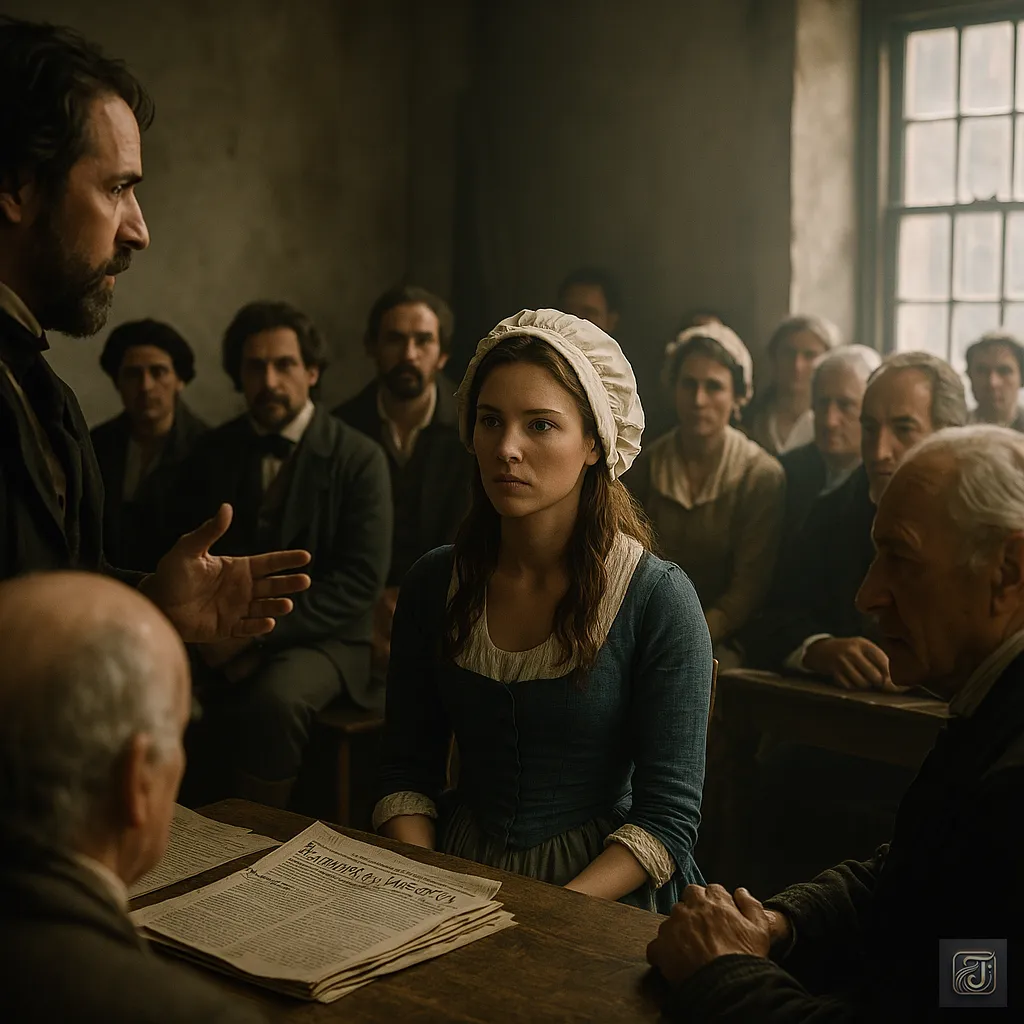
June 1793. Supporters of the Girondins gathered in a small meeting hall in Caen.
Under the leadership of Robespierre, the Jacobins had begun purging the Girondins, staining Parisian politics with blood.
Among those who feared for the future of France, Charlotte Corday sat quietly, listening to the heated discussions.
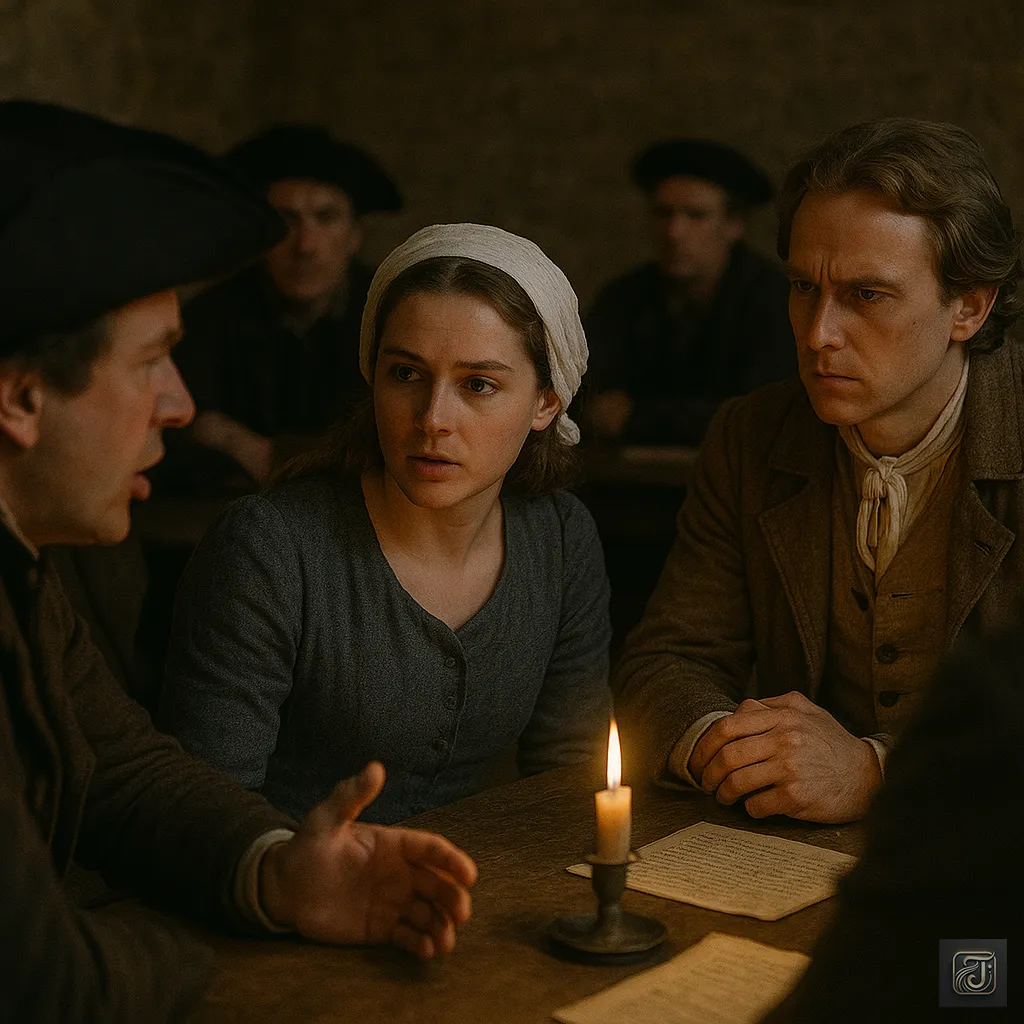
François:
“The Jacobins are insane!”
“They shout ‘Liberty, Equality, Fraternity,’ yet all they do is carry out indiscriminate purges!”
Pierre:
“But what can we do?”
“They already control Paris, and anyone who opposes them is sent straight to the guillotine.”
“What power do we have?”
Charlotte Corday:
“…Lamenting alone won’t change anything.”
François:
“Charlotte, are you saying you have a plan?”
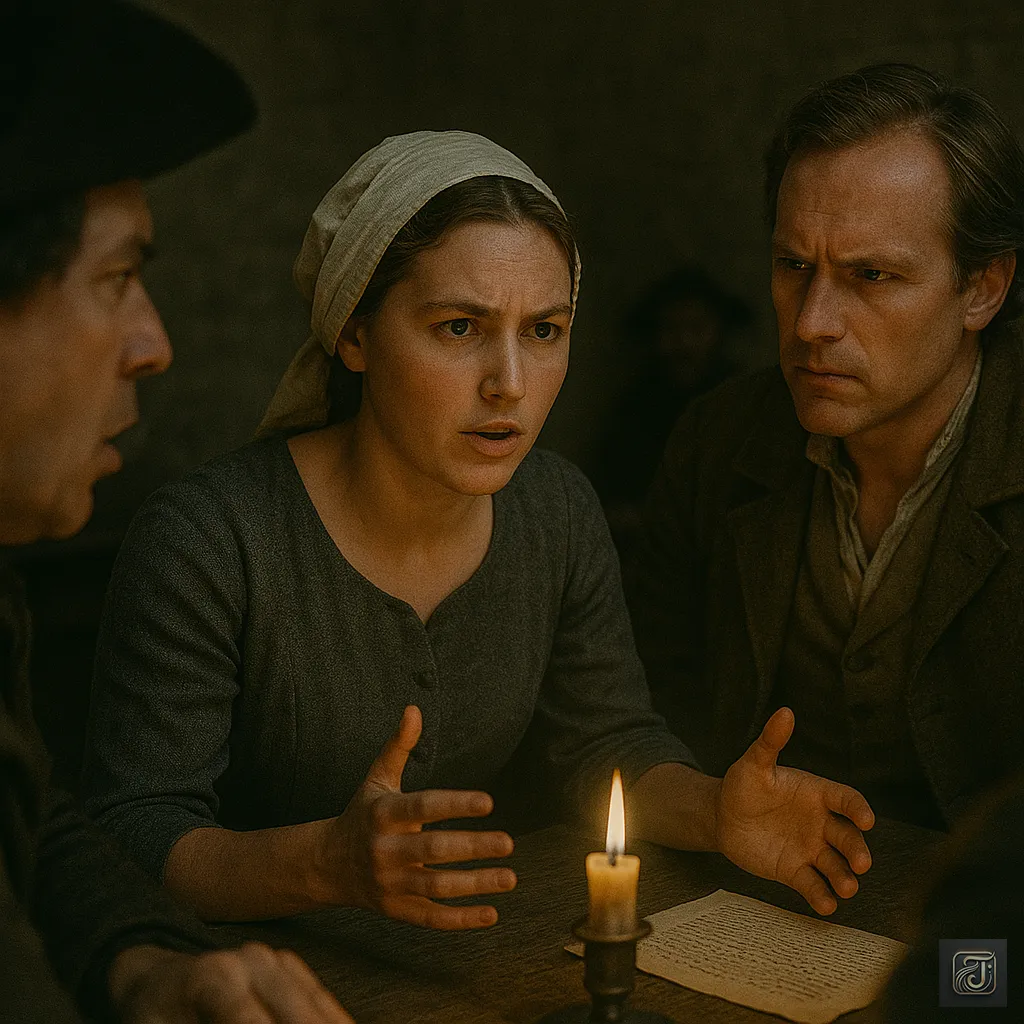
Charlotte Corday:
“In Paris, the innocent are being executed one after another in the name of revolution.”
“Madame Roland has been imprisoned.”
“Vergniaud, Brissot—the Girondin leaders have been captured.”
“If this doesn’t stop, France will drown in blood.”
Pierre:
“But how?”
“We don’t have an army.”
“Are you saying we should fight violence with more violence?”
“If we do that, we’re no better than the Jacobins!”
Charlotte Corday:
“No.”
“If we want to change France, we must break the cycle of bloodshed…”
“But removing the one who created this nightmare—that’s another matter entirely.”
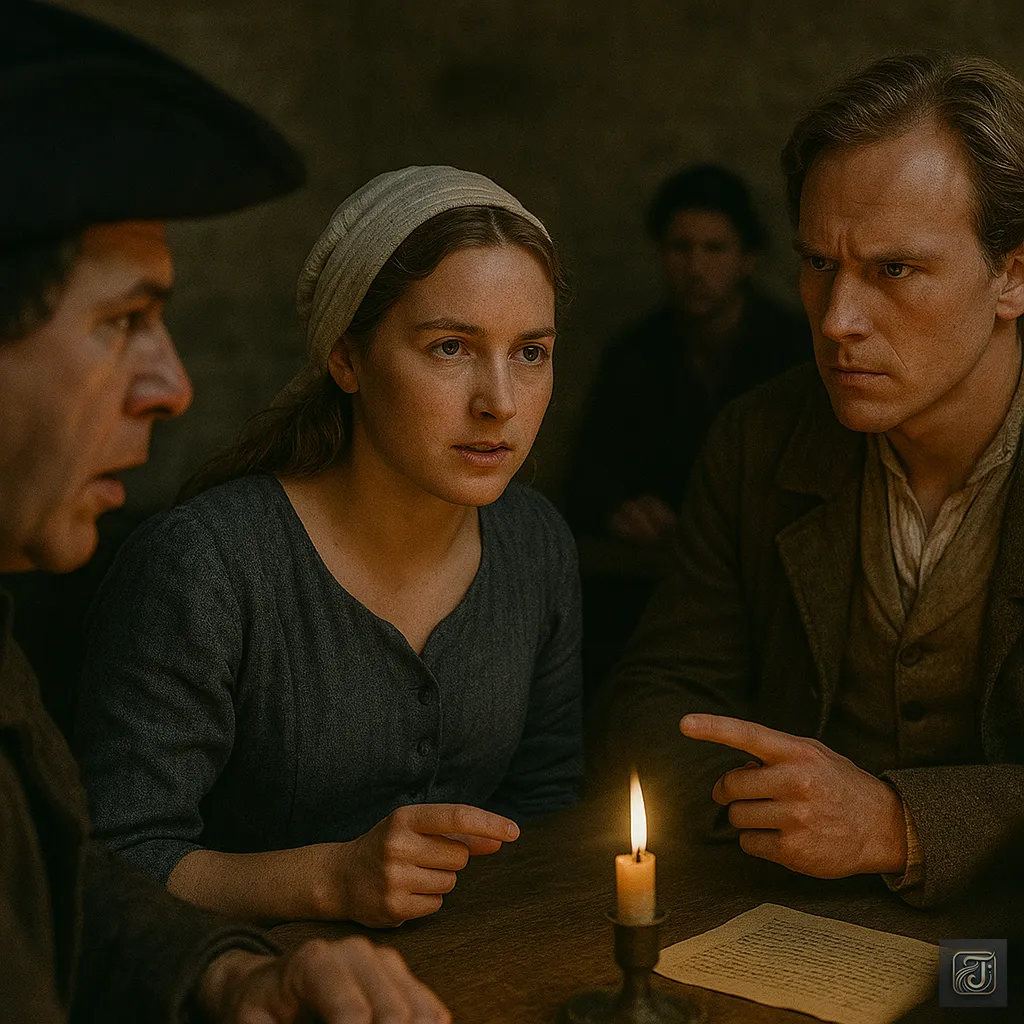
François:
“…No… Charlotte, what are you thinking?”
Charlotte Corday:
“Jean-Paul Marat…”
“You both know how many lives his newspaper has taken.”
“His words are what drive the people to madness.”
Pierre:
“Are you saying… You would kill Marat?”
Charlotte Corday:
“Marat is the symbol of Jacobin tyranny.”
“If he’s gone, the people might finally open their eyes and realize the horror of what they’ve become.”
François:
“But that… that would make you no different from them!”
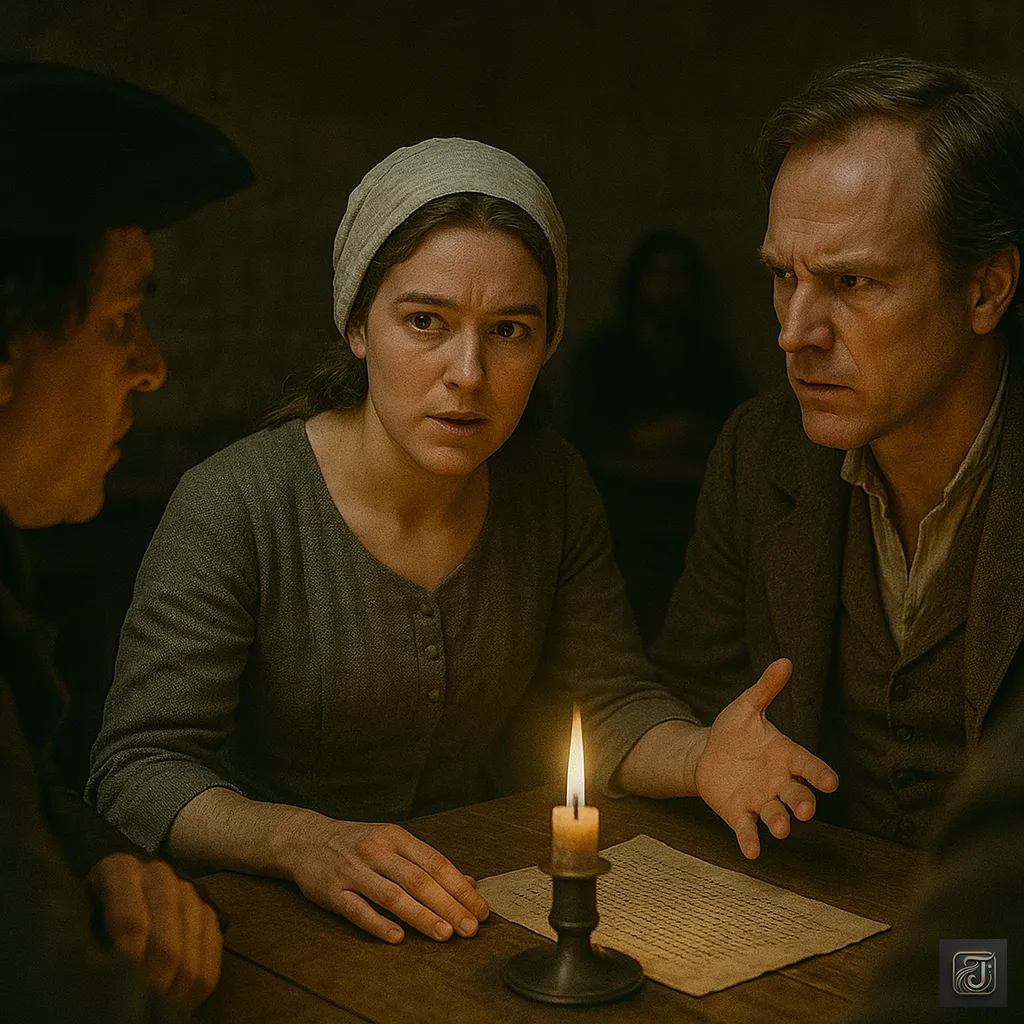
Charlotte Corday:
“No, it’s not the same.”
“They’re killing innocent people.”
“I’m not.”
“I intend to stop the tyranny itself—I intend to stop Marat.”
Pierre:
“…And you truly believe that will change France?”
Charlotte Corday:
“…I don’t know.”
“But if no one acts, the revolution will only spiral further into madness.”
“I will act—so this tide of blood can finally be stopped.”
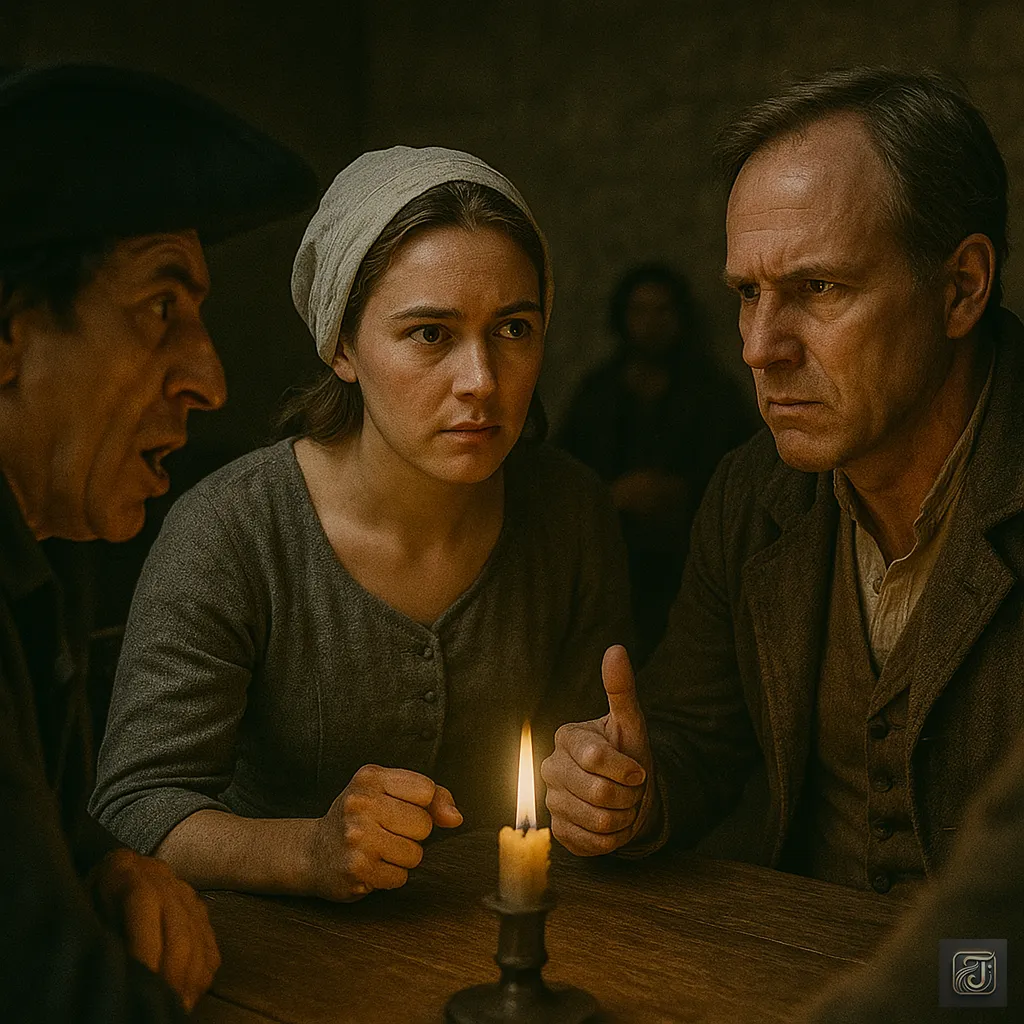
François:
“You… you really intend to go through with this!?”
Pierre:
“…Please, don’t do something reckless.”
“It’s not the sword that changes history—it’s the power of ideas.”
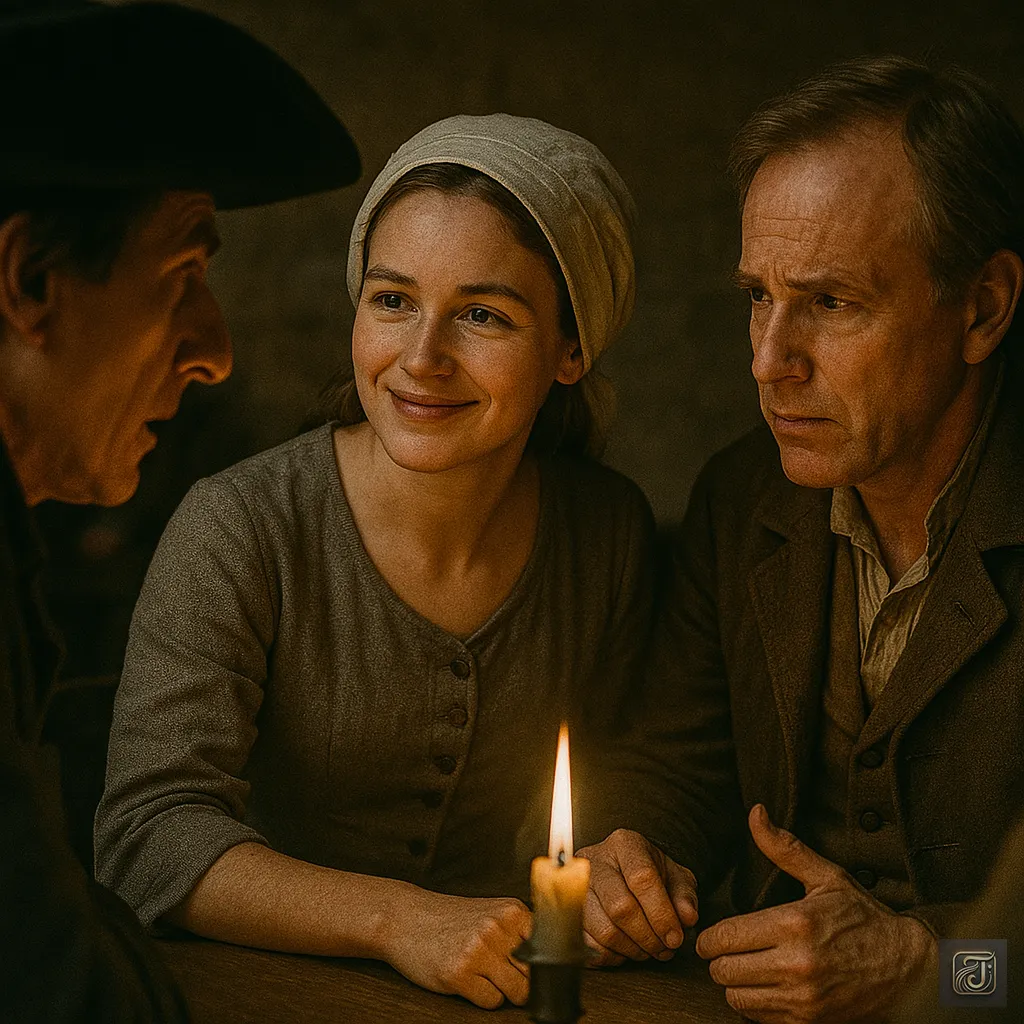
Charlotte Corday:
“Yes, the power of ideas…”
“But right now, France needs a sword.”
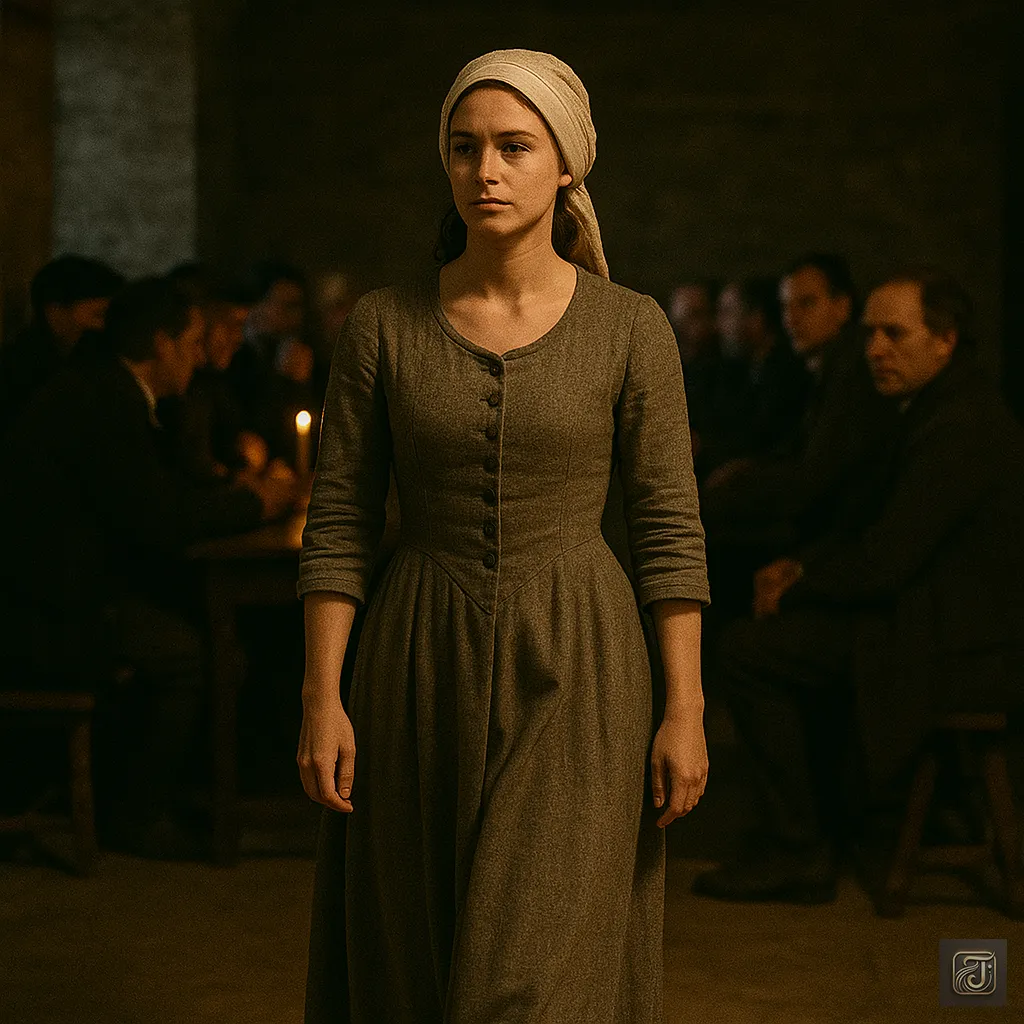
Charlotte rose from her seat and left the meeting hall.
Her resolve was unshakable.
Quietly, yet with unwavering certainty, she began to walk the path upon which she would stake her life.
It was a decision from which there was no turning back.
Chapter 9: Journey of Fate
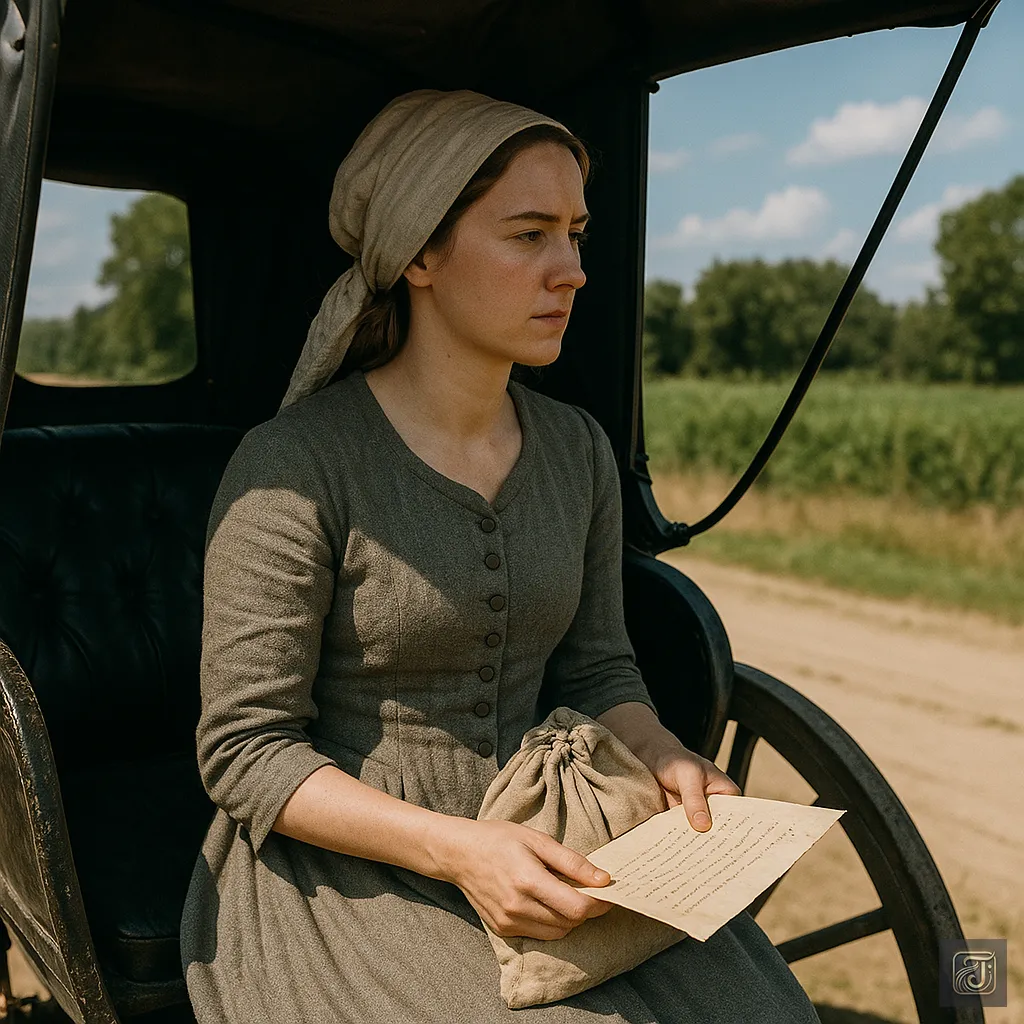
On July 9, 1793, Charlotte Corday quietly departed from the town of Caen.
Under the blazing sun, the carriage carrying her moved slowly down the dusty road.
Her destination: Paris—the heart of the revolution, and the place where fate awaited her.
In her hand, she held a small pouch.
Inside were several letters—
One of them detailing the ideals of the revolution she believed in, and the mission she had chosen to carry out.
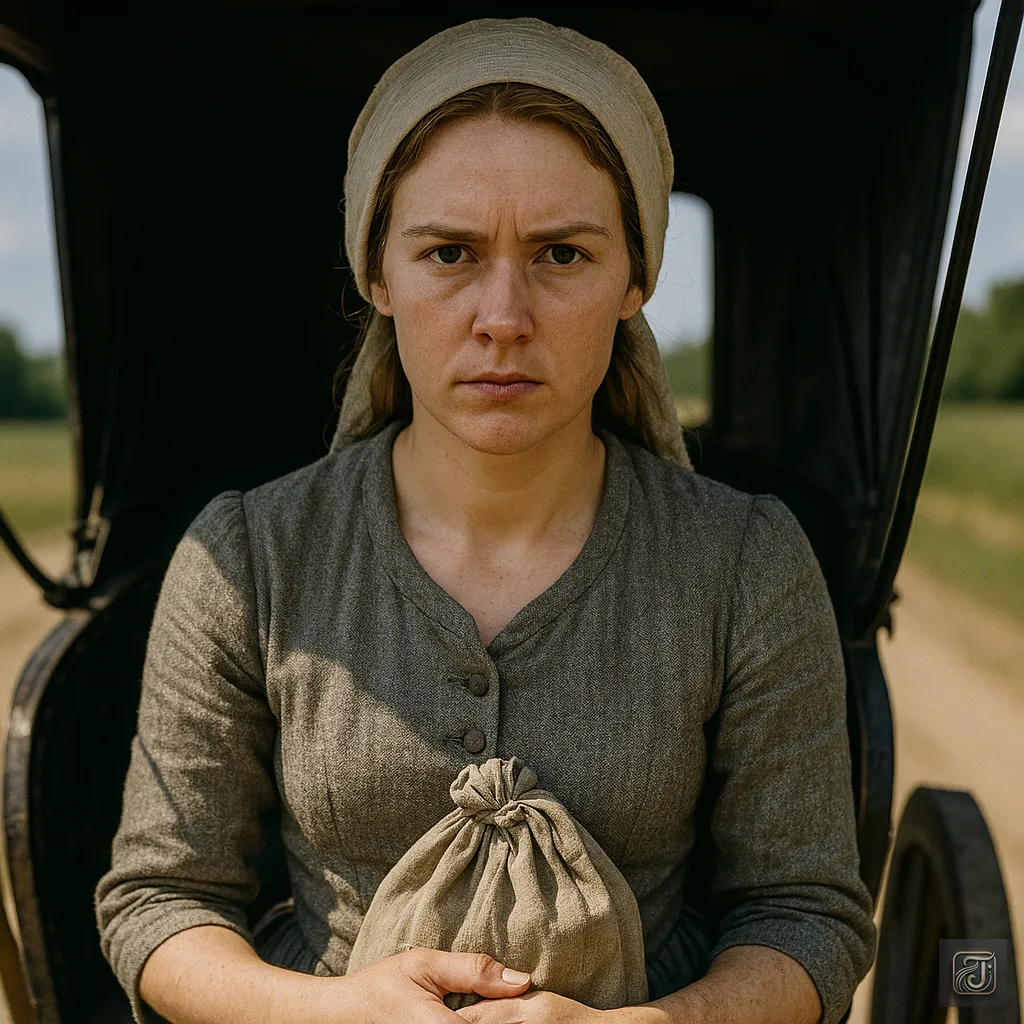
Charlotte Corday:
“I go to save France.”
Charlotte hoped that in Paris, the surviving Girondins would rise up.
She believed that by striking down Marat, the foundation of Jacobin tyranny would begin to crumble, and the revolution would return to its rightful path.
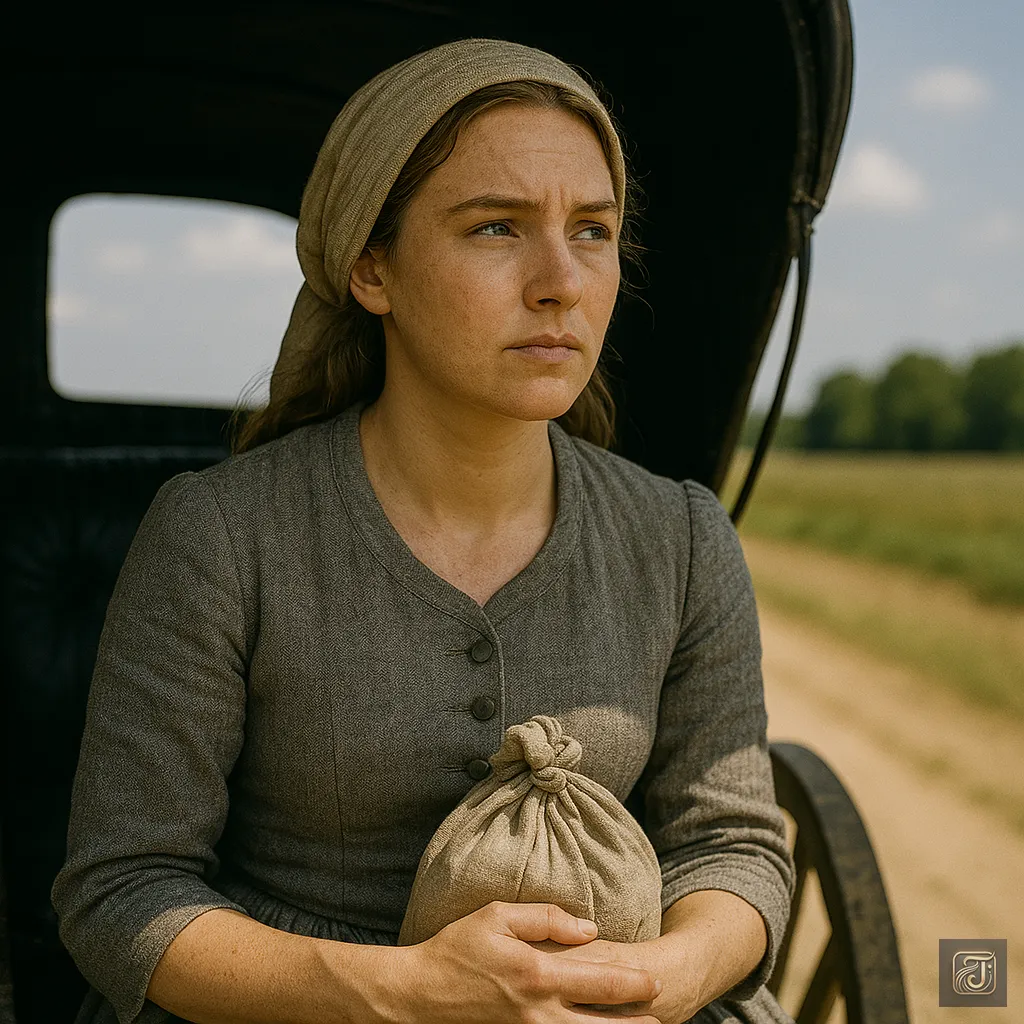
Yet along the journey, what passed through her mind was not fear—but conviction.
She believed that even if her actions sparked only a momentary storm, they would leave a lasting impact on the future of France.
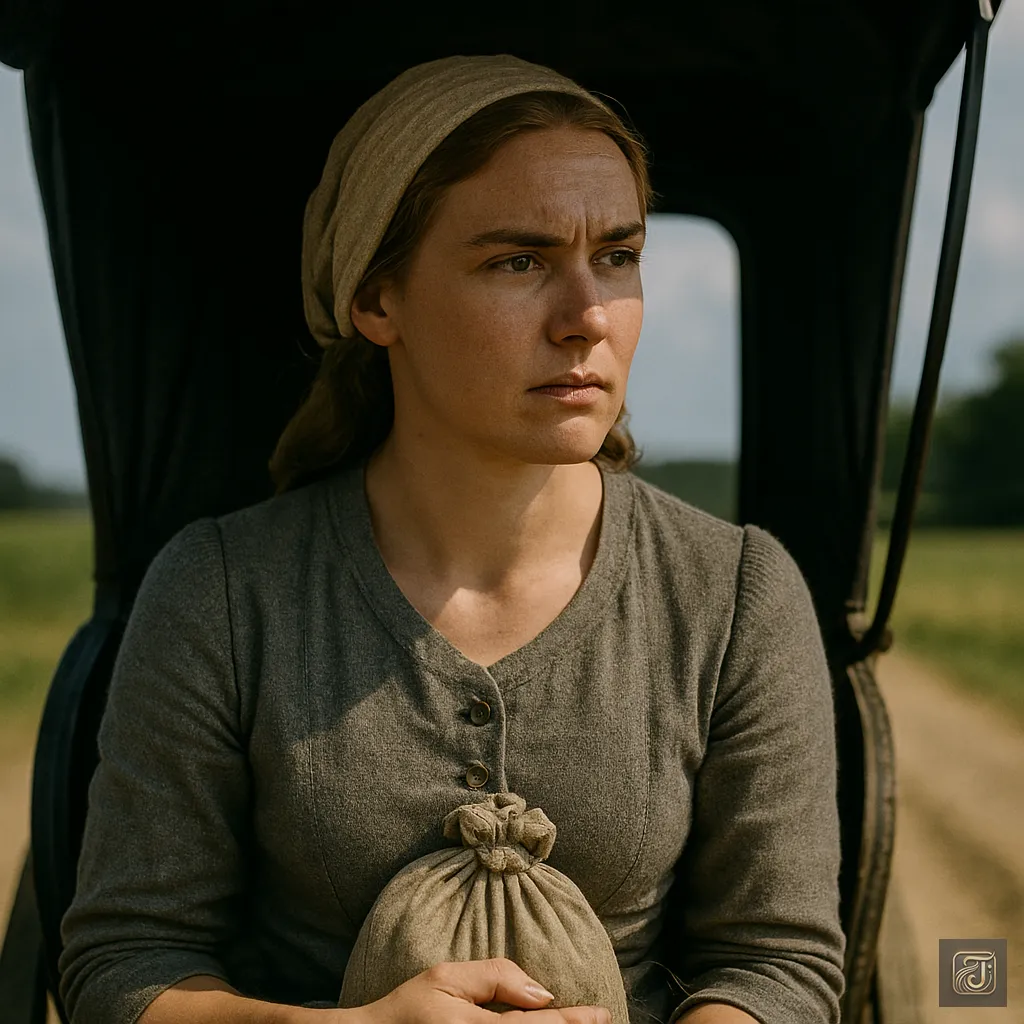
Charlotte Corday:
“Paris is waiting for me.”

The carriage rolled on, kicking up dust as it made its way toward the city where the heartbeat of the revolution pounded.
The door to her destiny was already beginning to open.
Chapter 10: An Oath of Steel
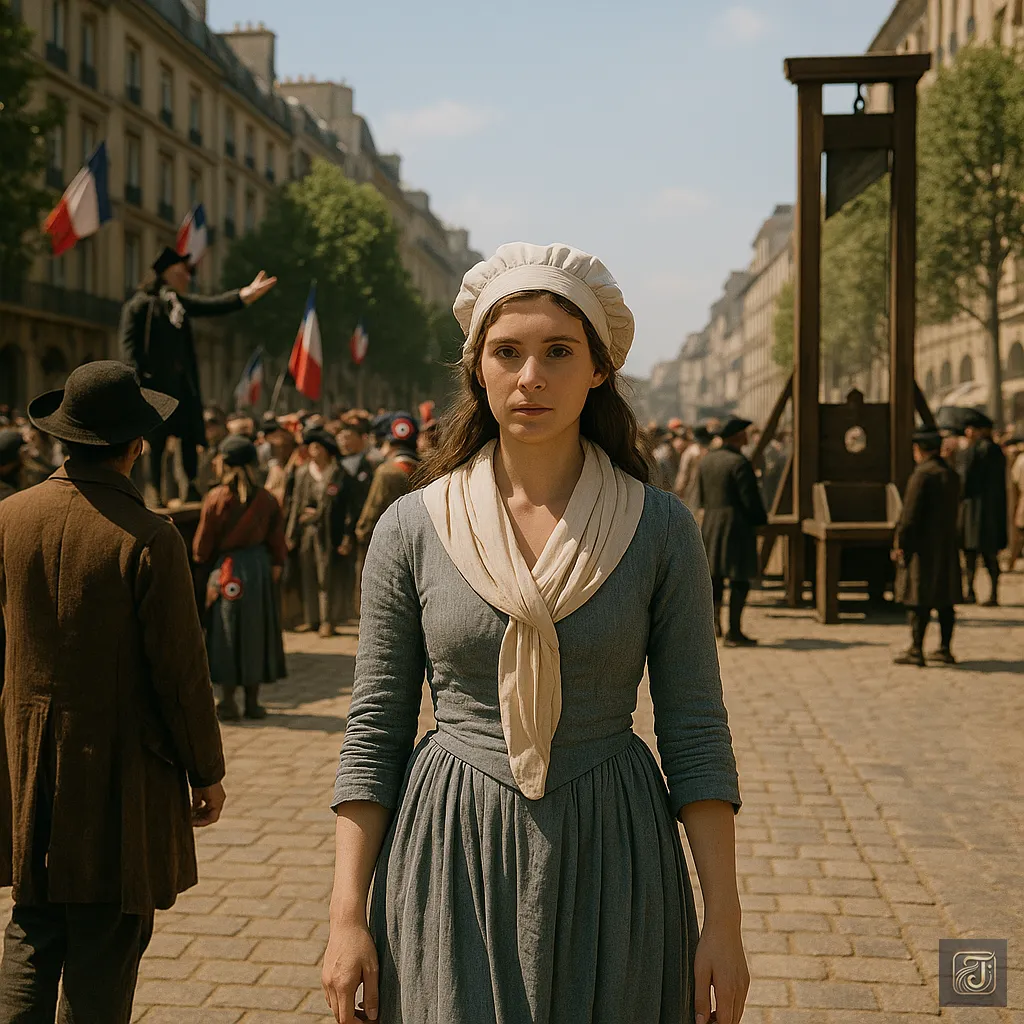
July 11, 1793 — the city of Paris was cloaked in summer heat and revolutionary madness.
In the public squares, Jacobin speeches thundered, and the shadow of the guillotine loomed ever closer over the heads of the people.
Yet amidst the noise and chaos, Charlotte Corday moved quietly, her steps steady and calm.
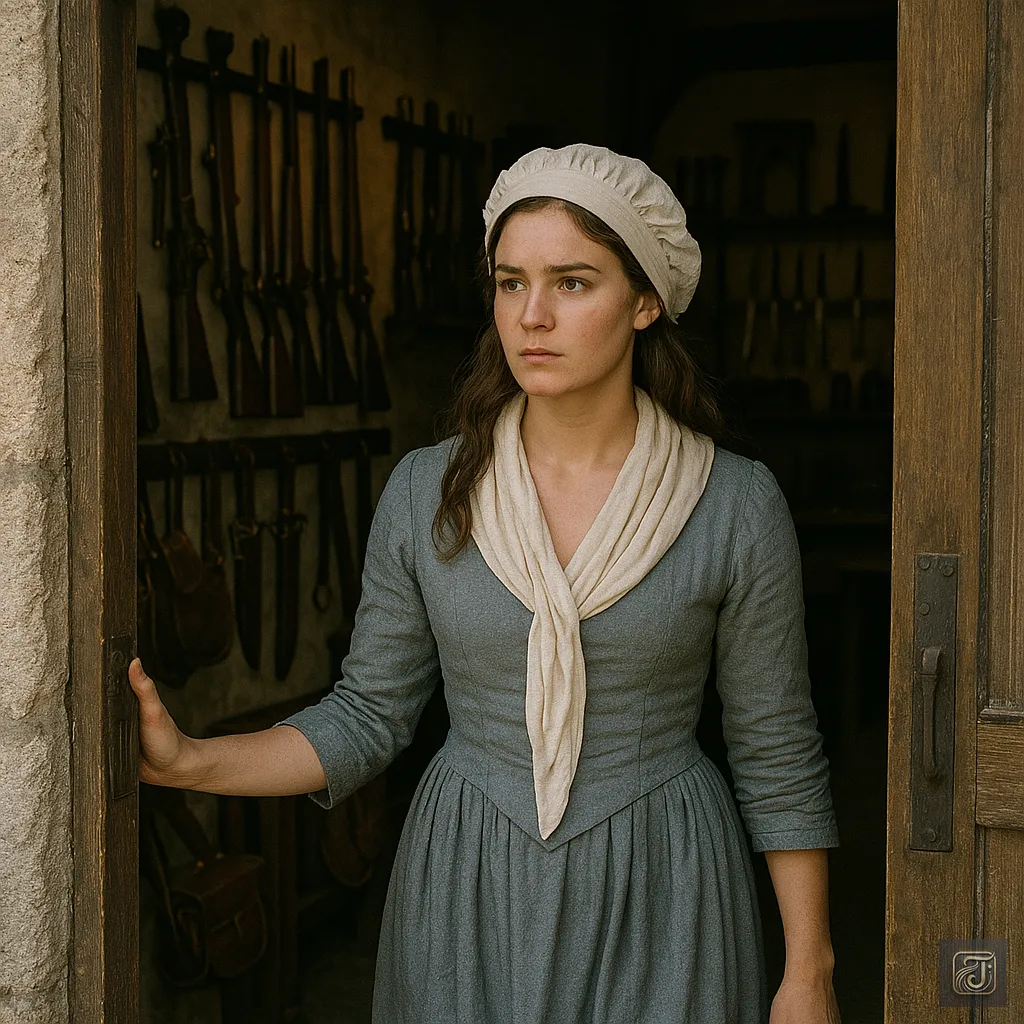
Her destination was a small weapons shop.
As she pushed open the door, the scent of iron and leather hit her nose.
Daggers and swords lined the walls, and the shopkeeper eyed her with a gaze that weighed and measured—judging whether she was buyer, threat, or fool.
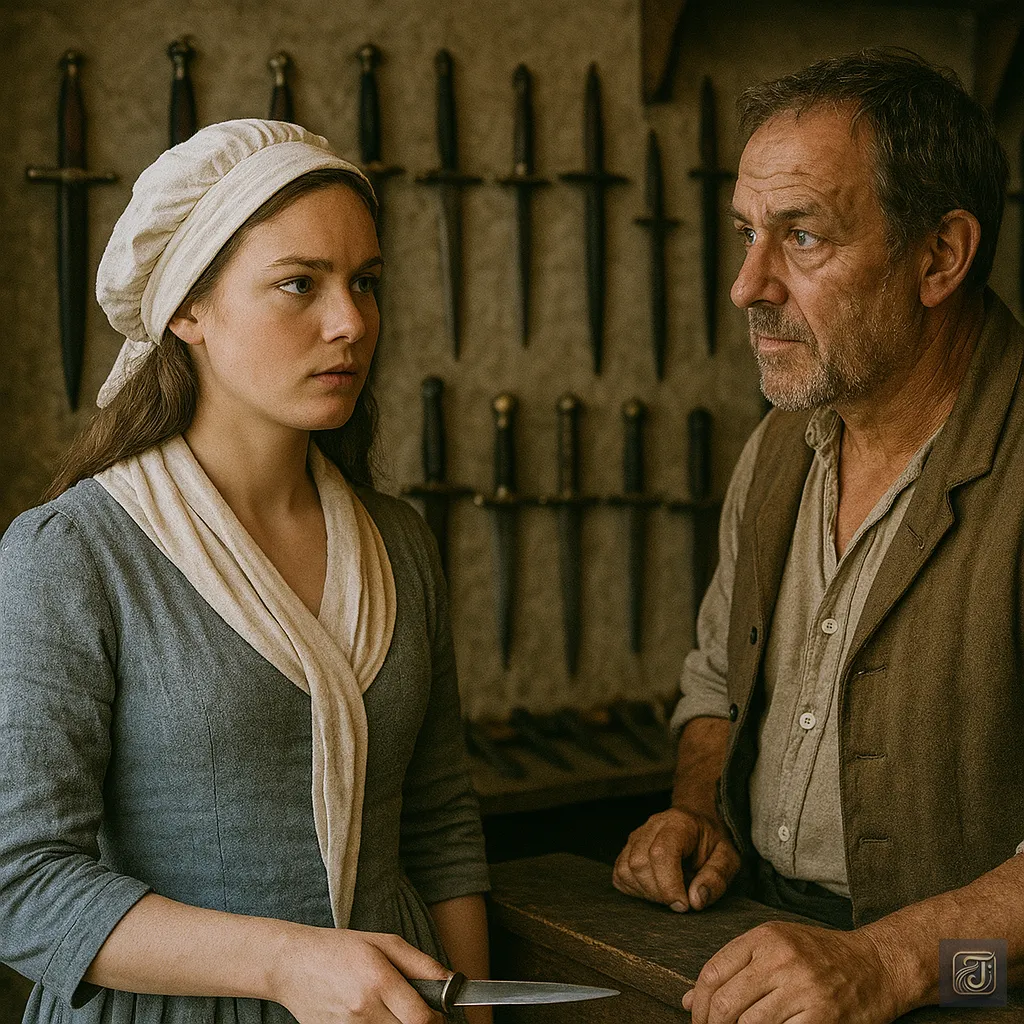
The shopkeeper:
“What are you looking for?”
Charlotte Corday:
“A dagger.”
The shopkeeper raised an eyebrow in surprise.
It was rare for a woman to ask for a weapon.
But her gaze was unwavering, and without a word, he reached for a dagger from the shelf and placed it before her.
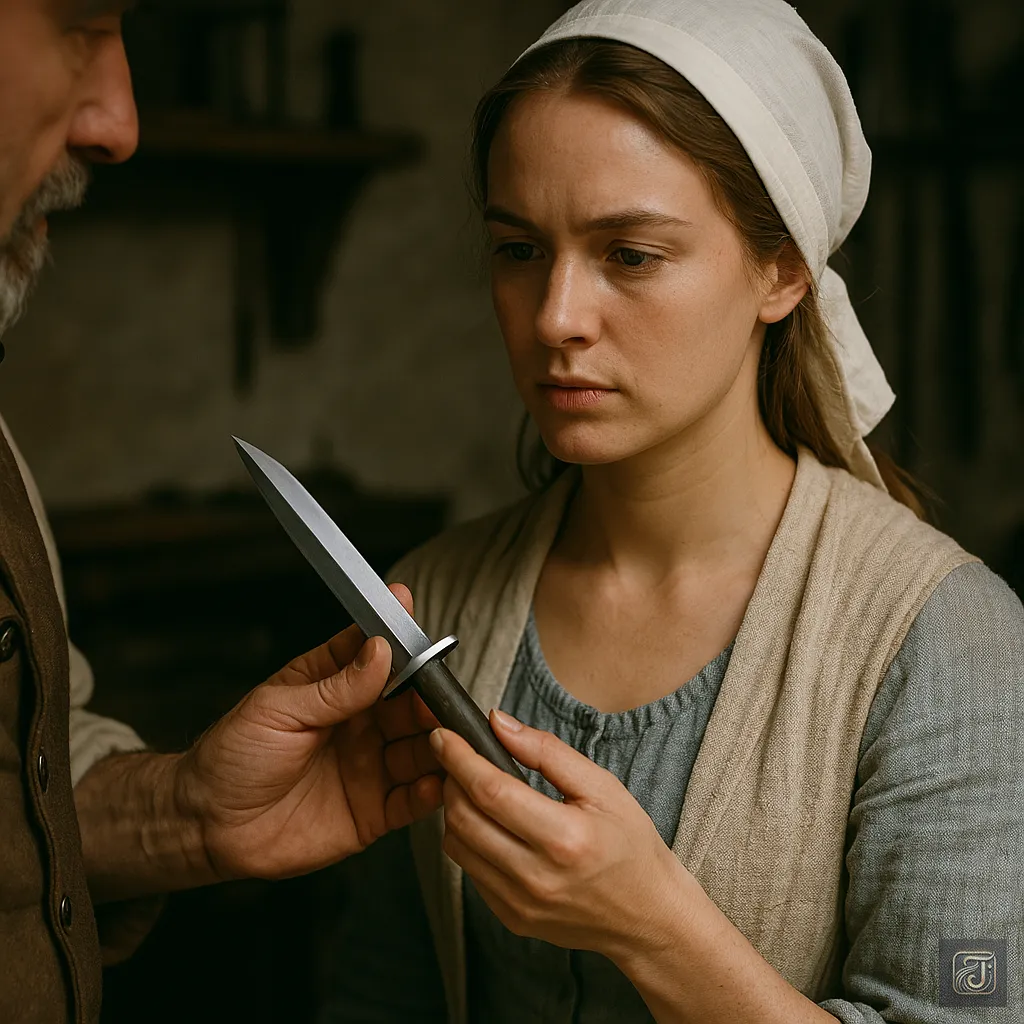
It was a plain dagger, about twenty centimeters in length—utterly unadorned.
Stripped of anything unnecessary, it existed for one purpose alone: to kill.
Nothing more, nothing less.

Charlotte Corday:
“This is light and easy to handle.”
“This will do.”
She paid the price and wrapped the dagger in cloth.
For a brief moment, a flicker of hesitation stirred in her heart.
But just as quickly, it vanished.
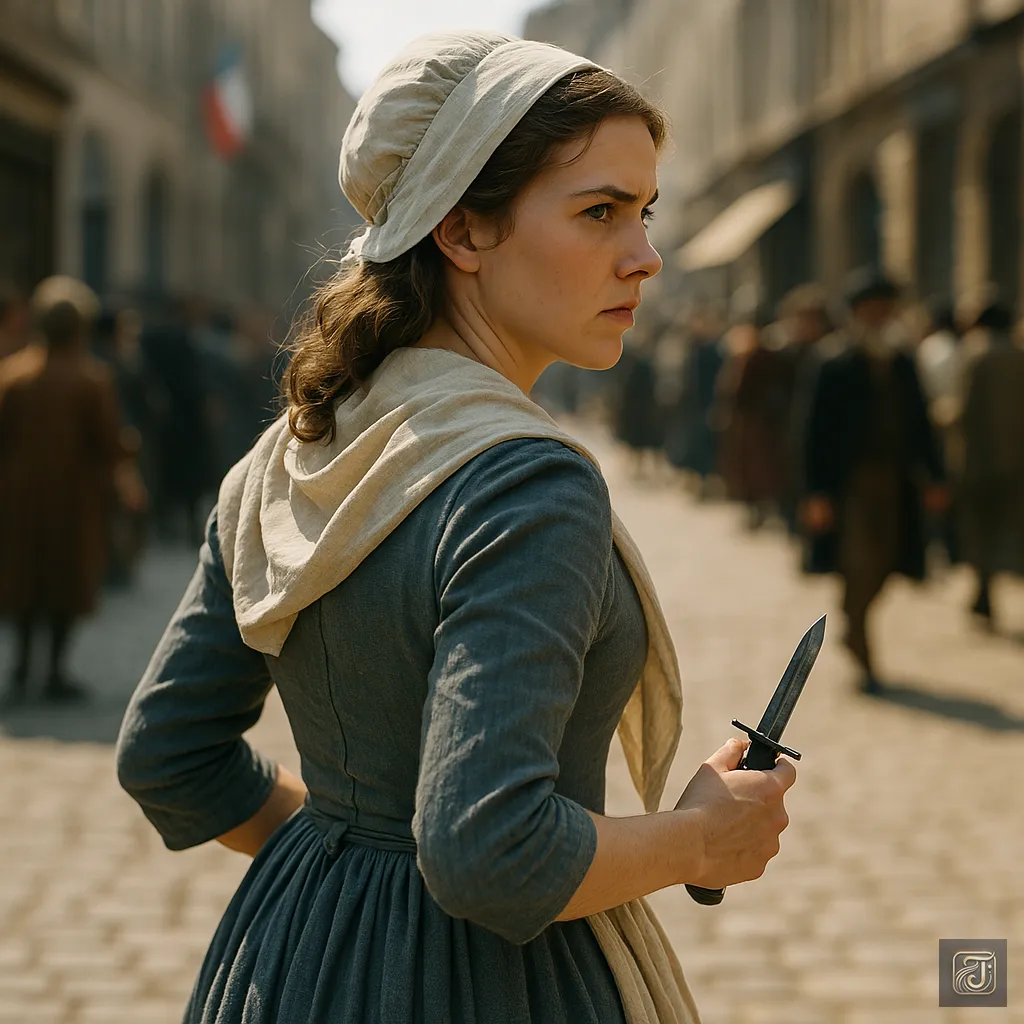
Charlotte Corday:
“This is an act for the sake of the Revolution.”
She tucked the dagger into her coat and disappeared into the noise of Paris.
Her resolve, now, was absolute.
Chapter 11: The Bloody Bath
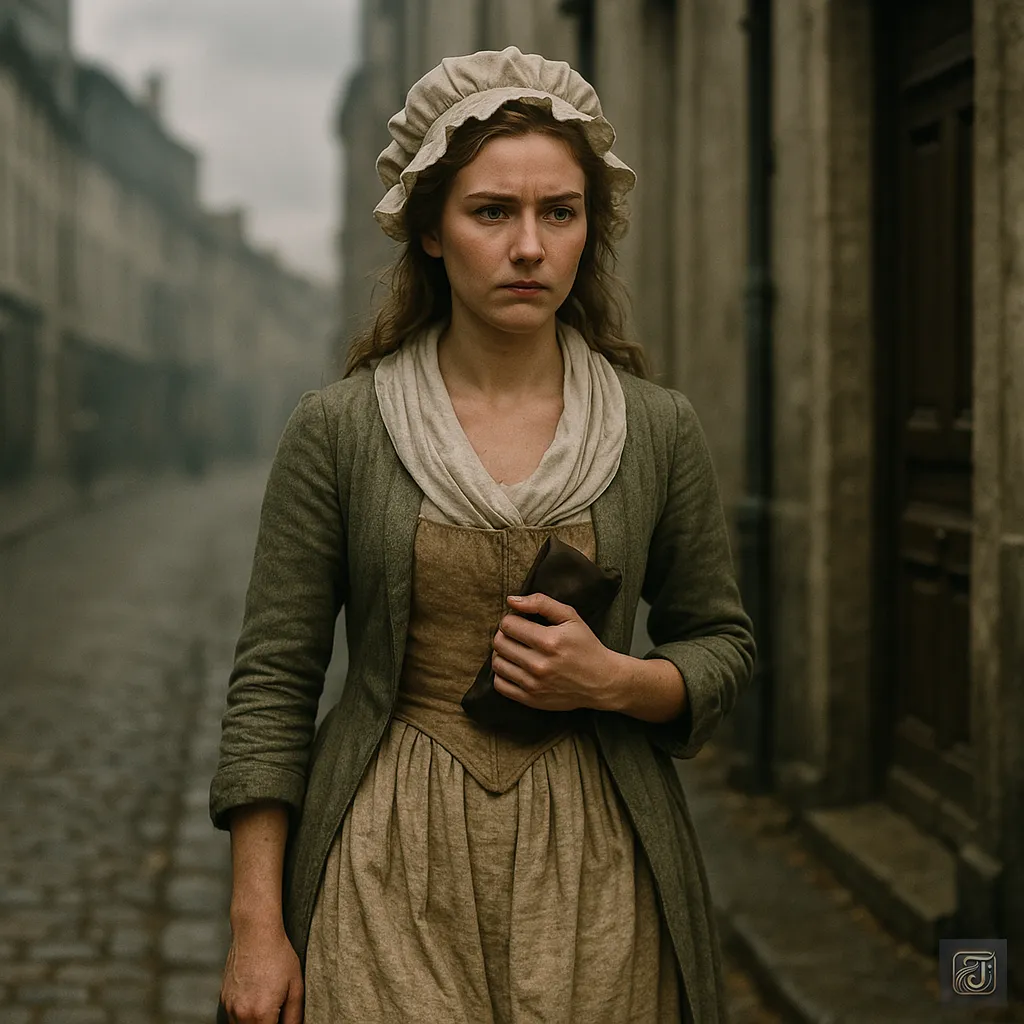
July 13, 1793.
The sky over Paris was overcast, and the damp air clung to the city like a heavy veil.
Charlotte Corday walked with calm, deliberate steps toward the home of Jean-Paul Marat.
Beneath her chest, concealed and silent, lay a single dagger.
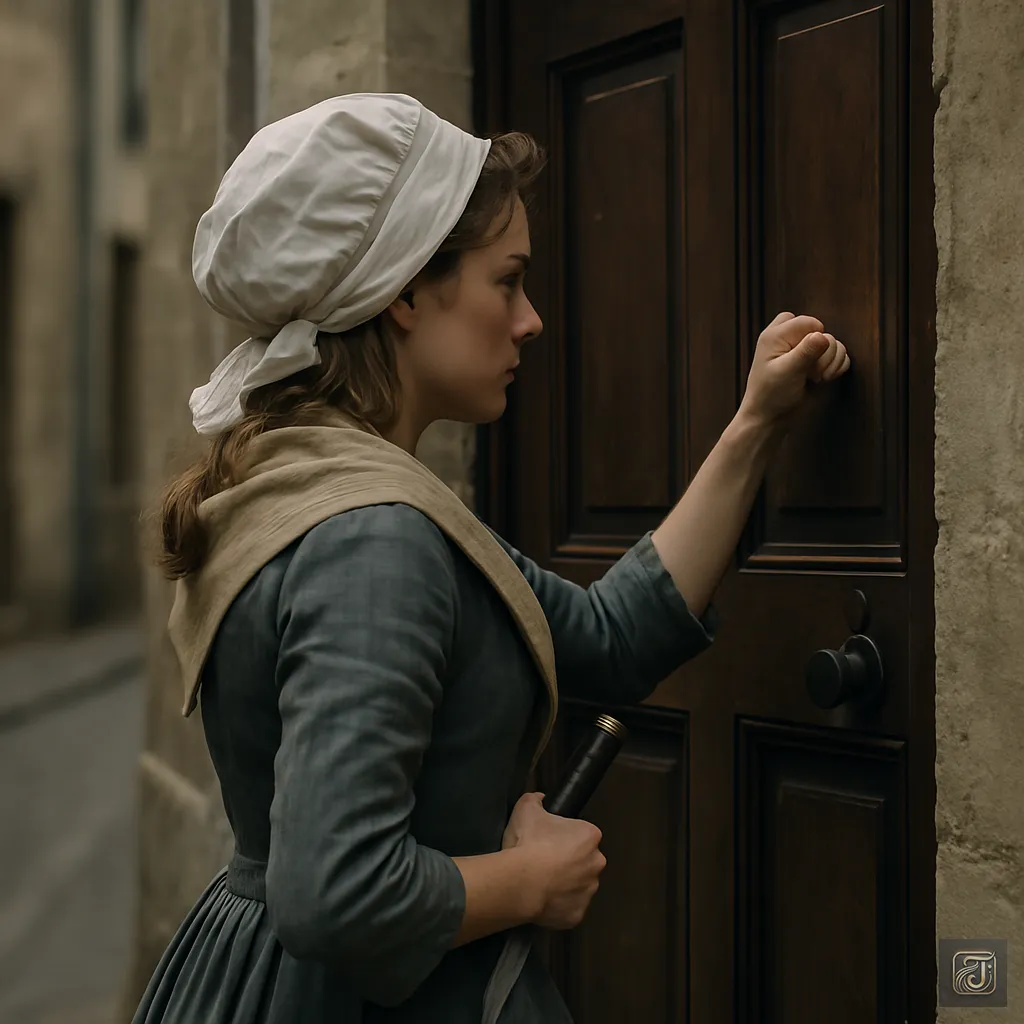
Charlotte took a deep breath and knocked on the door.
After a moment, it was answered by Marat’s companion, Simone.
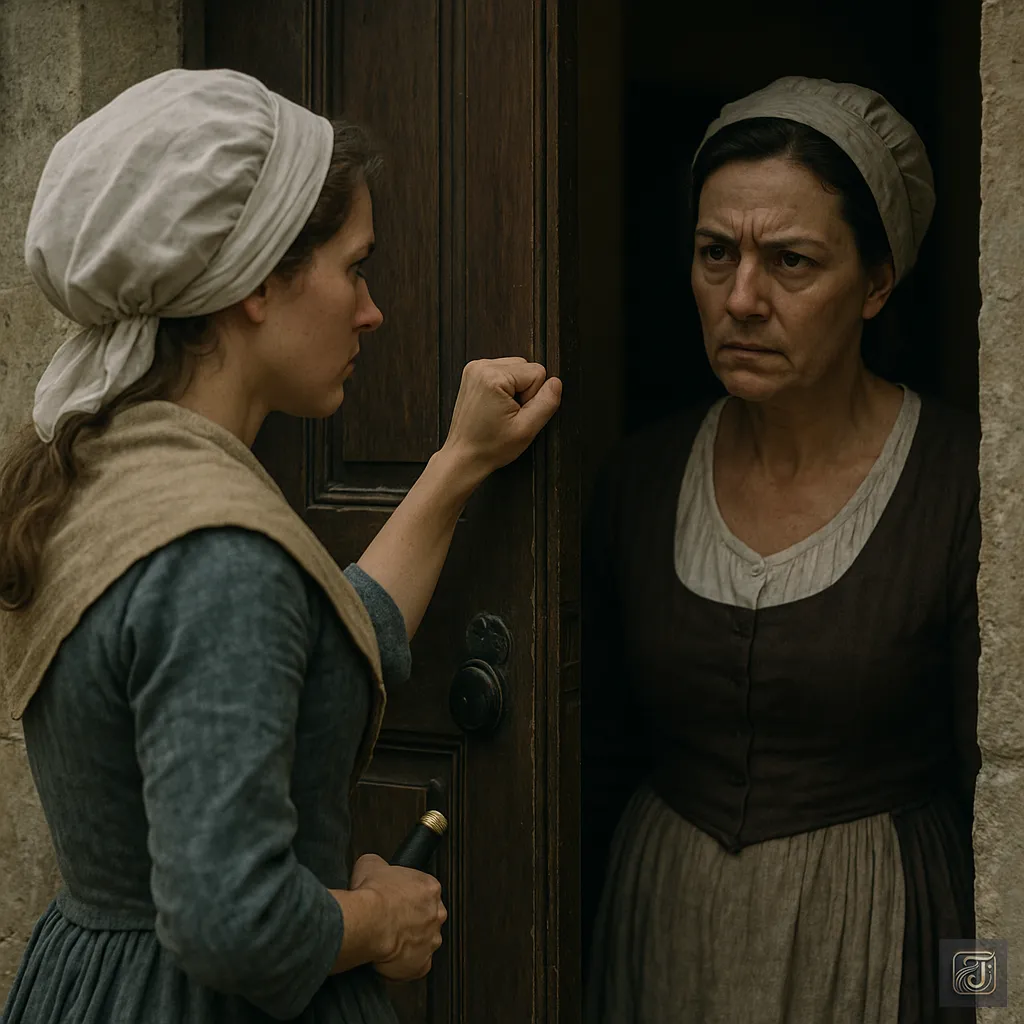
Simone:
“What do you want?”
Charlotte Corday:
“I have vital information about a Girondin conspiracy.”
“Please—I must speak with him.”
Simone:
“Marat is busy.”
“He has no time to hear what you have to say.”
But Simone’s eyes were filled with suspicion.
The door shut firmly.
Charlotte exhaled slowly and turned on her heel.
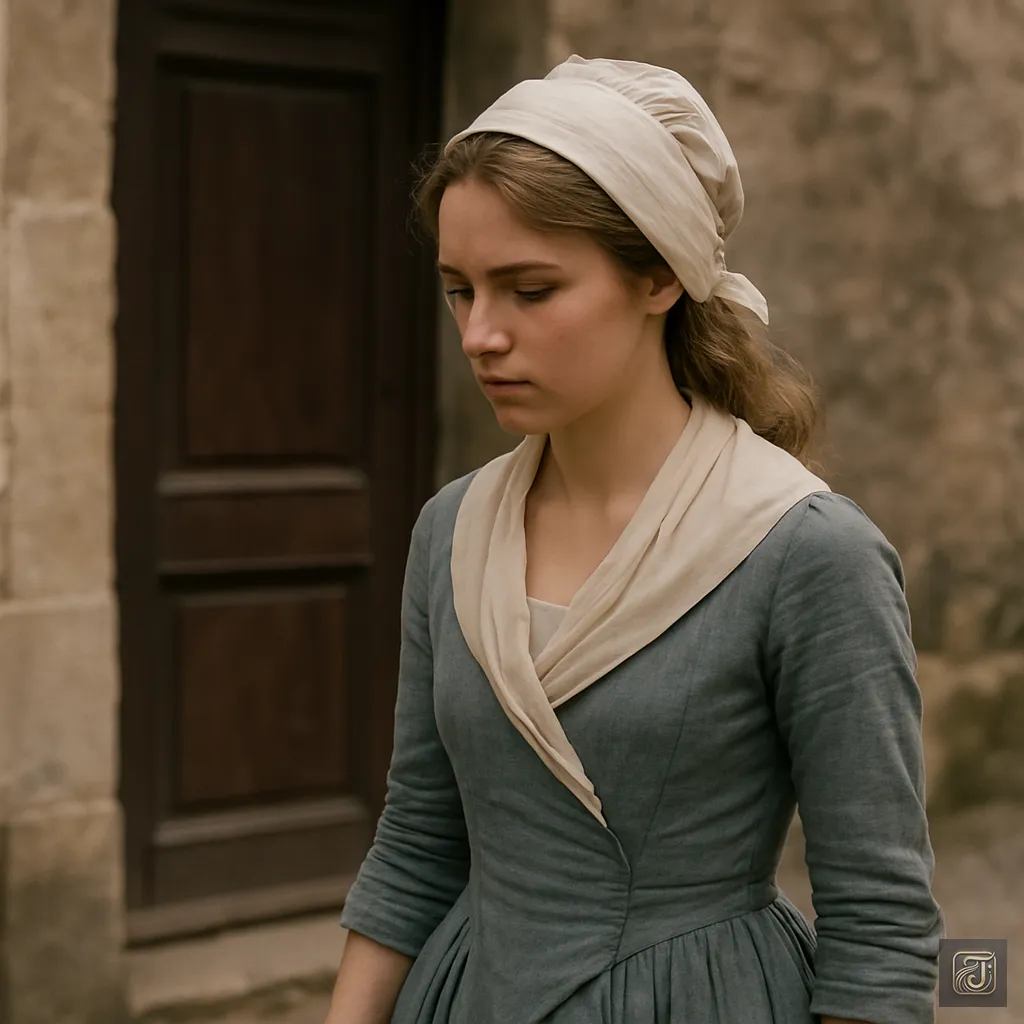
Charlotte Corday:
“It’s not over yet.”
She still had the will to try again.
That evening, she returned once more to Marat’s residence.
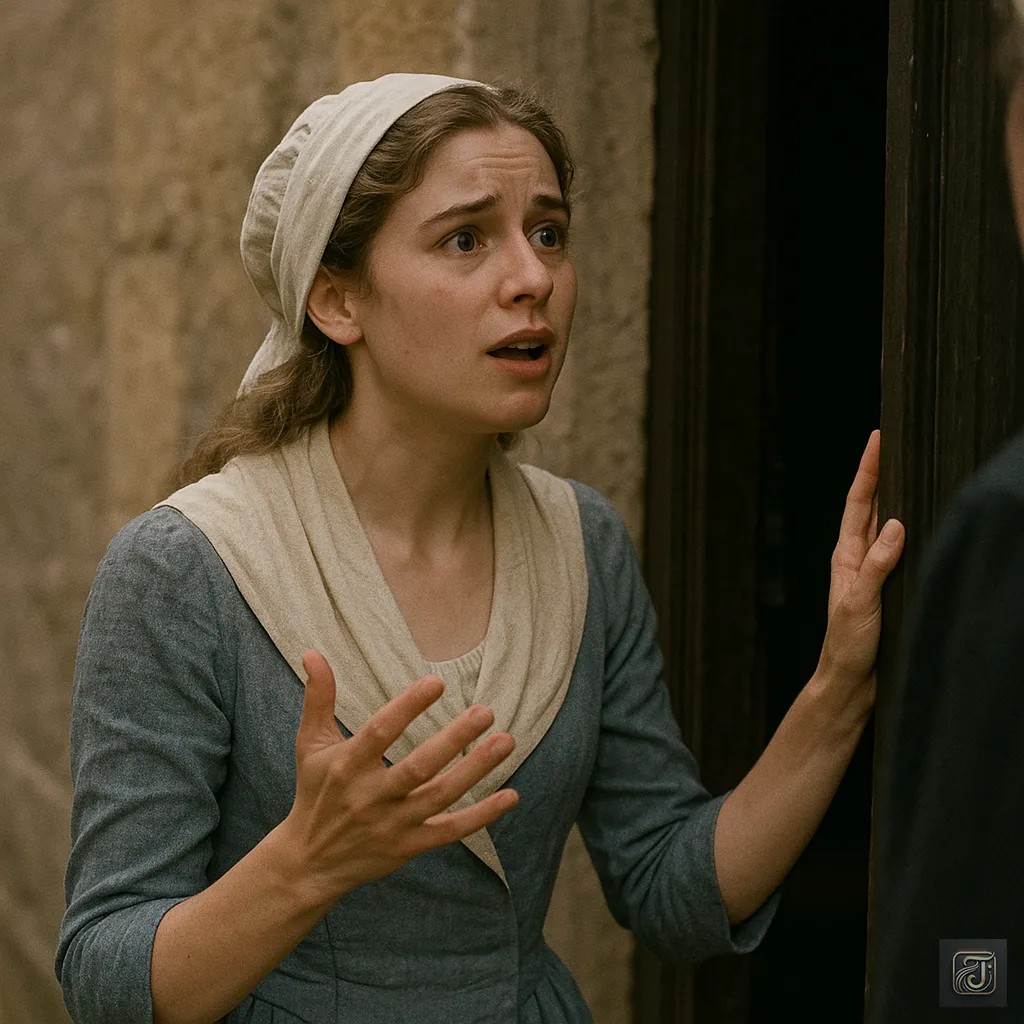
Charlotte Corday:
“Please, I beg you.”
“Let me see him.”
“I know secrets about the Girondins—it concerns his life!”
Simone hesitated for a moment—then, from the back room, a low voice called out.
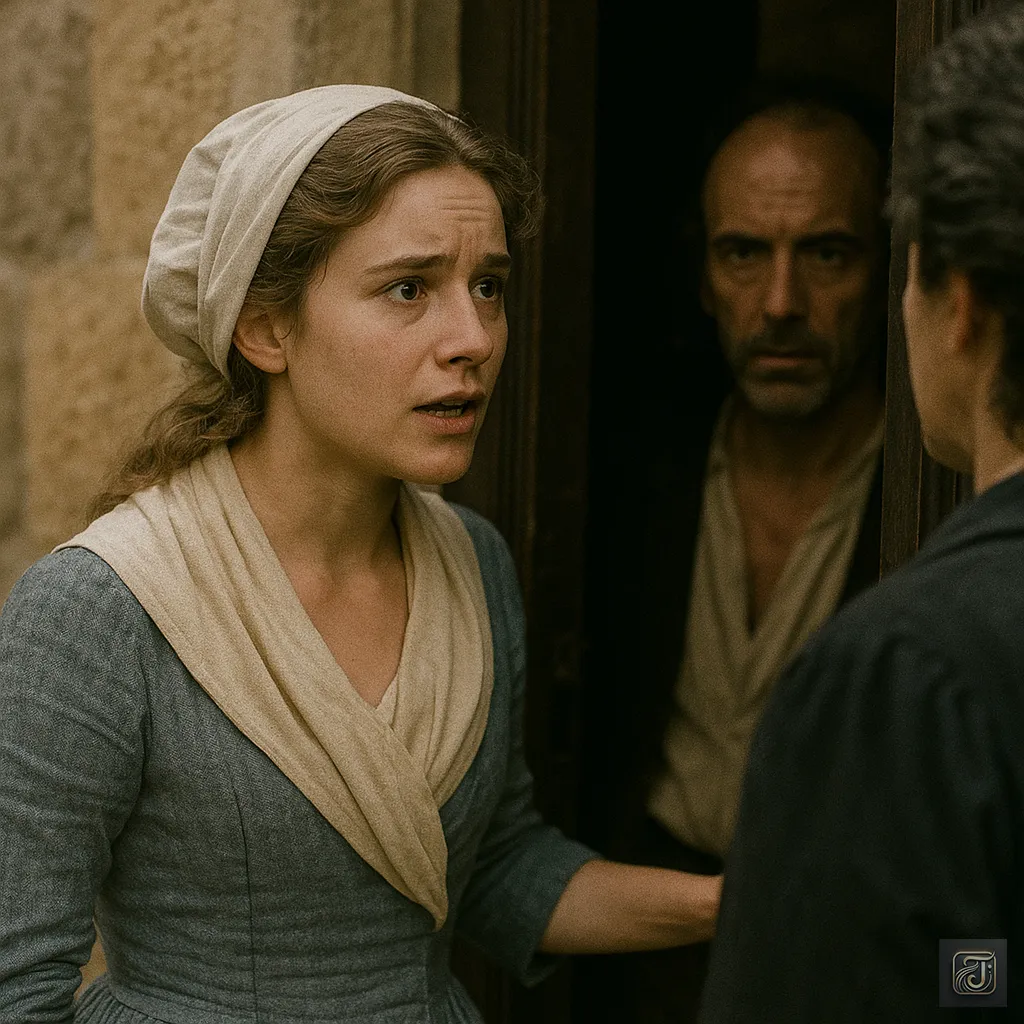
Marat:
“Let her in.”
This time, it was Marat himself who showed interest.
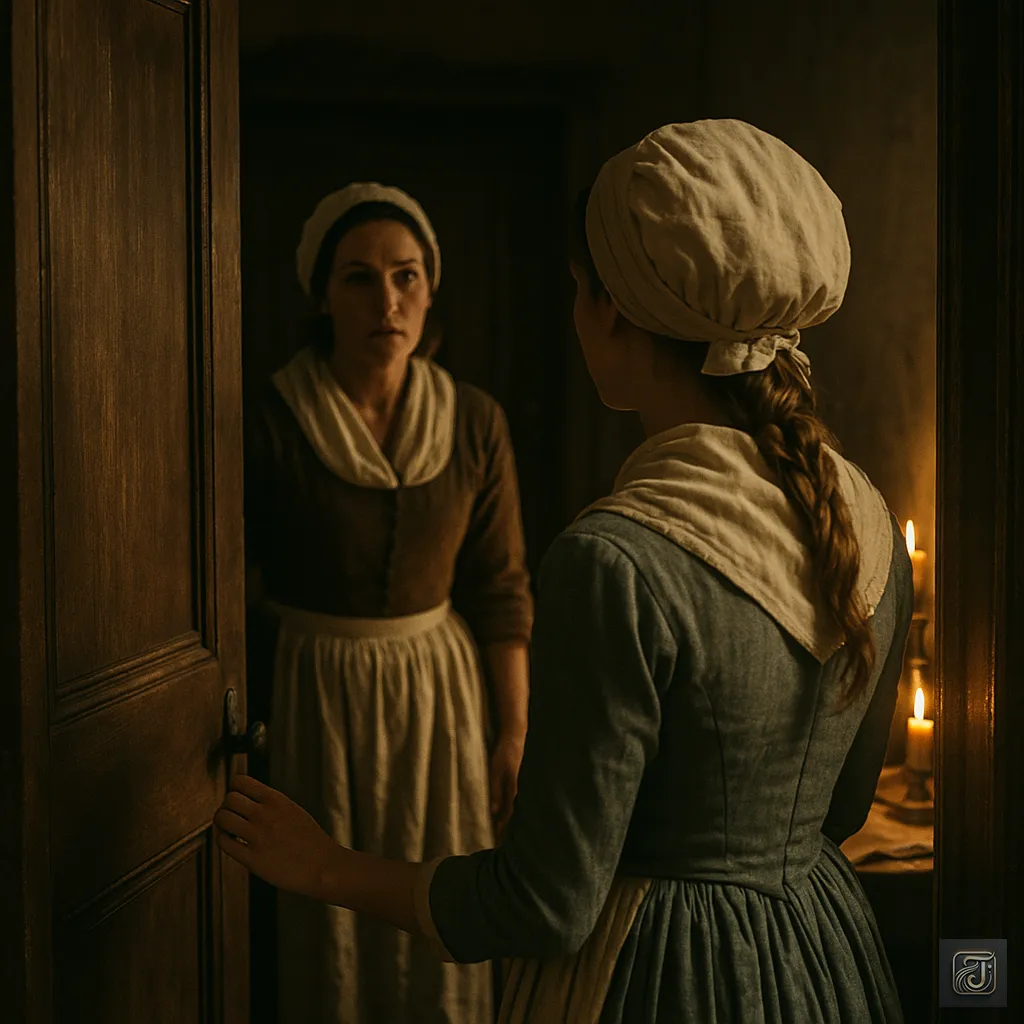
The door creaked open, and Charlotte slowly stepped inside.
The room was heavy with the damp scent of medicinal herbs, and the flickering light of candles cast shifting shadows across the walls.

In the bathtub lay Marat, his face pale and gaunt.
His skin was inflamed, raw with lesions, reddened by the constant irritation.
The water was cloudy, steeped with floating herbs whose bitter scent filled the air.
Afflicted with a chronic skin condition, he conducted his affairs submerged in the bath, his body unable to bear the outside air.
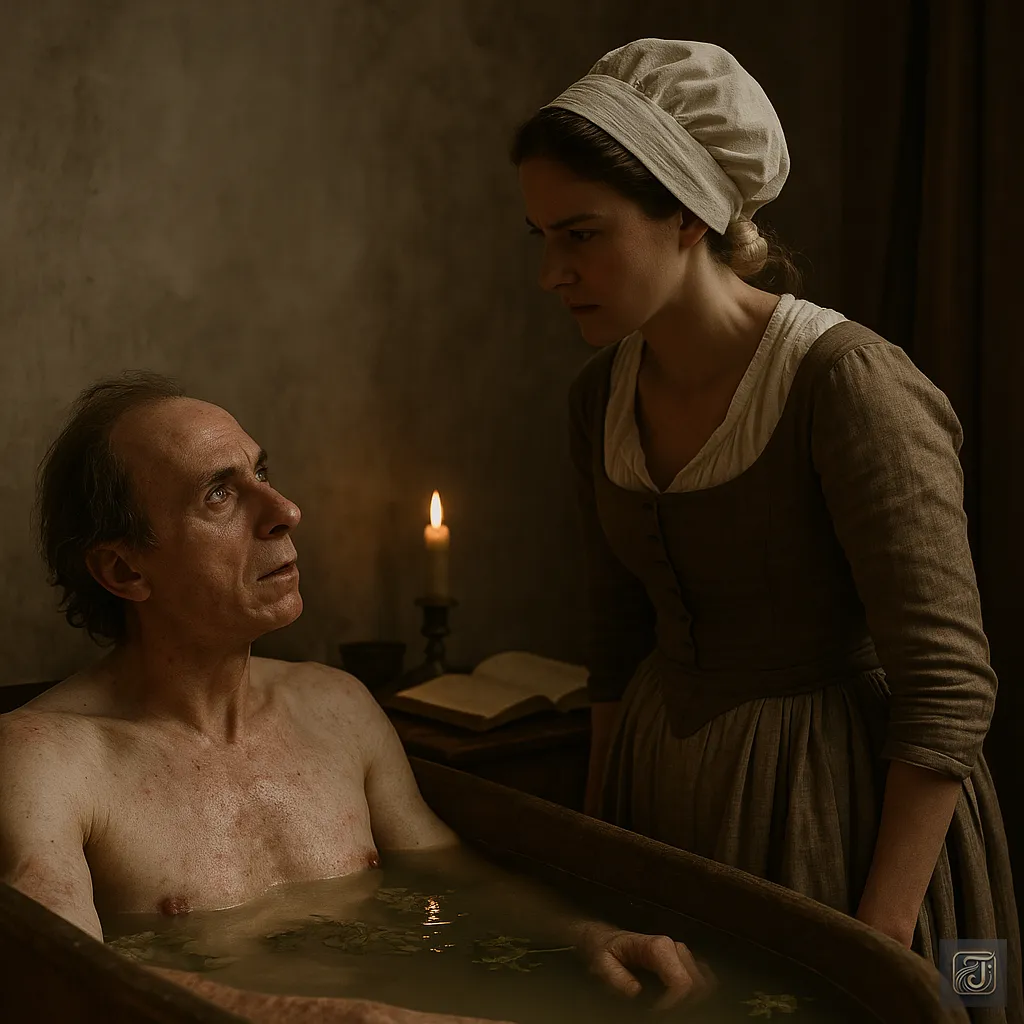
Marat:
“Well?”
“What is this Girondin conspiracy you speak of?”
Charlotte Corday:
“In Caen, the Girondin remnants are rallying.”
“They’re gathering troops—planning to retake Paris…”
Marat:
“Absurd.”
“They’re finished.”
“Those fools will never set foot in Paris again.”
Marat reached for his quill and began to jot down notes as Charlotte spoke.
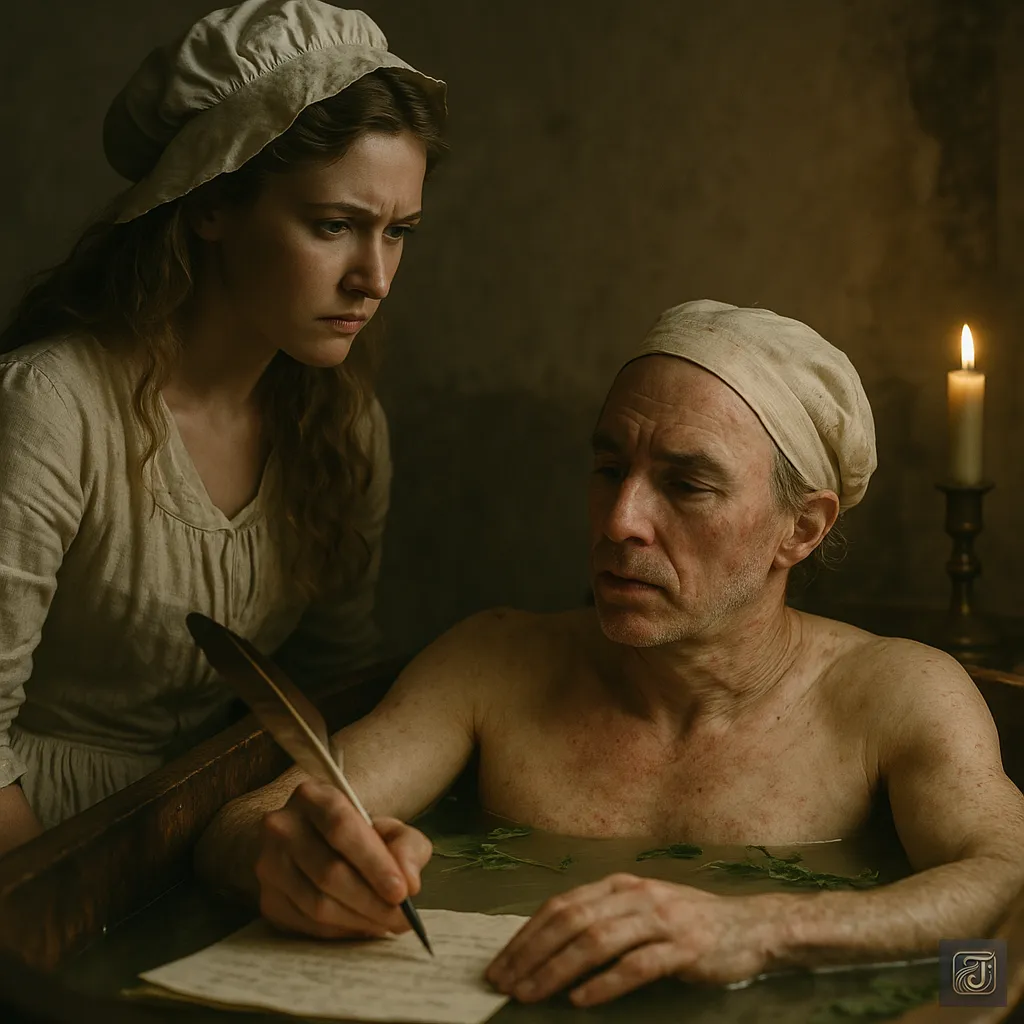
Marat:
“Give me the names.”
“The counter-revolutionaries in Caen.”
Charlotte Corday:
“And what will you do with their names?”
Marat:
“Send them to the guillotine.”
“What else?”
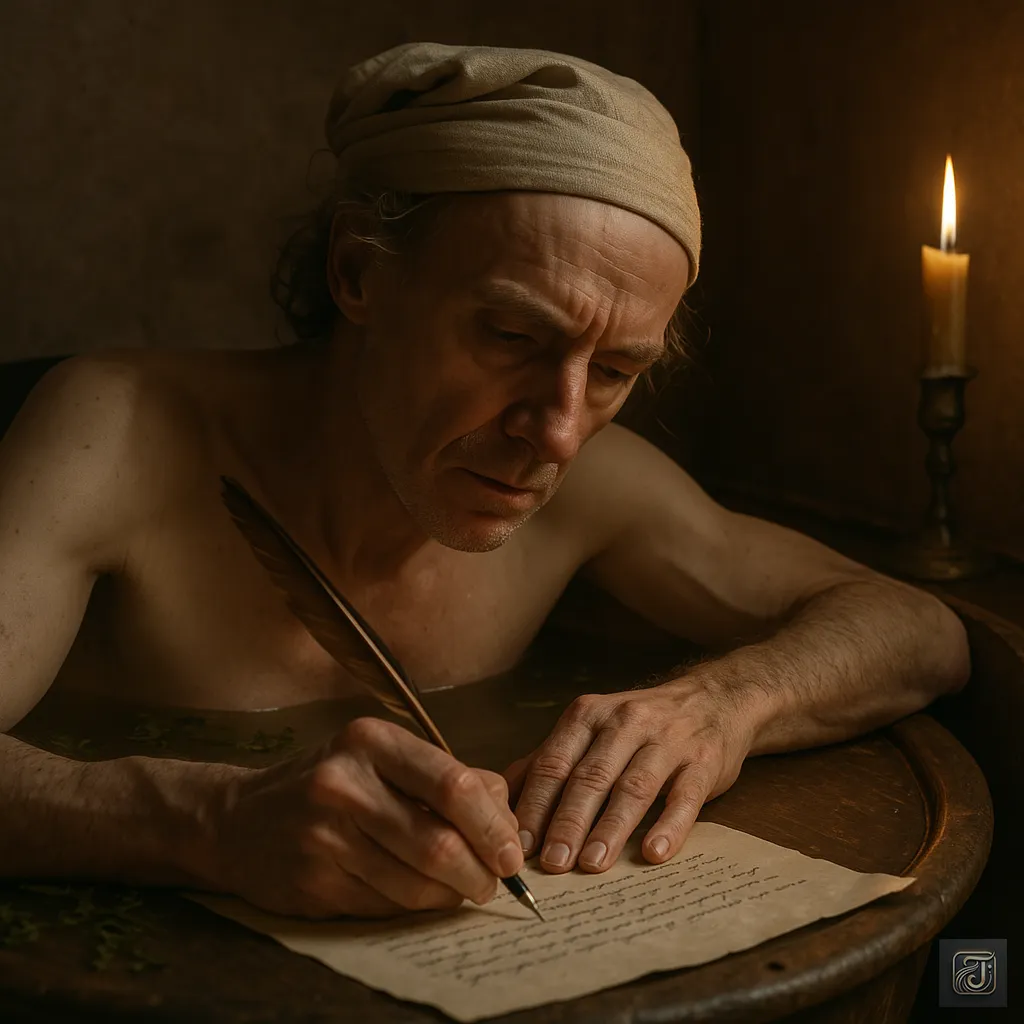
His fingers moved the quill across the paper, scratching names onto the surface.
Charlotte held her breath.
He was crafting a new list of the condemned—
right here, right now.
Then the quill stopped.
Marat looked up, locking eyes with Charlotte, and gave her a chilling, satisfied grin.
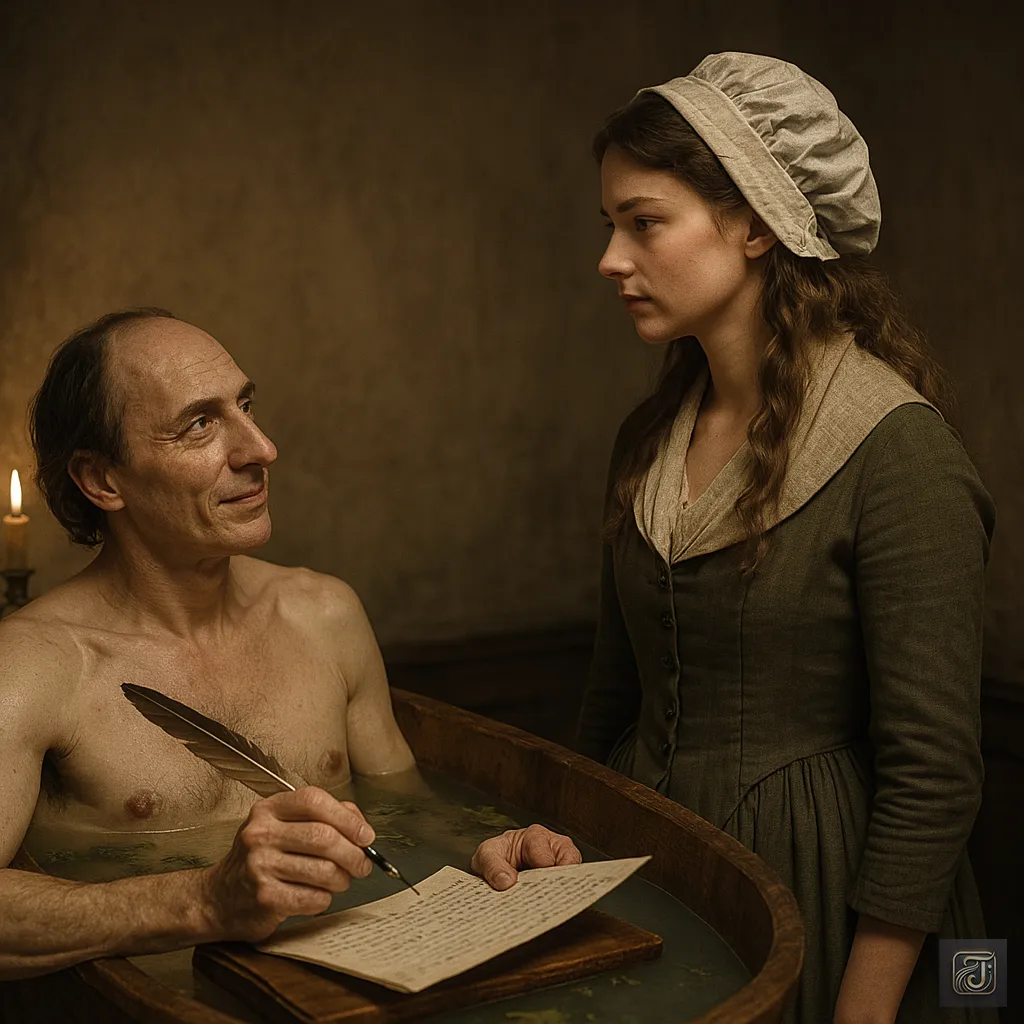
Marat:
“You’re beautiful.”
“Just like a true daughter of France—betraying the enemies of the Revolution.”
Charlotte Corday:
“…I came to save France.”
Her hand moved slowly, silently—reaching for the hilt of the dagger.
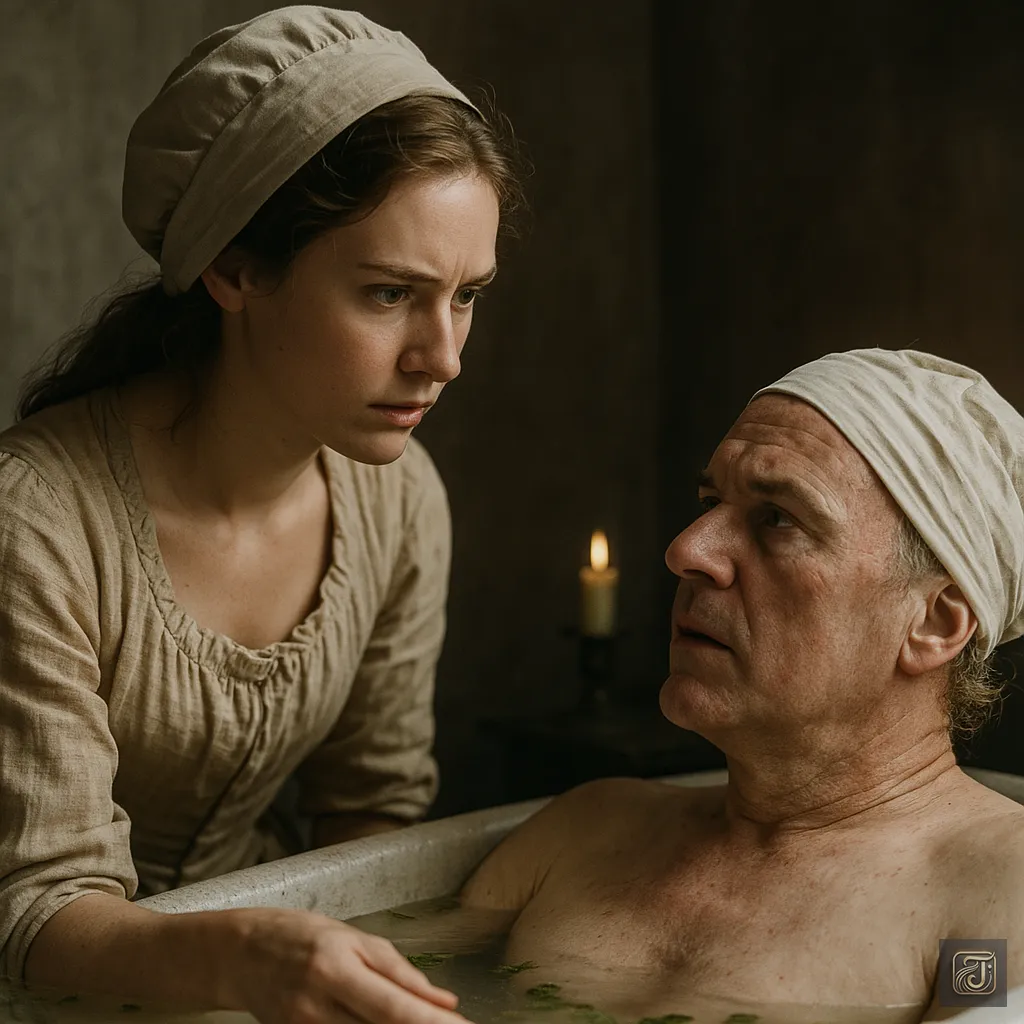
Marat:
“Hmph…?”
“And how exactly do you plan to save France?”
Charlotte Corday:
“There’s only one way.”
Her eyes flashed with resolve—sharp as steel.
Marat’s brow furrowed for the briefest moment.
And in that instant—
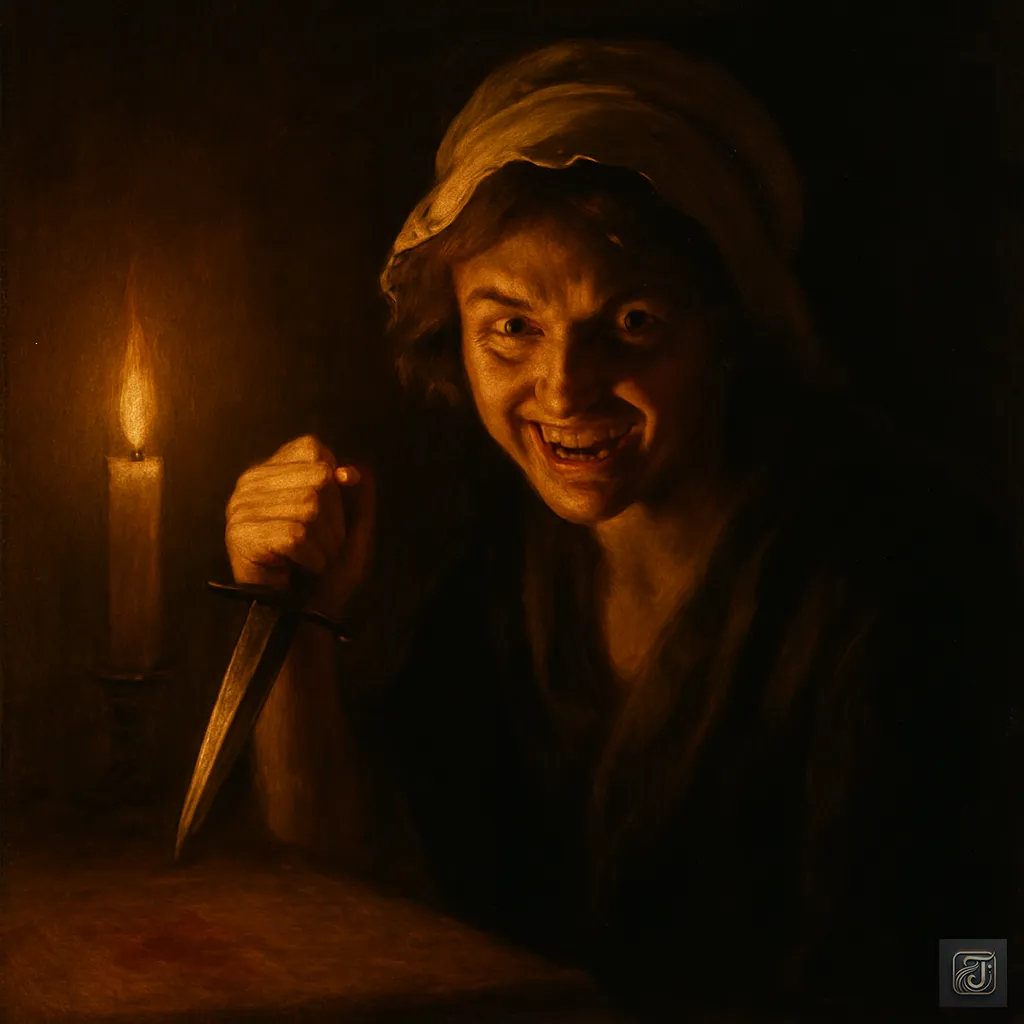
Charlotte Corday:
“It’s your death.”
In a single swift motion, her hand drew the dagger—and drove it deep into Marat’s chest.
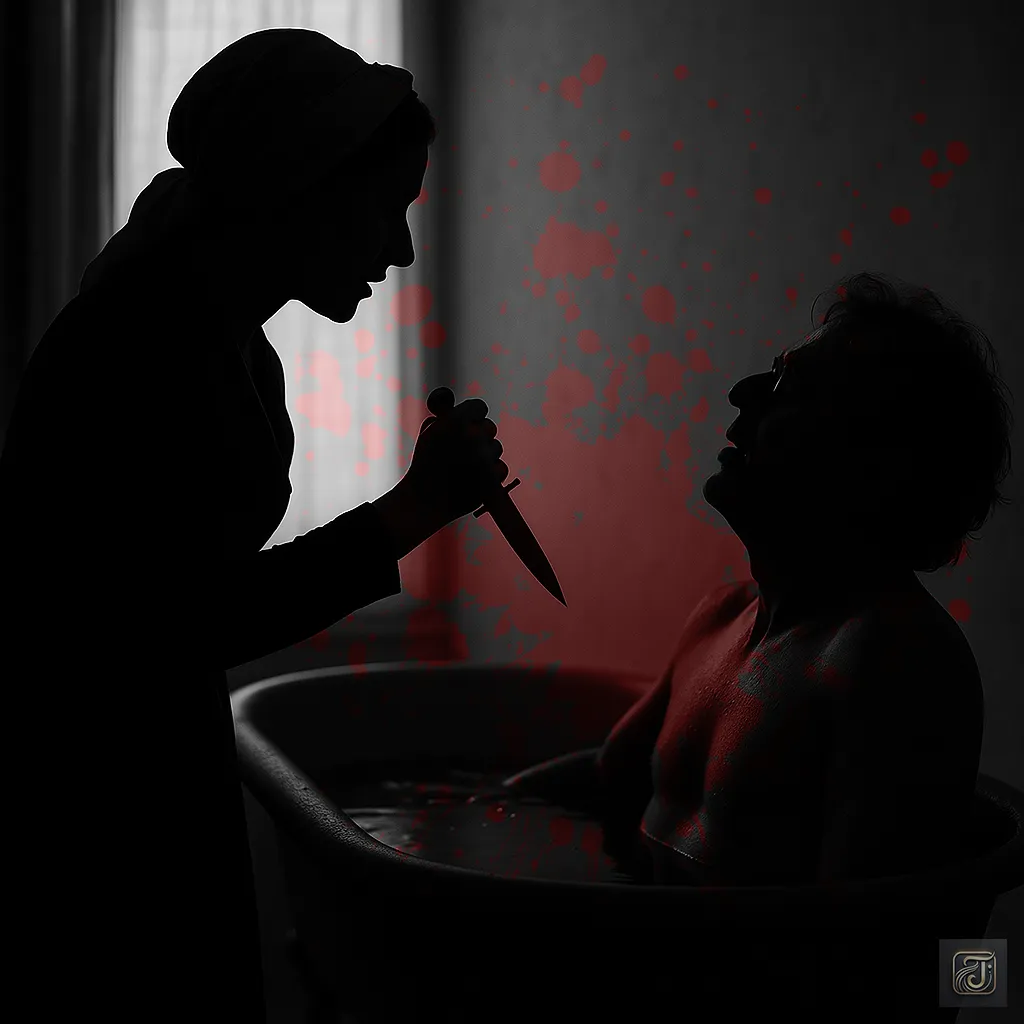
Marat:
“Aaa—!”
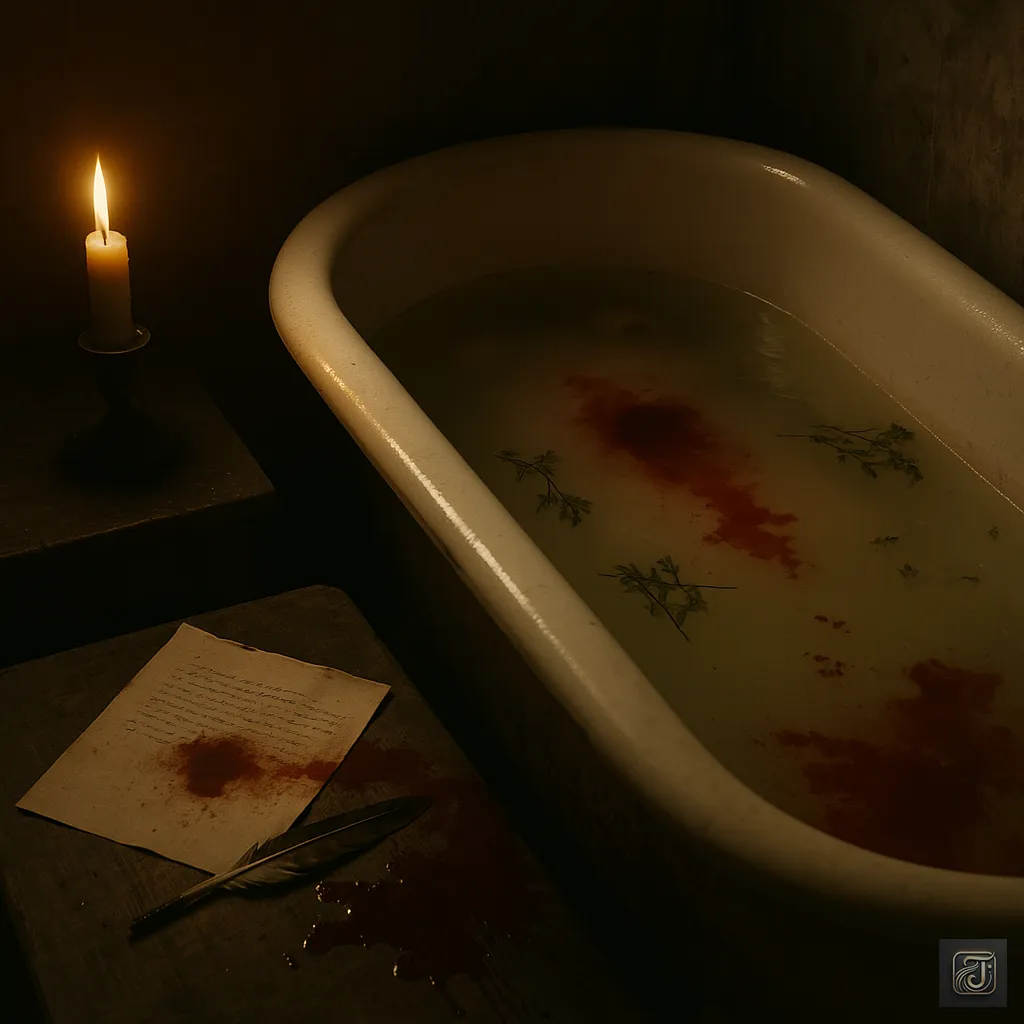
His eyes flew open in shock as crimson spread across the surface of the bath.
The quill and paper slipped from his hand, falling to the floor where a dark stain slowly bloomed in the silence.
The scent of herbs was overtaken by the sharp, metallic tang of blood.
His gaze—frozen in disbelief—soon moved no more.
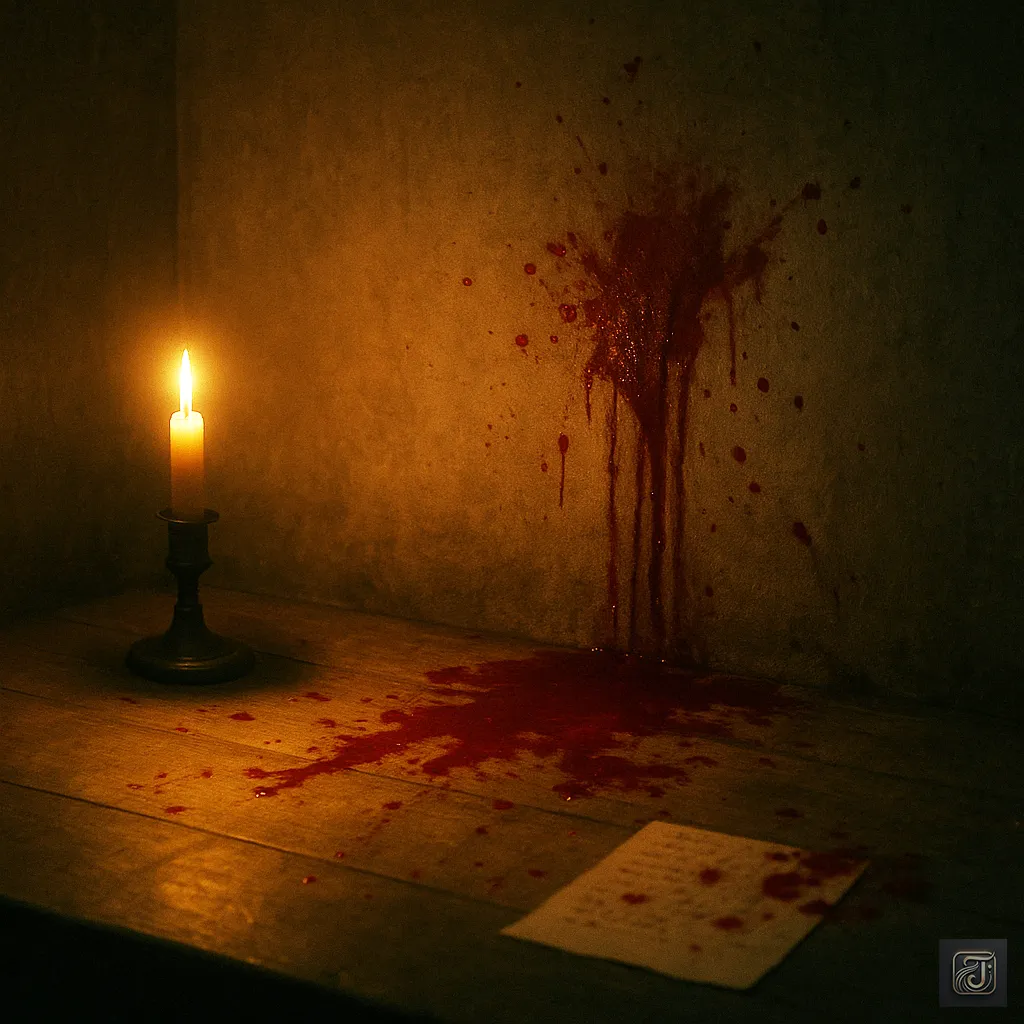
From beyond the door, Simone’s scream rang out.
Footsteps approached, fast and frantic.
Charlotte released the dagger, letting it clatter into the bloody water, and raised both hands calmly in surrender.
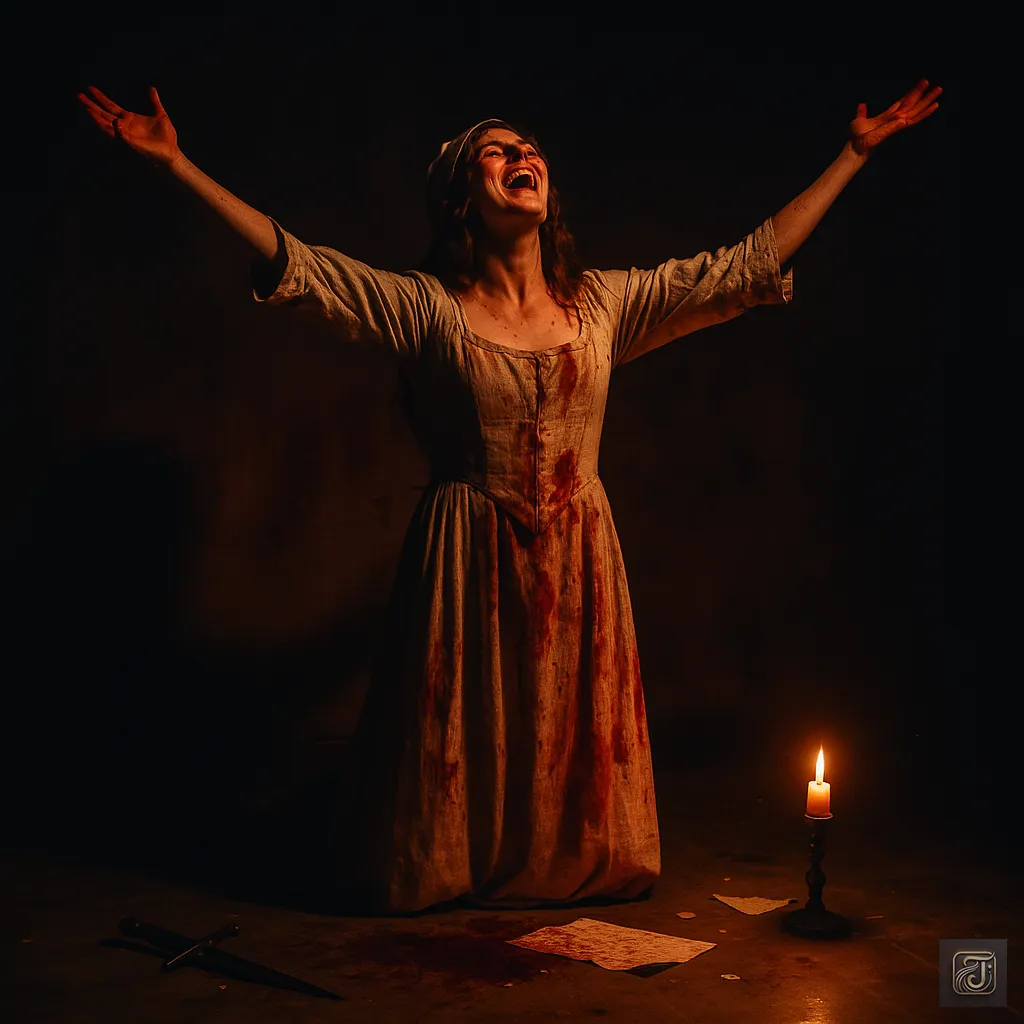
Charlotte Corday:
“It’s done.”
“At last… I’ve done it.”
The next moment, the door burst open—and men lunged at her.
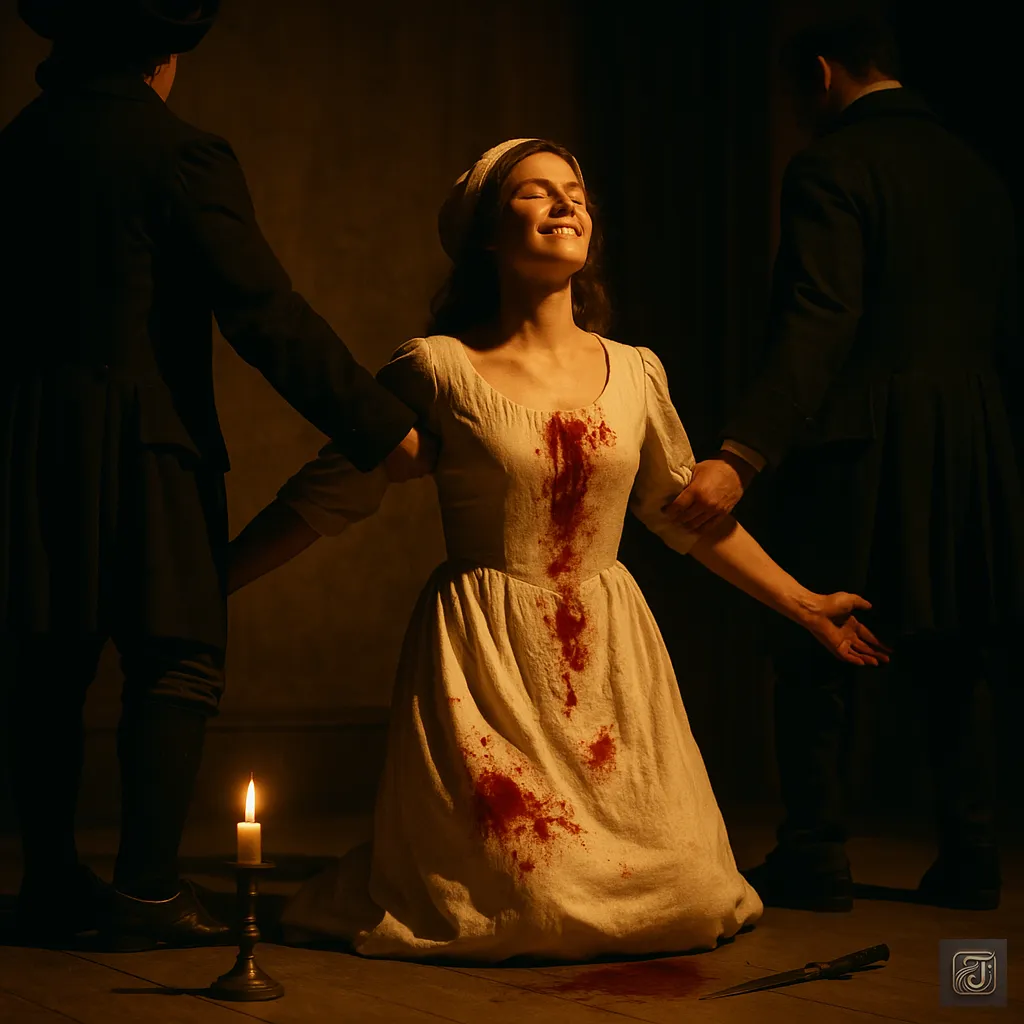
Hands seized her arms, restraining her as the blood from the dagger still dripped from her fingertips.
Charlotte did not flinch.
She simply smiled—calm, unwavering.

Charlotte Corday:
“I have fulfilled my mission.”
“Now France can be saved.”
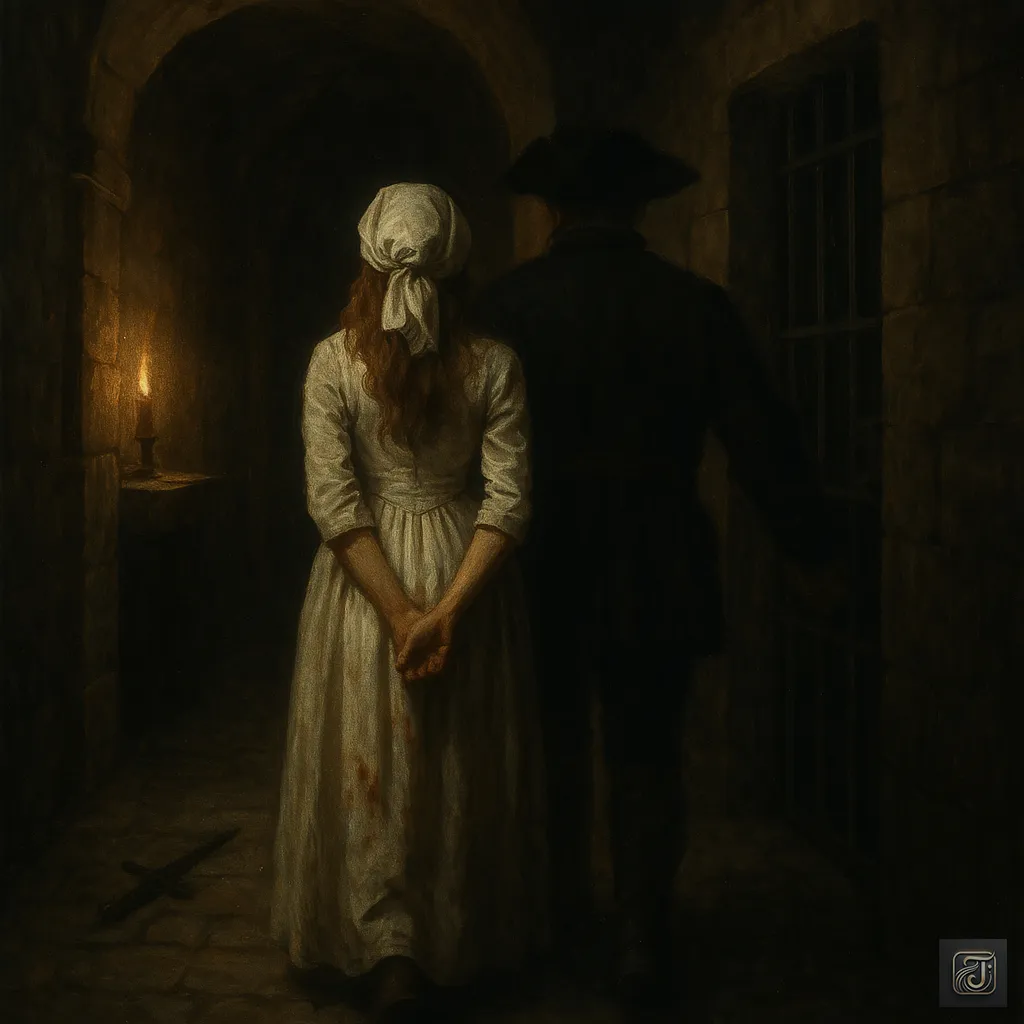
She was taken away, escorted to prison—just like that.
What impact would her act have on the flames of revolution…
She would never live to know the answer.
Chapter 12: Unshaken Conviction
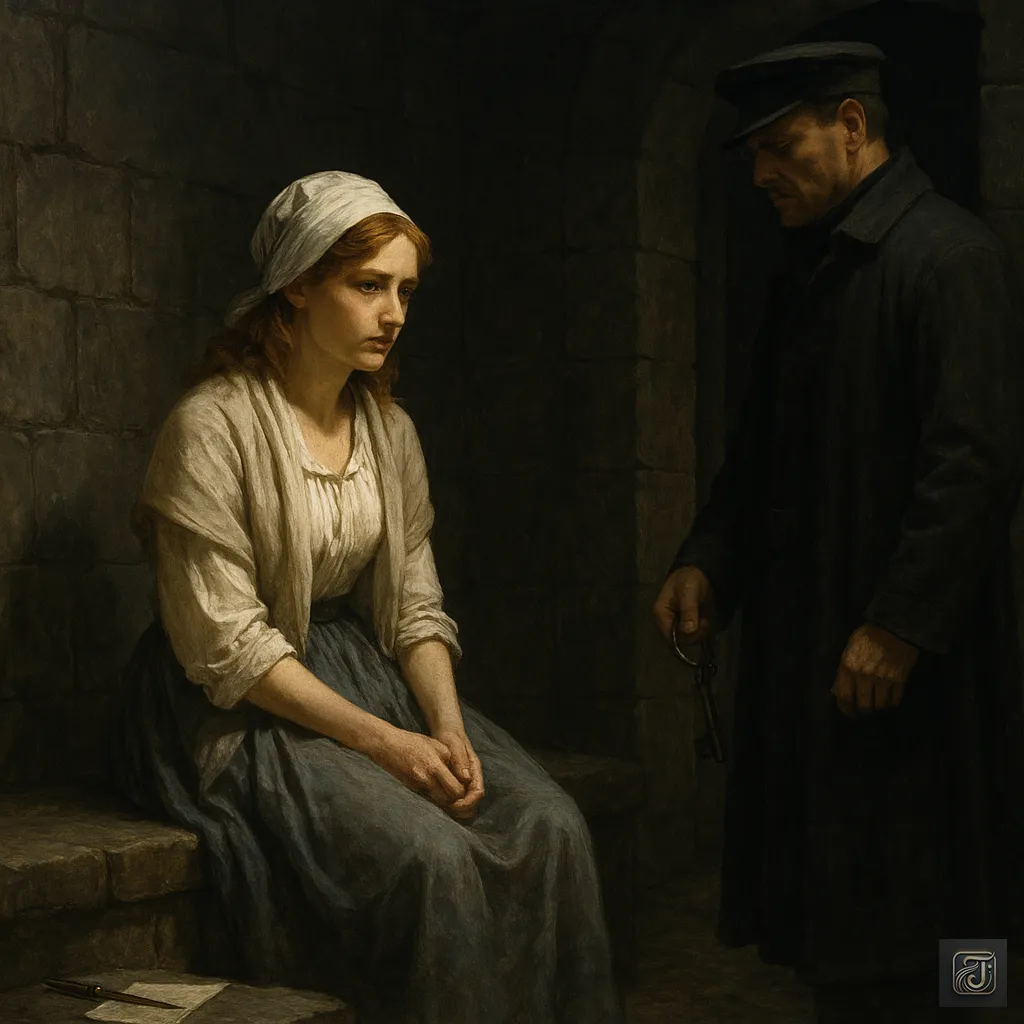
July 14, 1793.
Charlotte Corday sat quietly on the cold stone floor of a Parisian prison.
The door creaked open, and a guard entered without a word, motioning for her to stand.
It was time for the interrogation.
Charlotte rose slowly and began to walk—calm, composed, and unafraid.
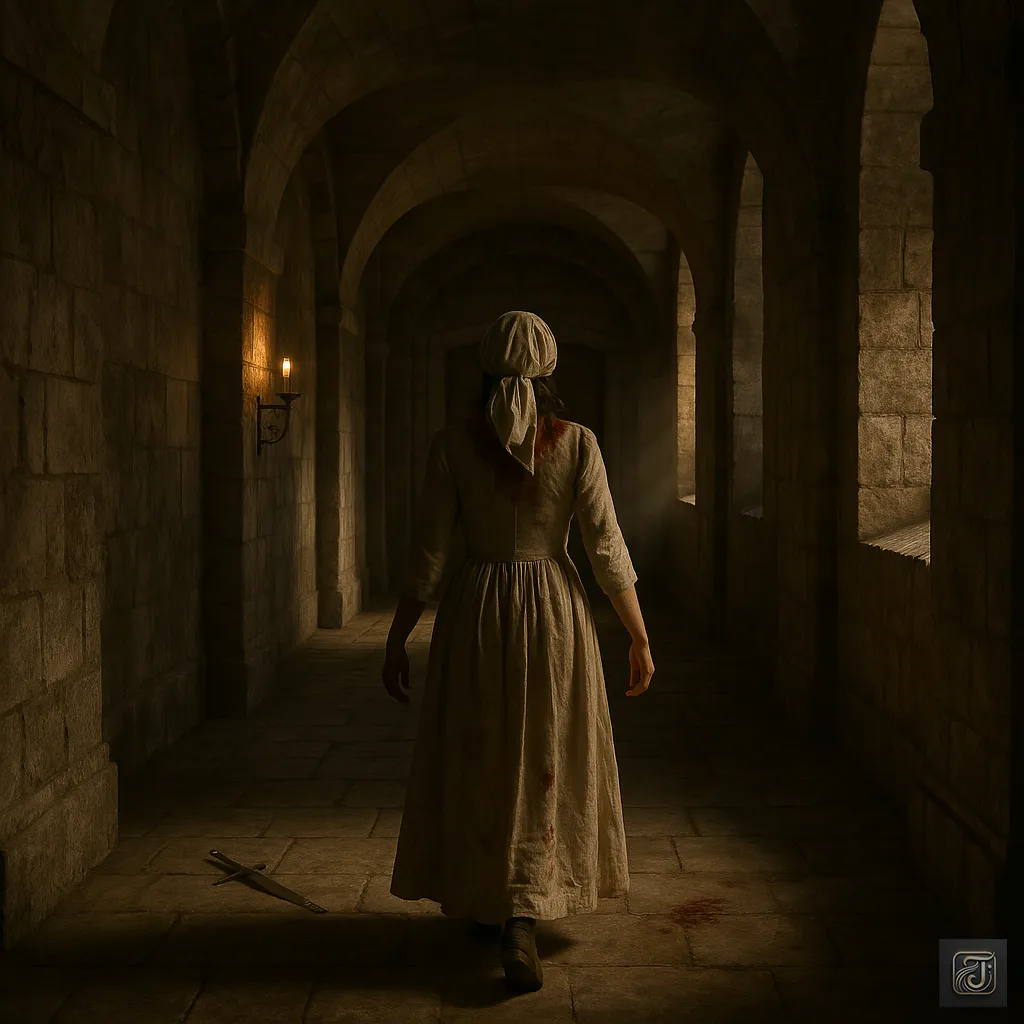
At the end of the corridor, the Revolutionary Tribunal awaited her.
She did not fear her fate.
The courtroom doors swung open.
Charlotte Corday stepped quietly into the cold, stone chamber.
The gallery was packed with Jacobin supporters—and the moment they saw her, they erupted into furious shouts and jeers.
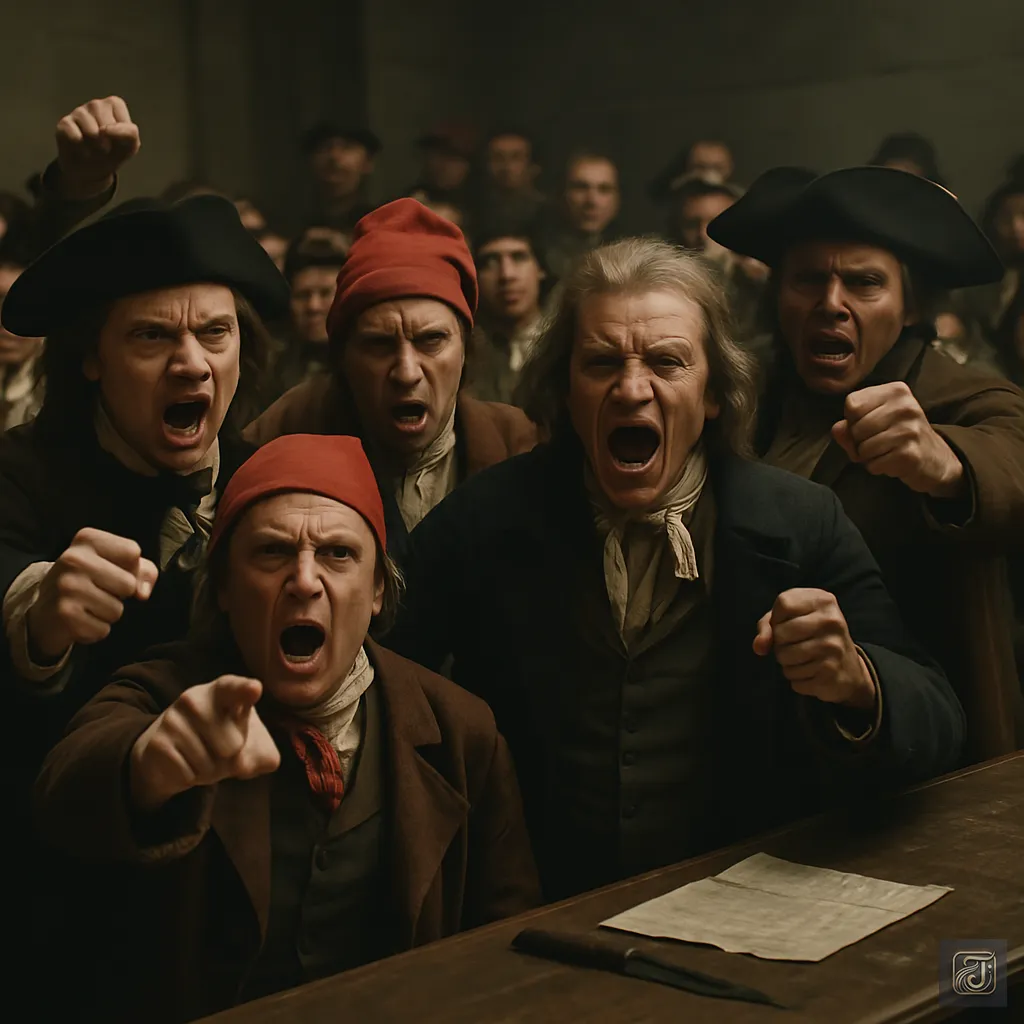
Crowd:
“Murderer of Marat!”
“Send the counter-revolutionary witch to the guillotine!”
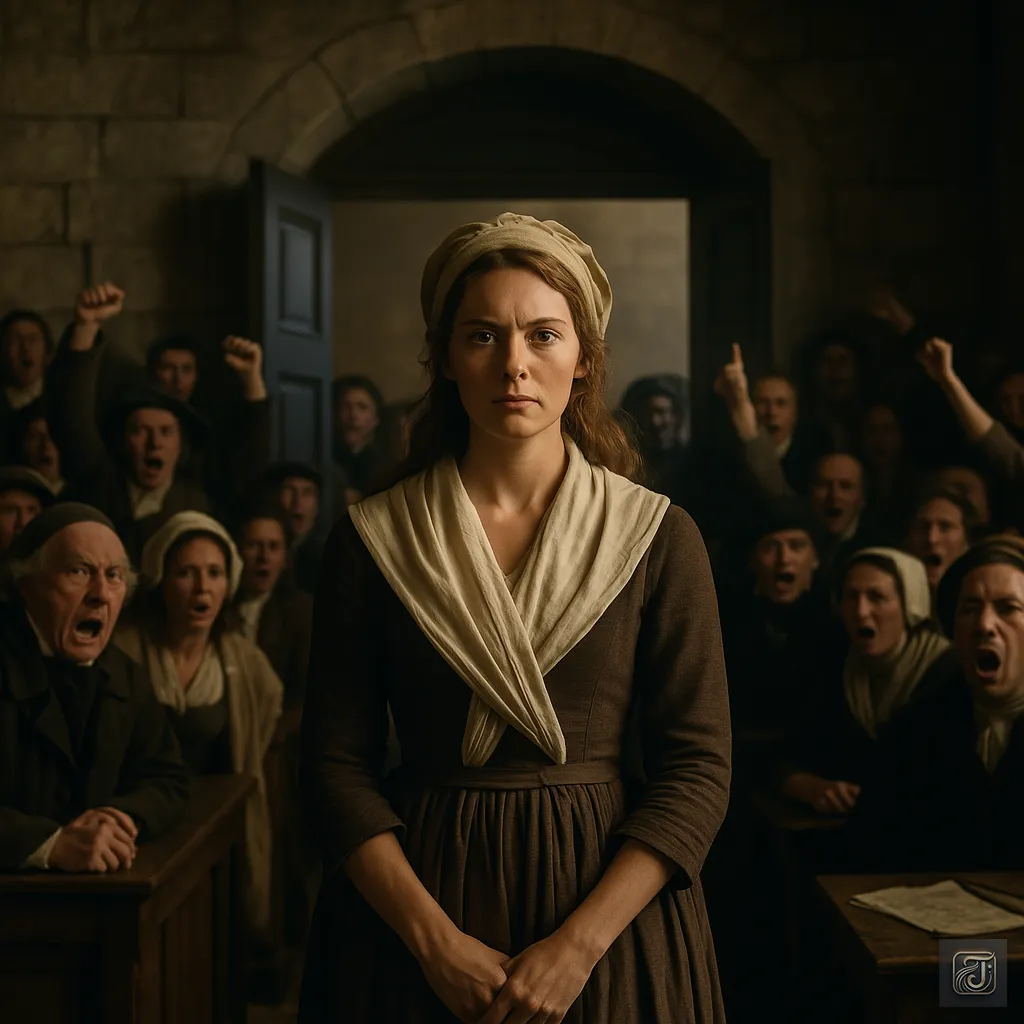
Charlotte said nothing, her gaze fixed straight ahead.
The judges’ eyes were cold, and the prosecutor wore a sardonic smile.
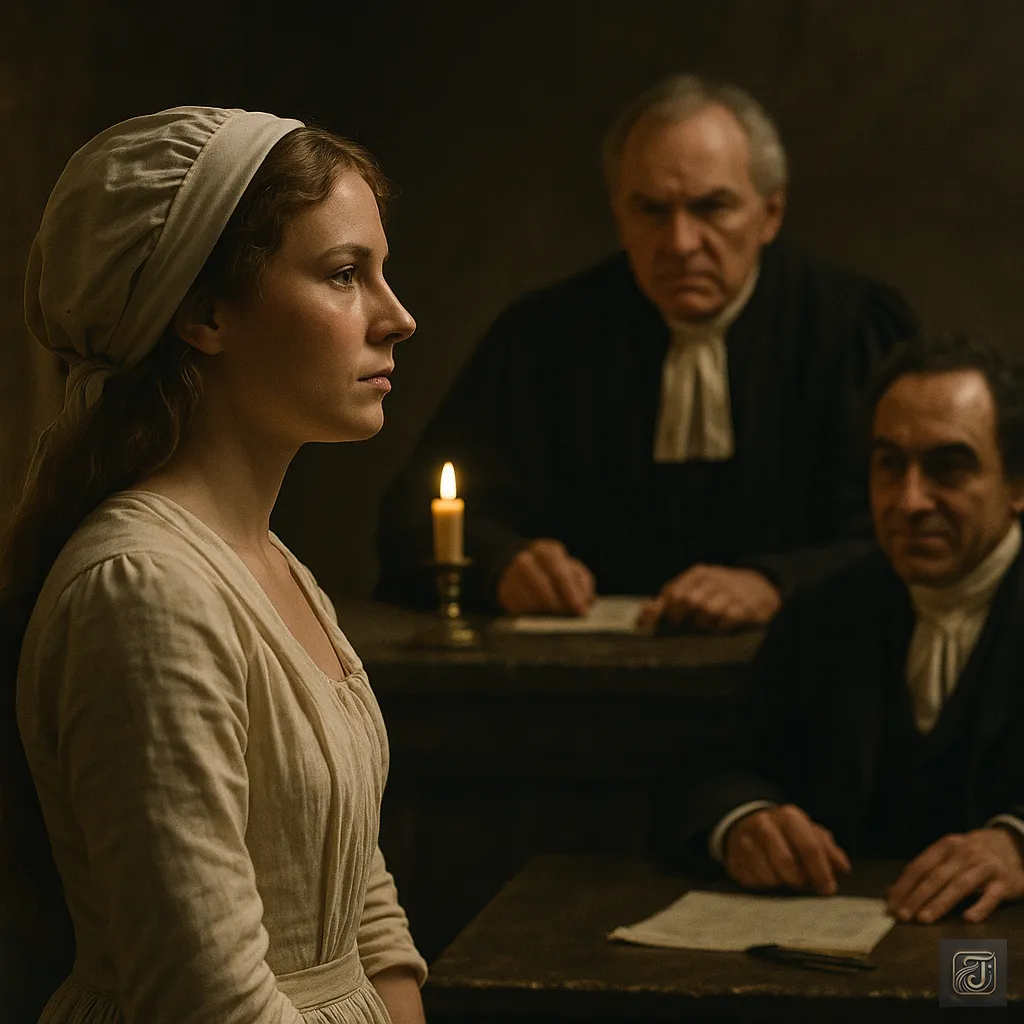
Judge:
“State your name.”
Charlotte Corday:
“Charlotte Corday.”
Judge:
“You murdered Jean-Paul Marat, the hero of the revolution.”
“This is a grave crime.”
“Why did you kill Marat?”
Charlotte answered with a calm smile.

Charlotte Corday:
“To save France.”
She answered clearly, without a hint of hesitation.
The courtroom erupted in murmurs.
In an era dominated by the madness of the revolution, where everyone was silenced by the terror of the Jacobins, this young woman stood firm.
The prosecutor stood up from his chair, slamming his hand on the desk.
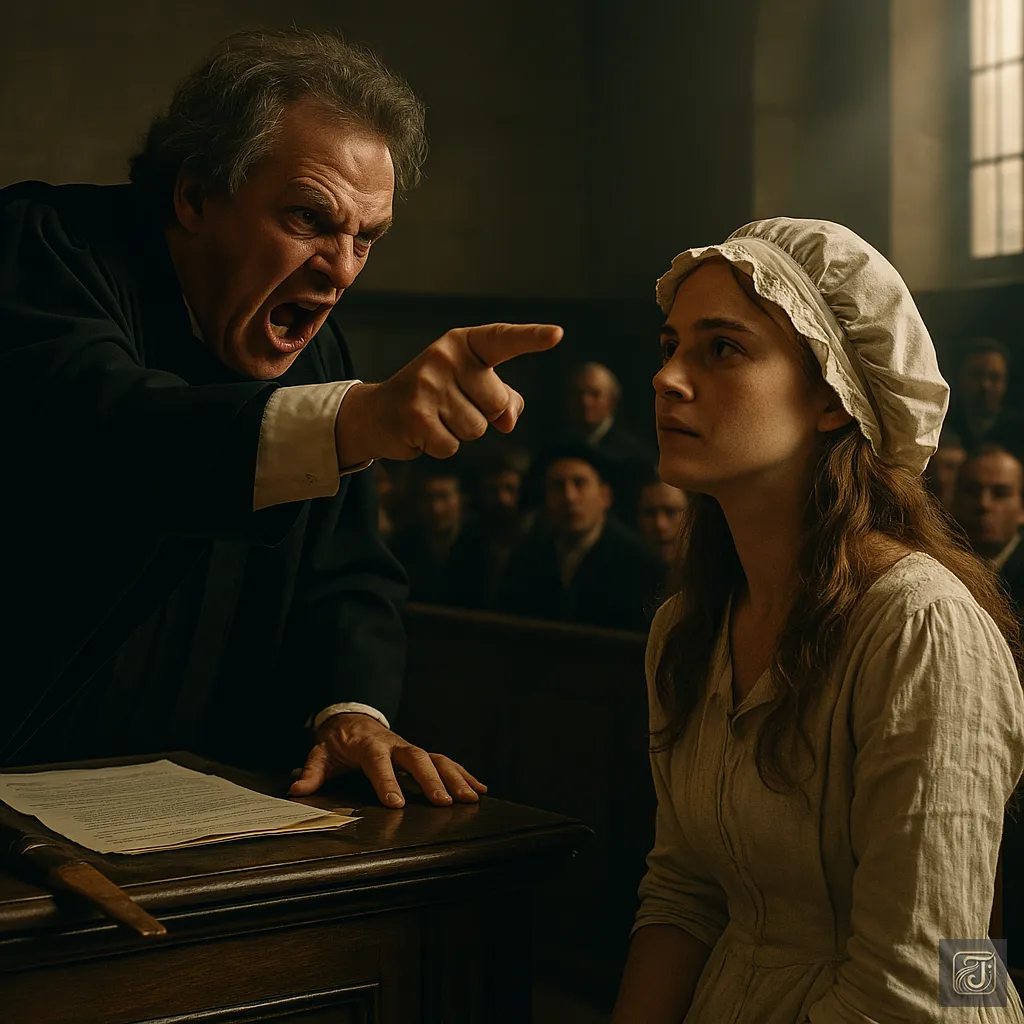
Prosecutor:
“For France?”
“Ridiculous!”
“You are a traitor, a counter-revolutionary who seeks to undermine the revolution!”
Charlotte Corday:
“No.”
“I love France.”
“That is exactly why it was necessary to remove Marat.”
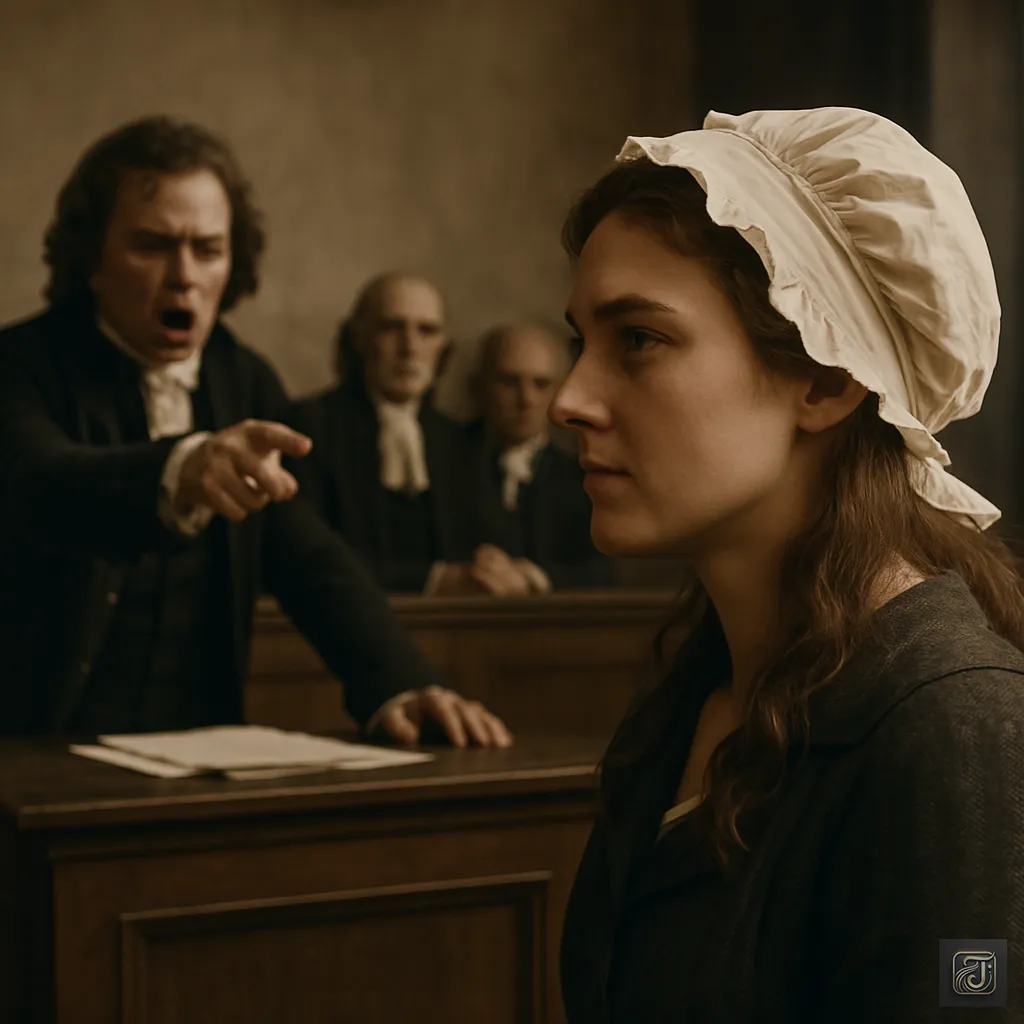
Judge:
“Then tell us, how does killing Jean-Paul Marat save France?”
Charlotte took a step forward, her gaze sweeping across the courtroom.
Among the spectators, some cursed her, while others watched in silence.
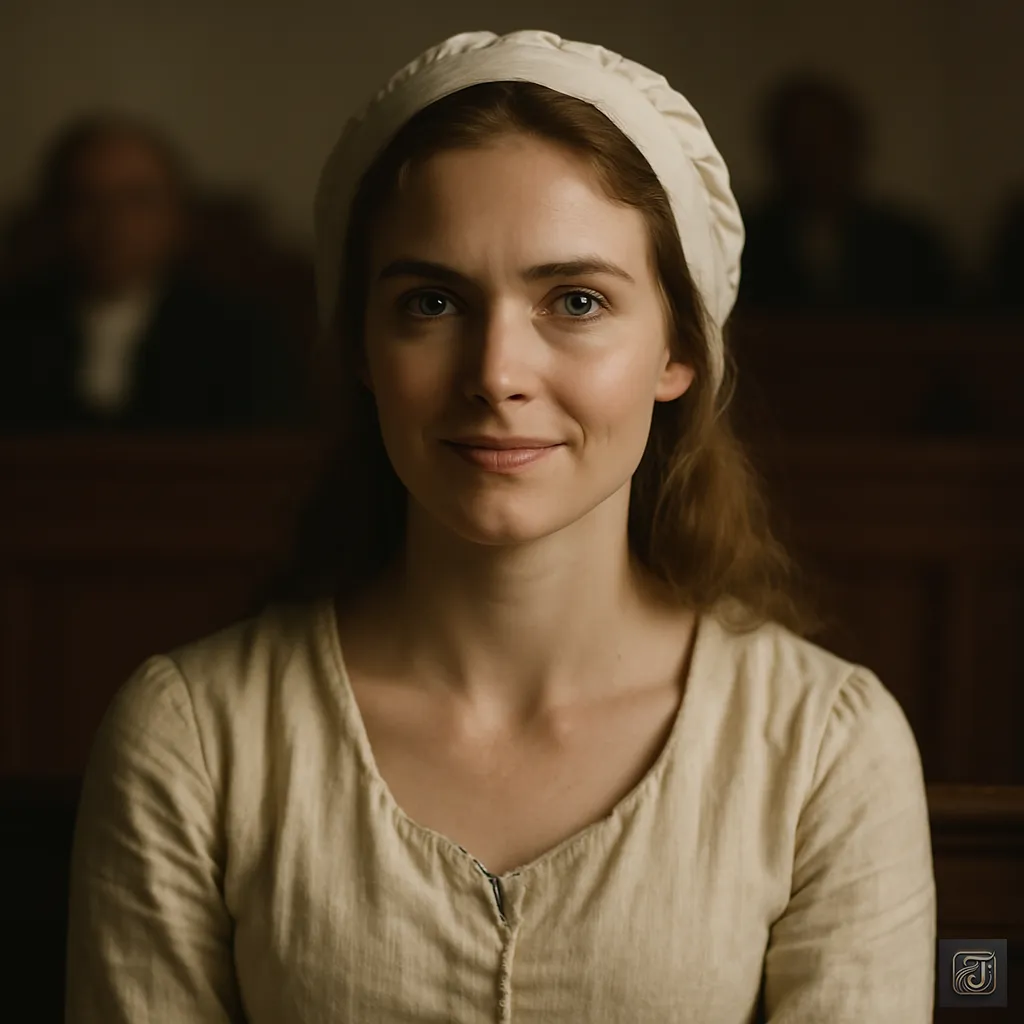
Charlotte Corday:
“He continued to thirst for the blood of the people.”
“He wrote his newspaper, inciting violence to increase the number of those sent to the guillotine.”
“If this continues, even more innocent lives will be claimed.”
“I killed Marat to stop it.”
“His hands are stained with the blood of the innocent.”
“As long as he lives, there will be no justice or peace in France.”
“To save France, someone had to kill him.”
The judge scowled, and a murmur rippled through the crowd in the gallery.
However, the prosecutor simply laughed derisively.
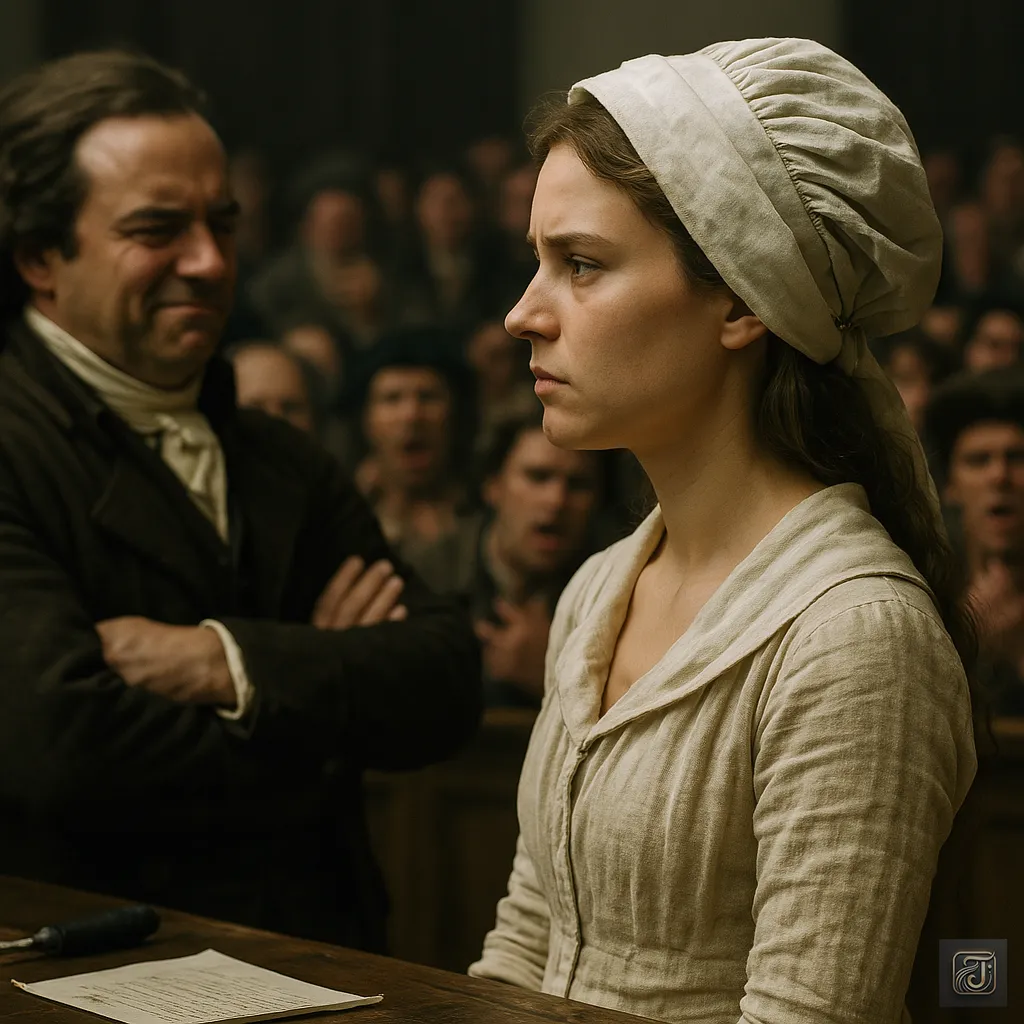
Prosecutor:
“So, you believe you’ve saved France?”
Charlotte Corday:
“No, unfortunately not.”
“But I have taken the first step toward saving France.”
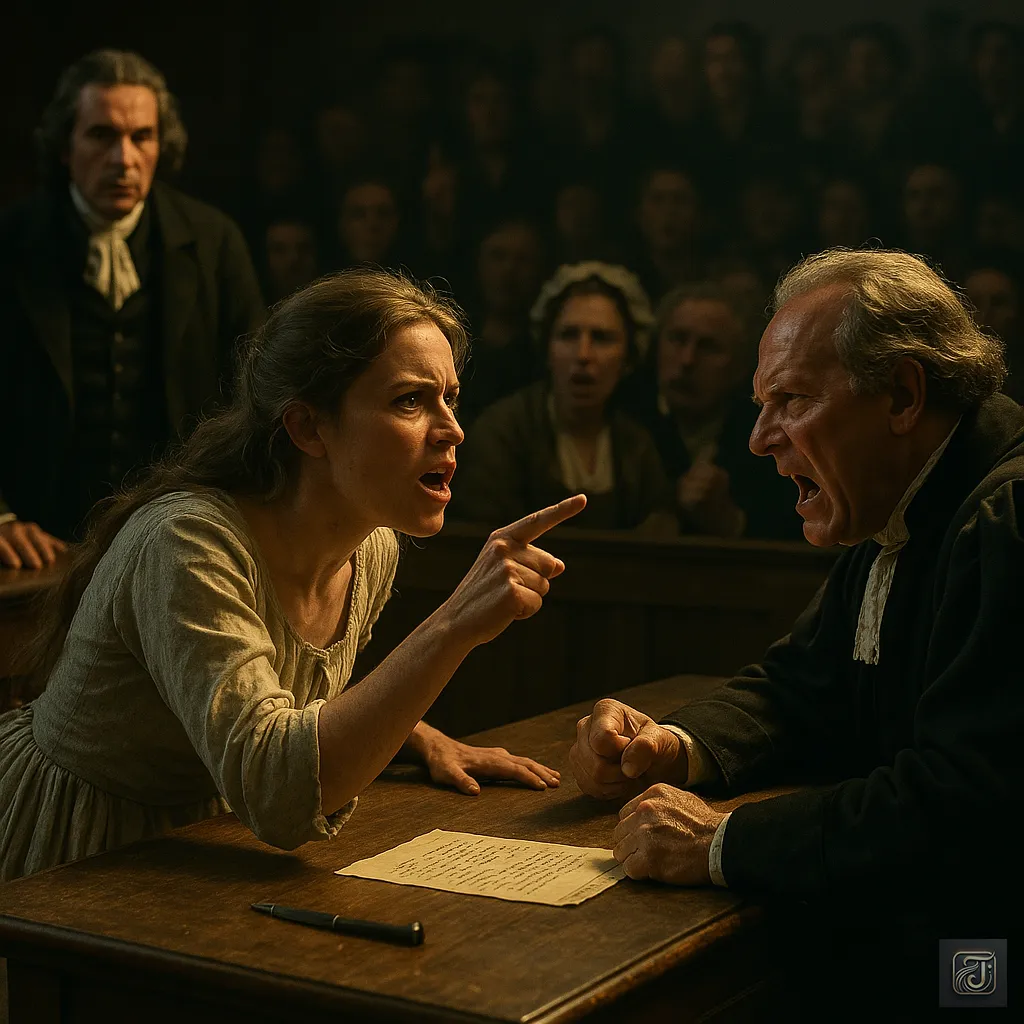
Judge:
“Ridiculous!”
“What you did is mere murder, an act of treason against the revolution!”
“It can never be forgiven!”
Charlotte Corday:
“Murder? Treason? What I did is unforgivable?”
“Then what about the countless executions carried out by the Jacobins?”
“My murder is unforgivable, but the slaughter of innocent people by the Jacobins is allowed?”
For a moment, a heavy silence hung in the air.
Charlotte continued.
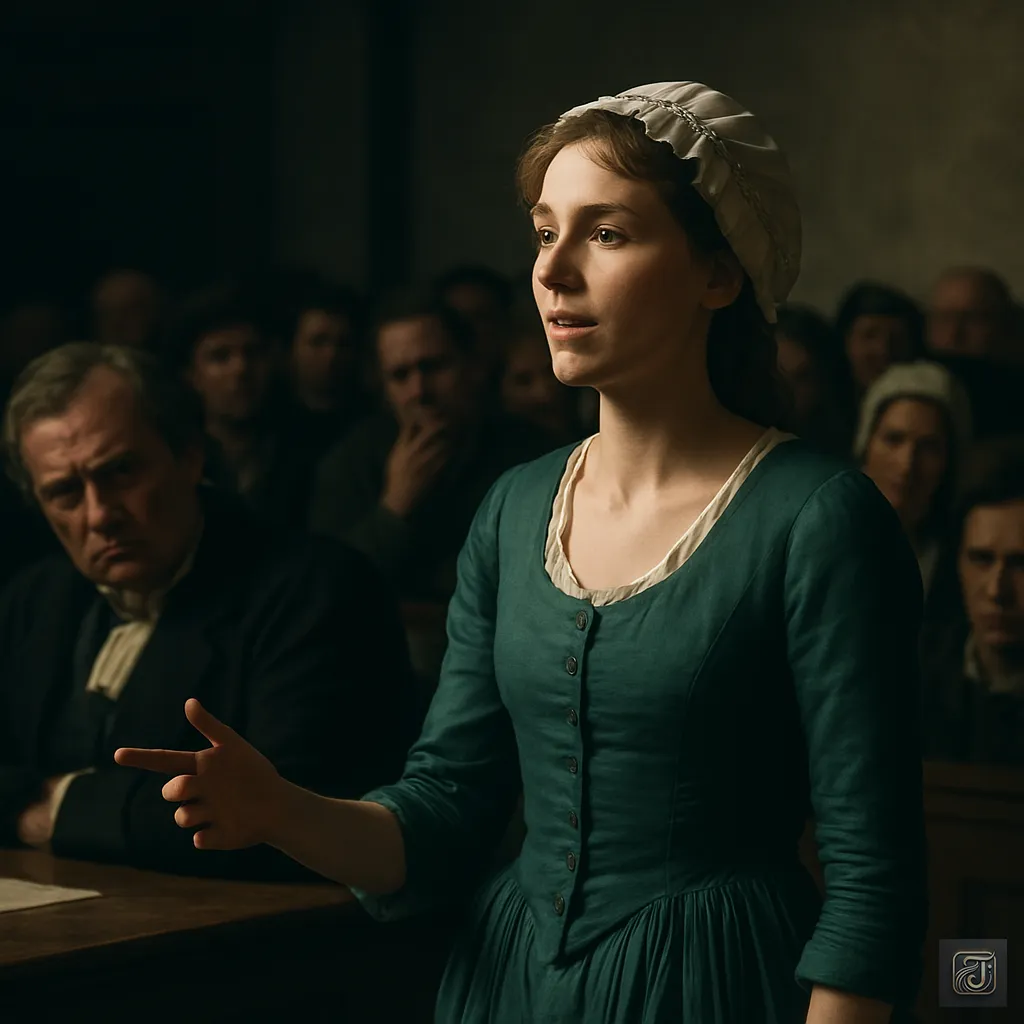
Charlotte Corday:
“The queen, the Girondins, countless citizens…”
“You killed them all in the name of the revolution, didn’t you?”
“I killed Marat.”
“That, too, was for the revolution.”
“What’s the difference?”
A low murmur swept through the gallery for a moment.
The judge scowled.
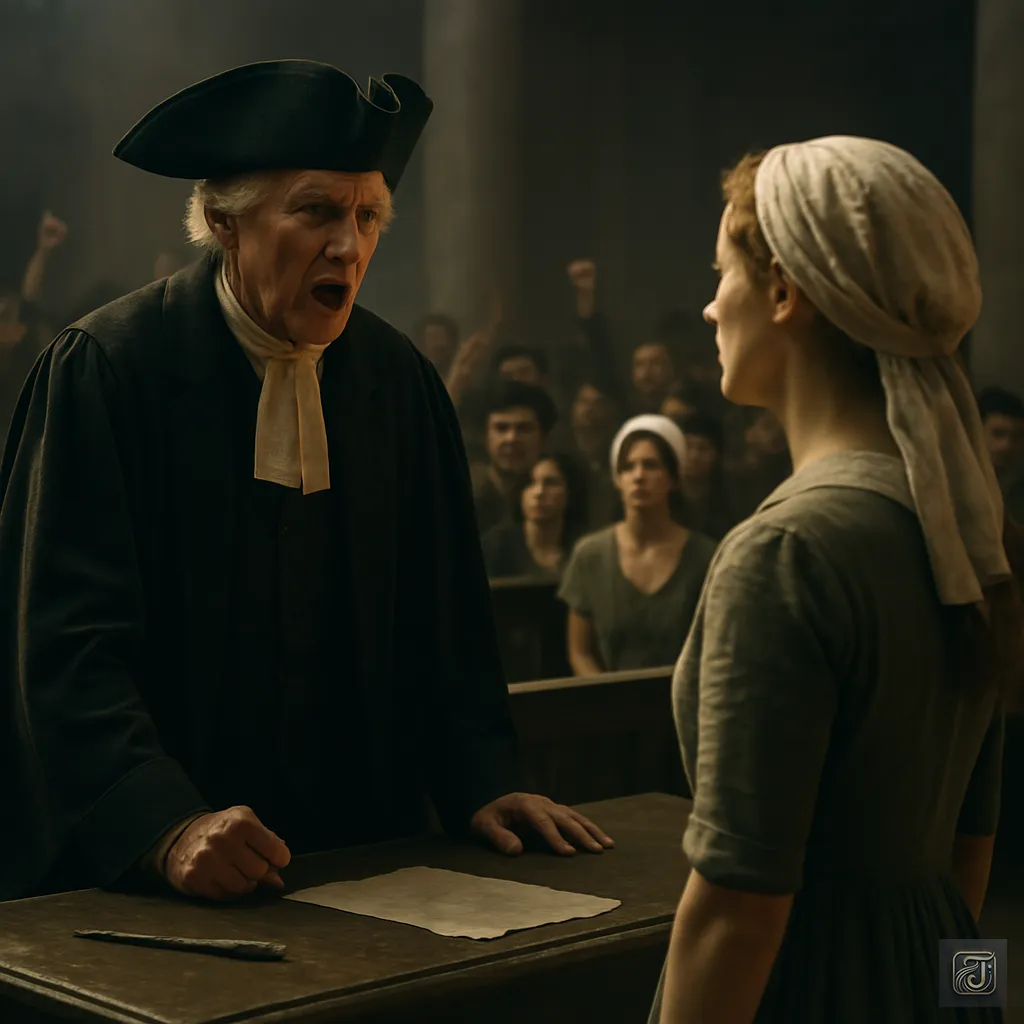
Judge:
“Do you not regret what you’ve done?”
Charlotte smiled gently.
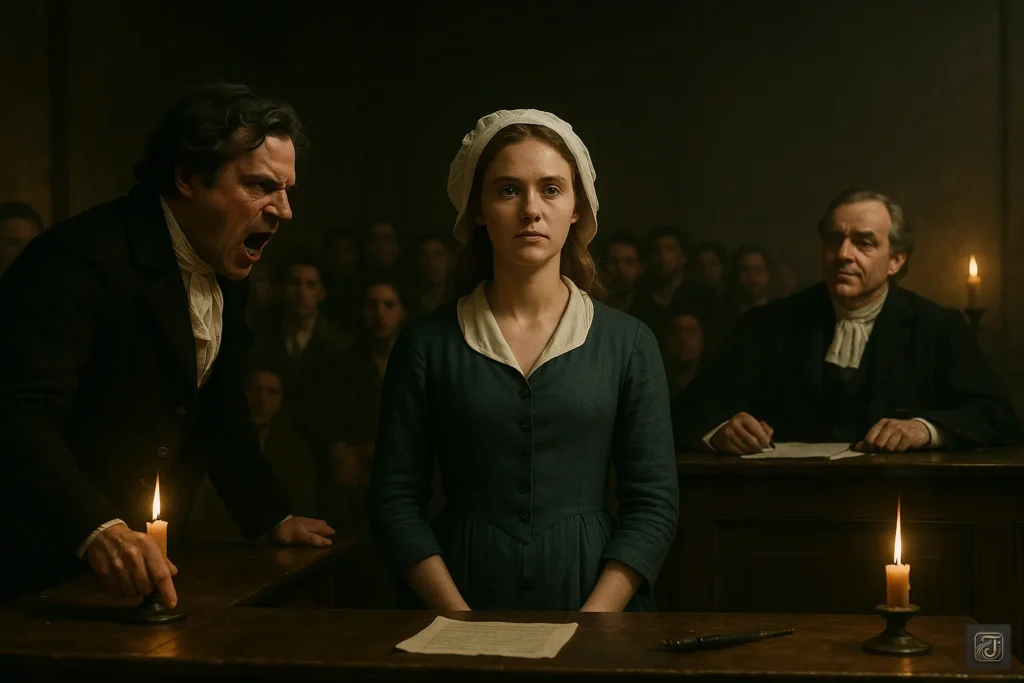
Charlotte Corday:
“I do not regret it.”
“Killing one Marat is more beneficial for France than killing a thousand Jacobins.”
For a brief moment, the room was filled with silence.
In an era where countless lives had been taken under the banner of revolution, her words rang out like a truth.
But the Revolutionary Tribunal showed no mercy.
The judge’s expression quickly twisted in anger, and he slammed his fist on the desk.

Judge:
“Silence!”
“You are the one who is being judged!”
Charlotte calmly smiled and replied with unwavering composure.
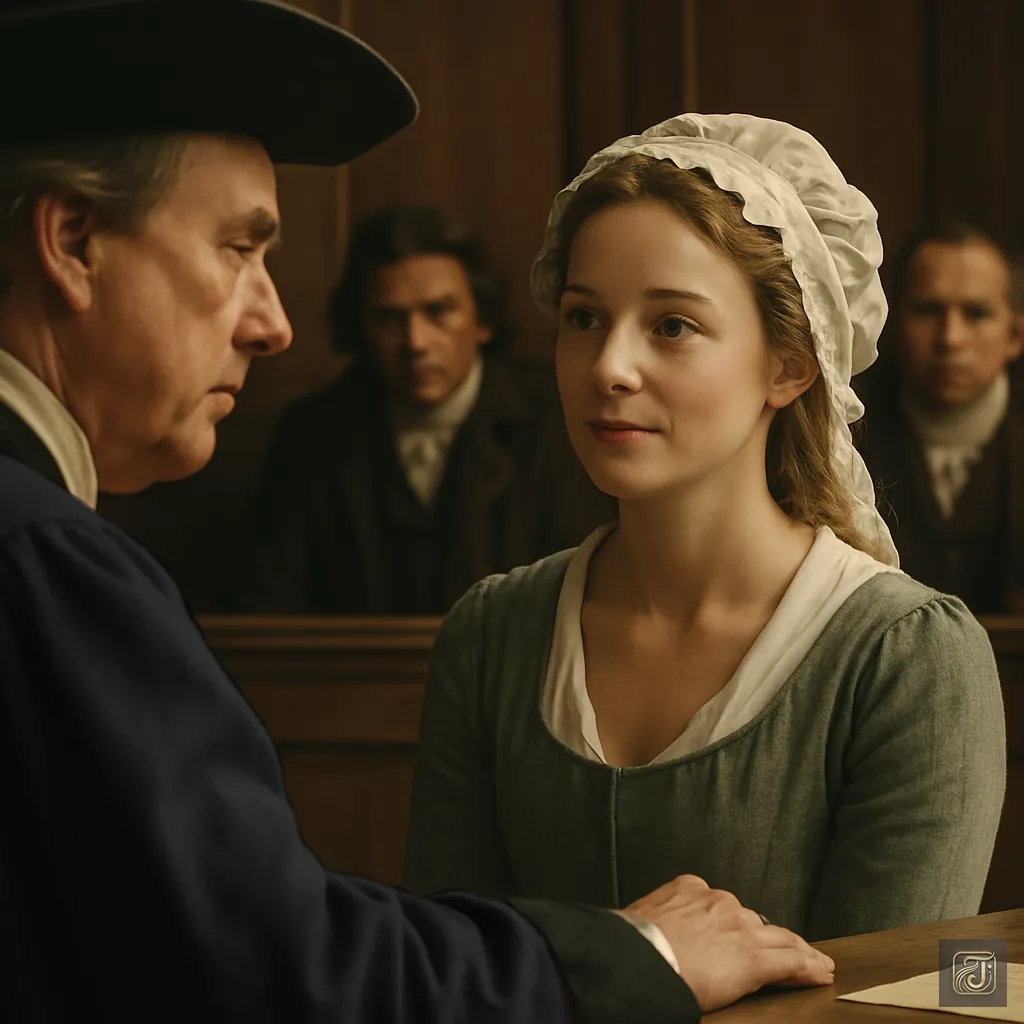
Charlotte Corday:
“Yes, my fate is already decided.”
“Those who have executed innocent people will continue to live without judgment, while I alone will be judged.”
“It’s truly unjust.”
“But I don’t mind.”
“If it means France will be saved.”
The judge let out a heavy sigh and turned his gaze toward the jury.
Chapter 13: The Final Sentence

July 16, 1793, Paris Revolutionary Tribunal—
It was the day of Charlotte Corday’s final judgment.
In an era when the madness of revolution had reached its peak, and justice had lost its way,
this day would become one where ideals and resolve, fear and pride, death and history intertwined.
The verdict had already been decided.

Judge:
“The verdict is as follows.”
“Charlotte Corday, you are sentenced to death by guillotine.”
A murmur spread through the courtroom.
The Jacobin supporters erupted in cheers, while the opposition remained silent.
But Charlotte did not flinch. She stared directly at the judge, unwavering.

Charlotte Corday:
“I accept it gladly. Even if I die, France will live on.”
At her words, the judge furrowed his brow for a moment.
Normally, those sentenced to death would tremble with fear, despairing and begging for their lives.
But this woman was different.
Her blue eyes locked steadily onto the judge, as if she took pride in her own death.
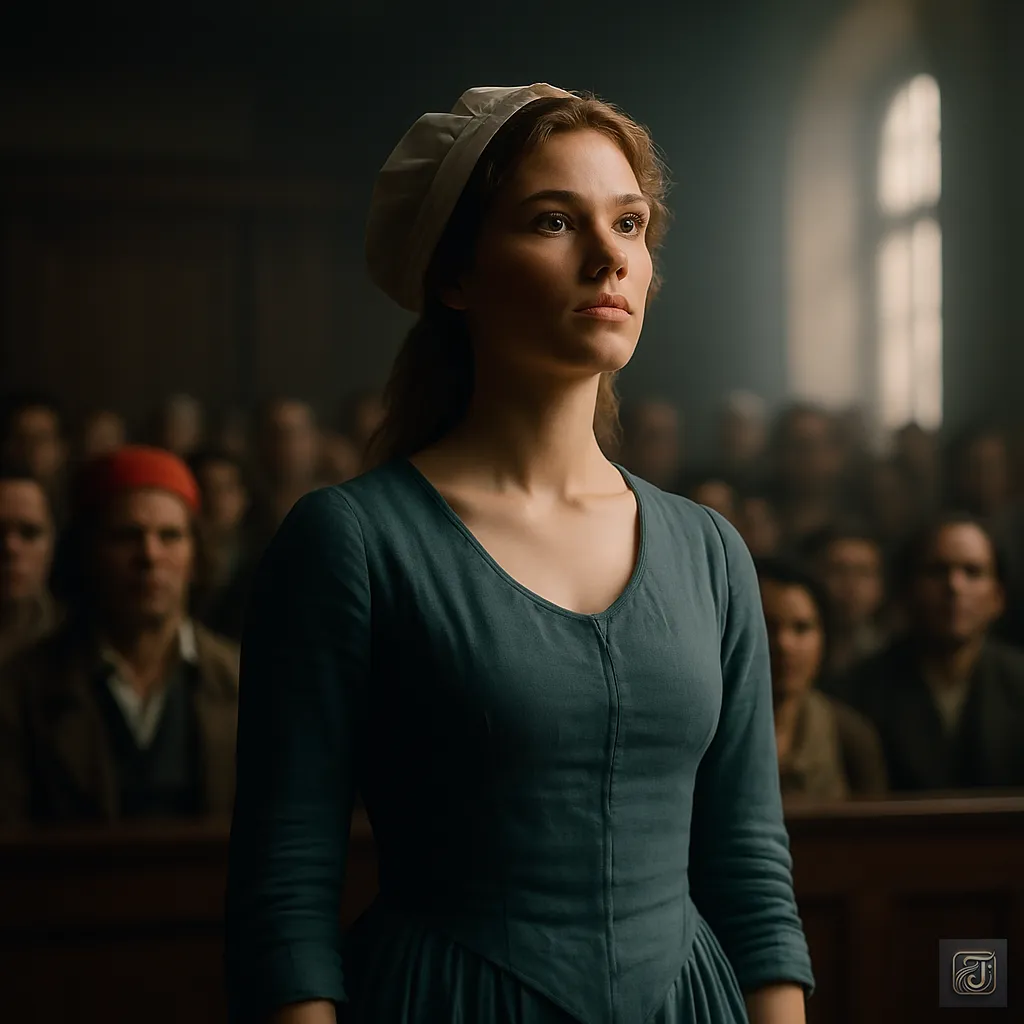
Charlotte Corday:
“France is drowning under the tyranny of the Jacobins.”
“Marat was the symbol of that.”
“I killed him.”
“History will prove how valuable it is to rid the world of a single tyrant.”
The judge coldly responded.
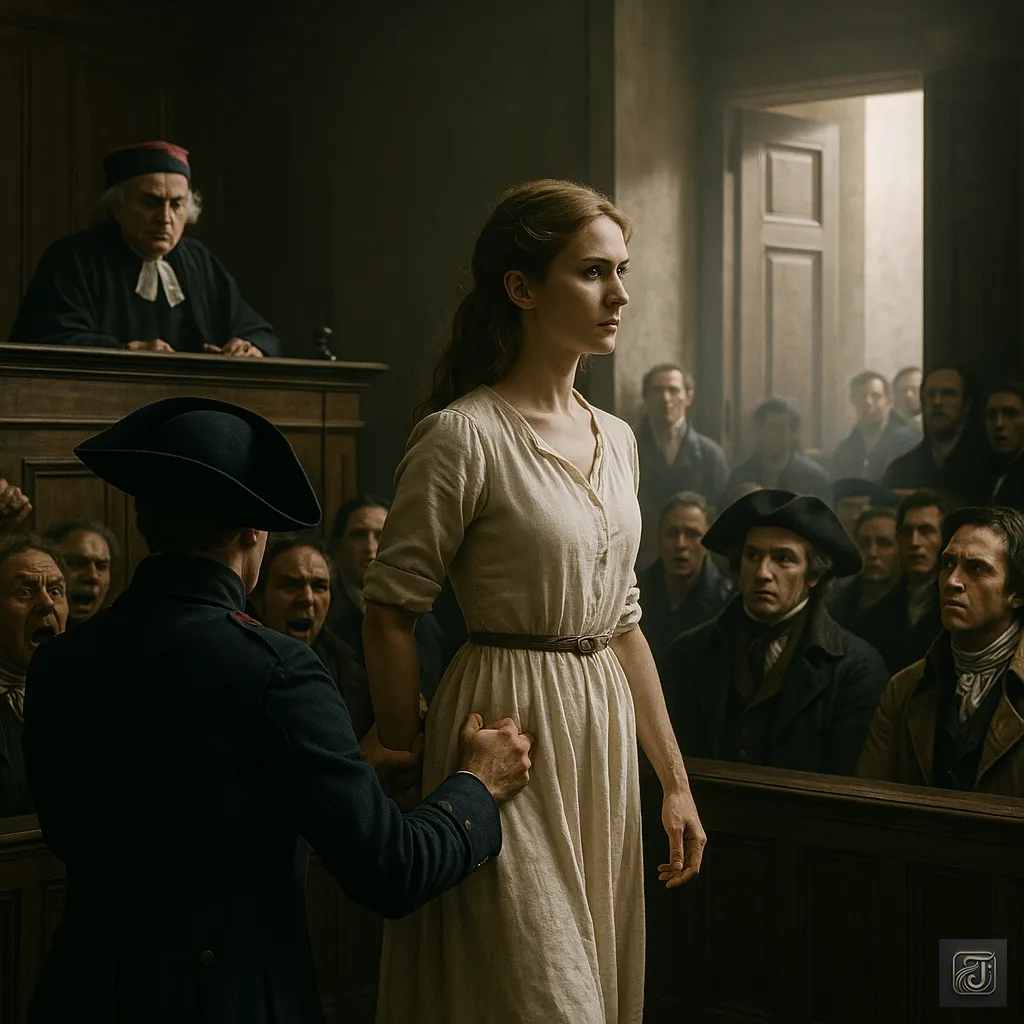
Judge:
“You will never know how history will judge you.”
“Your life ends here.”
The guards seized her arm and dragged her toward the courtroom door.
As Charlotte walked without resistance, she glanced around at the people in the gallery.
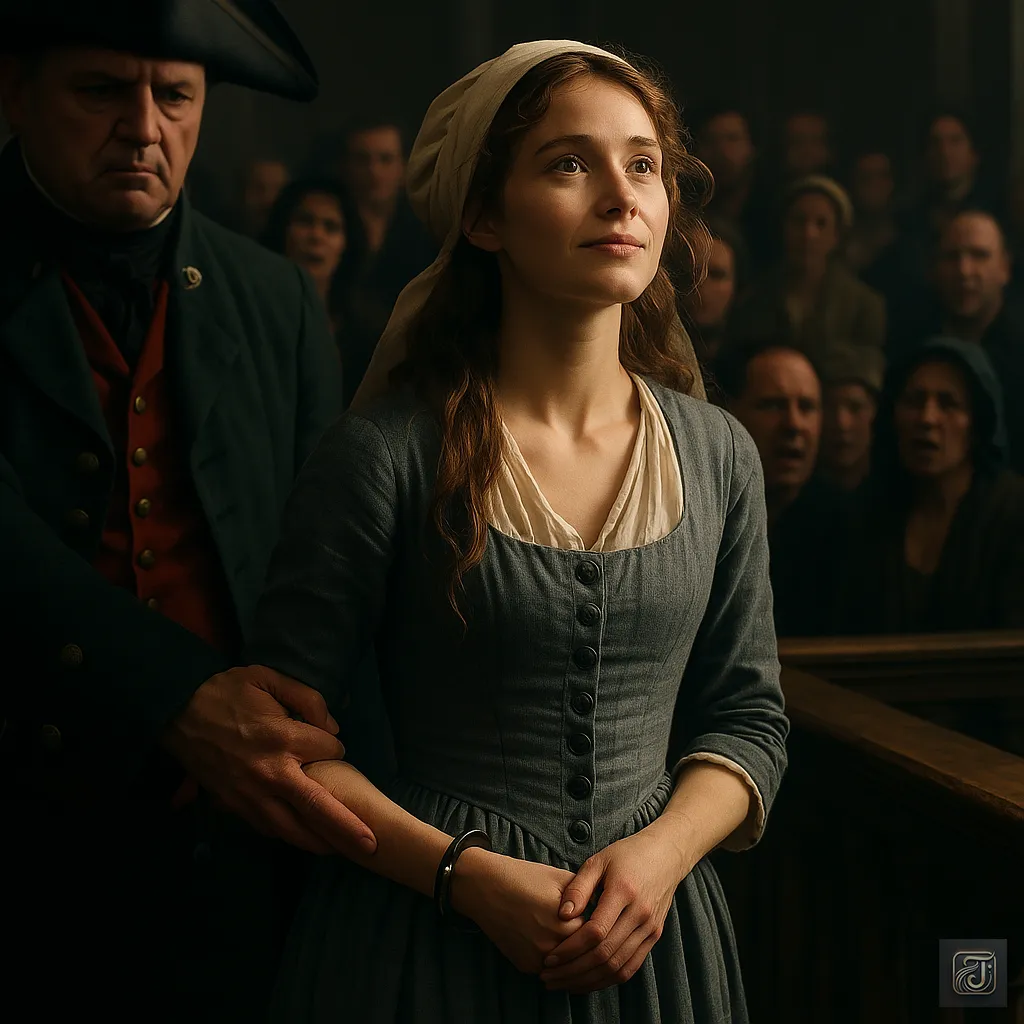
Charlotte Corday:
“Will the day ever come when true freedom arrives in this country?”
No one could answer that question.
Outside the courtroom, the clamor of Paris echoed.
Charlotte Corday’s fate had been sealed.
The next day, her head would be sent to meet the blade of the revolution.
Chapter 14: The Final Smile
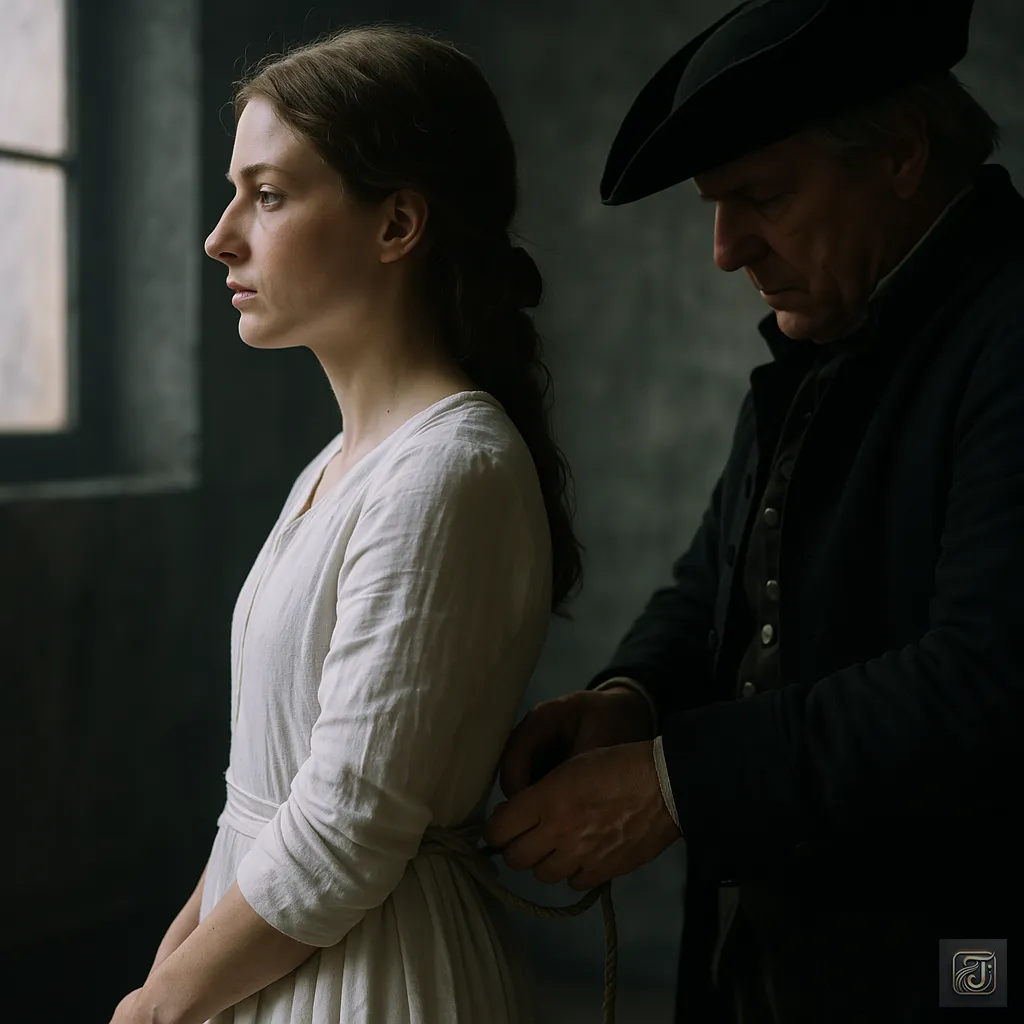
July 17, 1793, Paris.
On the day of the execution, the executioner, Charles-Henri Sanson, moved to bind Charlotte’s hands behind her back.
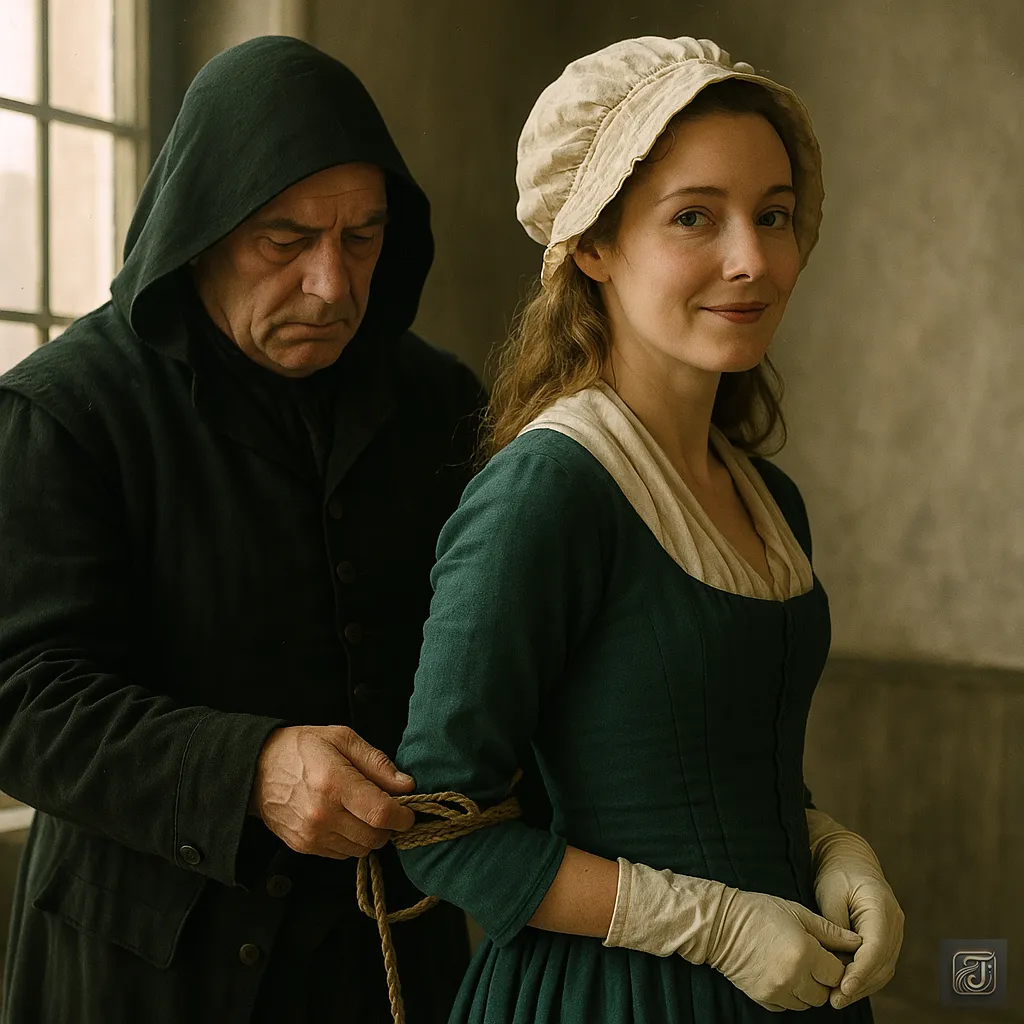
Charlotte Corday:
“Even after I killed Marat, they bound my hands so roughly that I was left with cuts.”
“May I wear gloves this time, to avoid that?”
Sanson:
“Don’t worry, I can bind you without causing any pain.”
Relieved by his words, she smiled quietly and allowed him to tie the ropes.
As they traveled to the execution site in the cart, Sanson later recounted in his memoirs:
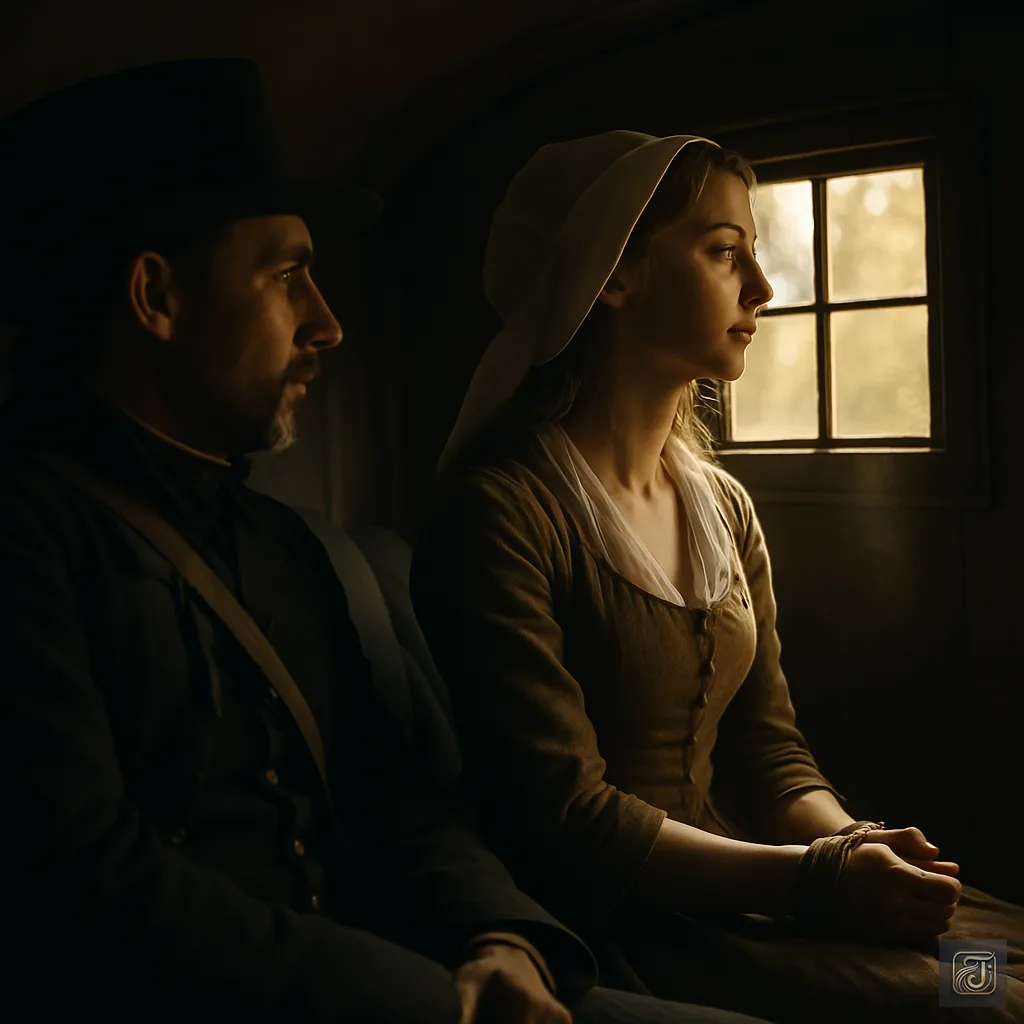
Sanson:
“The more I looked at her, the more I was drawn to her.”
“It was not just because she was beautiful—though she certainly was—but because I couldn’t believe how, until the very end, she could remain so resolutely composed and charming.”
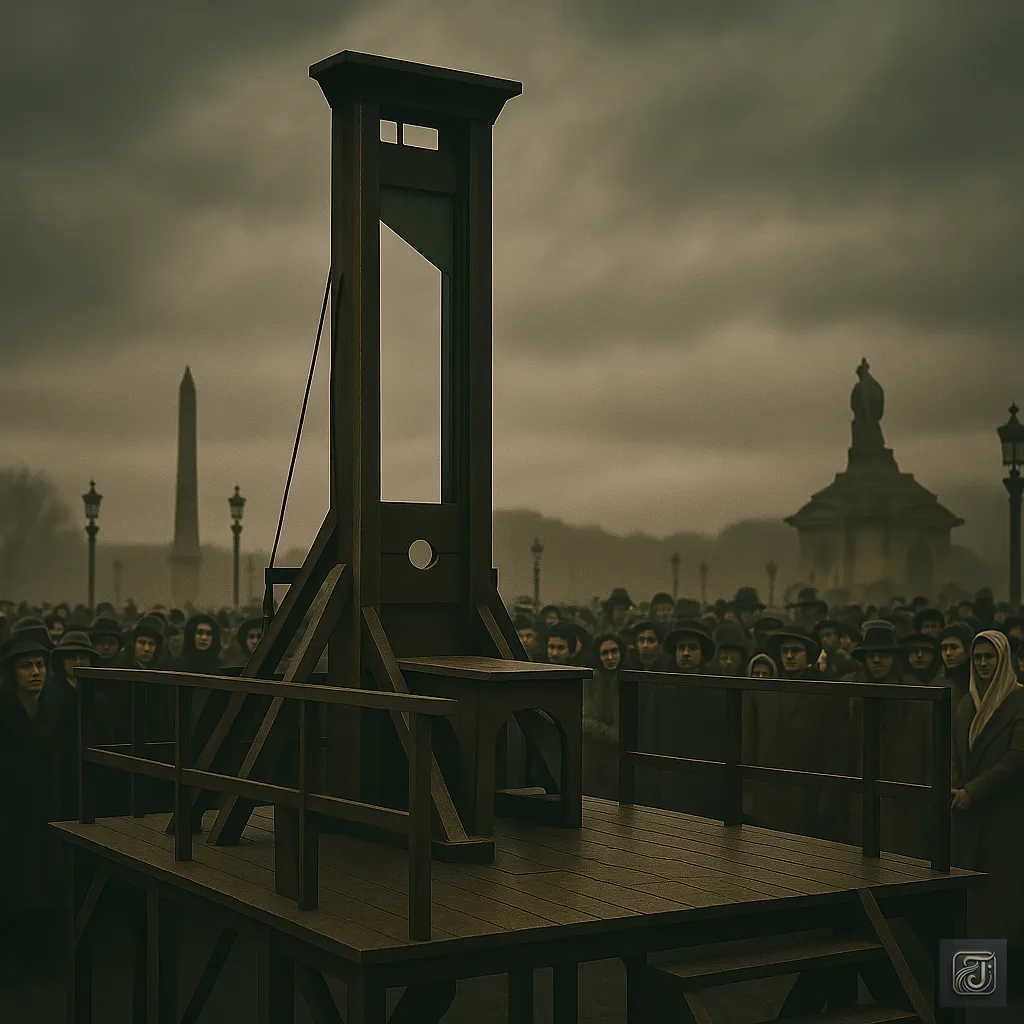
The sky had been overcast since morning on the day of the execution.
By the time they reached the Place de la Concorde, a crowd had already gathered, eagerly awaiting the moment of the execution.
Like hungry beasts, they were there to witness the guillotine claim another victim.
As the doors of the cart opened, Charlotte Corday appeared.

She wore a white dress, walking quietly toward her fate.
Her appearance was like that of a bride walking toward death.
There was no fear or regret in her expression.
Only certainty lingered in her eyes.
Amidst the murmurs of the crowd, Charlotte stood before the guillotine.

Executioner:
“State your name.”
Charlotte:
“Charlotte Corday.”
Executioner:
“Do you have any last words?”
She smiled and spoke clearly.

Charlotte Corday:
“I have saved France.”
“By killing one, I saved the lives of a hundred thousand.”
The executioner gave the signal, and she quietly positioned her neck on the scaffold.

Her neck was placed in the collar, and the blade was raised high above her head.
A breeze swept through, and the crowd held its breath.
A moment of silence―
Following the pull of gravity, the steel blade descended mercilessly.
A sharp sound split the air of Paris, and the crowd in the square gasped.
A brief moment of stillness.
It marked the end of Charlotte Corday’s life, the life of a young woman.
And in that same instant, it symbolized the contradictions and sacrifices born of the revolution’s storm.

The executioner grabbed her severed head and held it high for the crowd to see.
In that moment, one of the executioners slapped Charlotte’s cheek.
Her face flushed red.
For a brief moment, the crowd fell silent.
It was as if her pride and conviction had offered one final act of resistance.
But soon, the cheers erupted, and the madness of the revolution once again seized control of the streets.
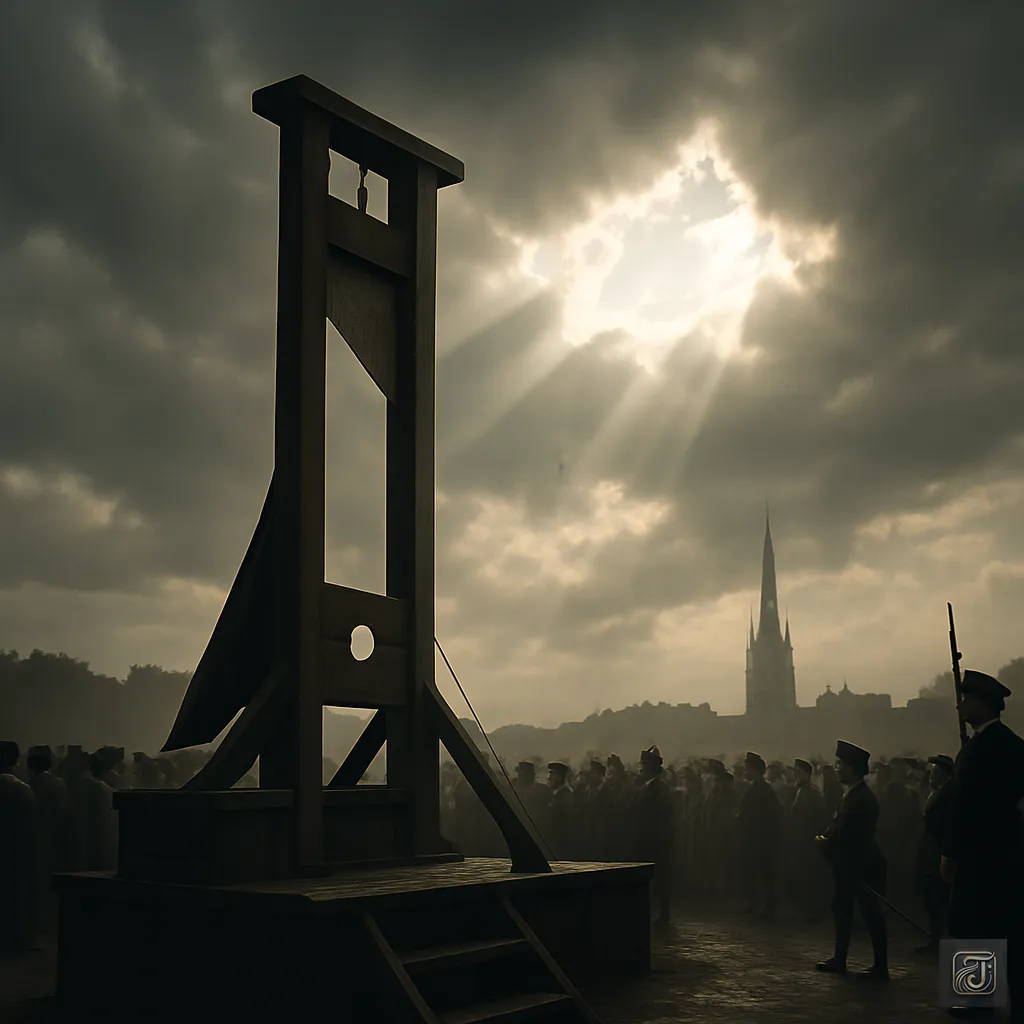
Charlotte Corday—
Her life came to an end.
But her conviction, unwavering and steadfast, never vanished.
It endured, even in the midst of the chaos of this tumultuous era.
Chapter 15: A Prayer for a Distant Friend
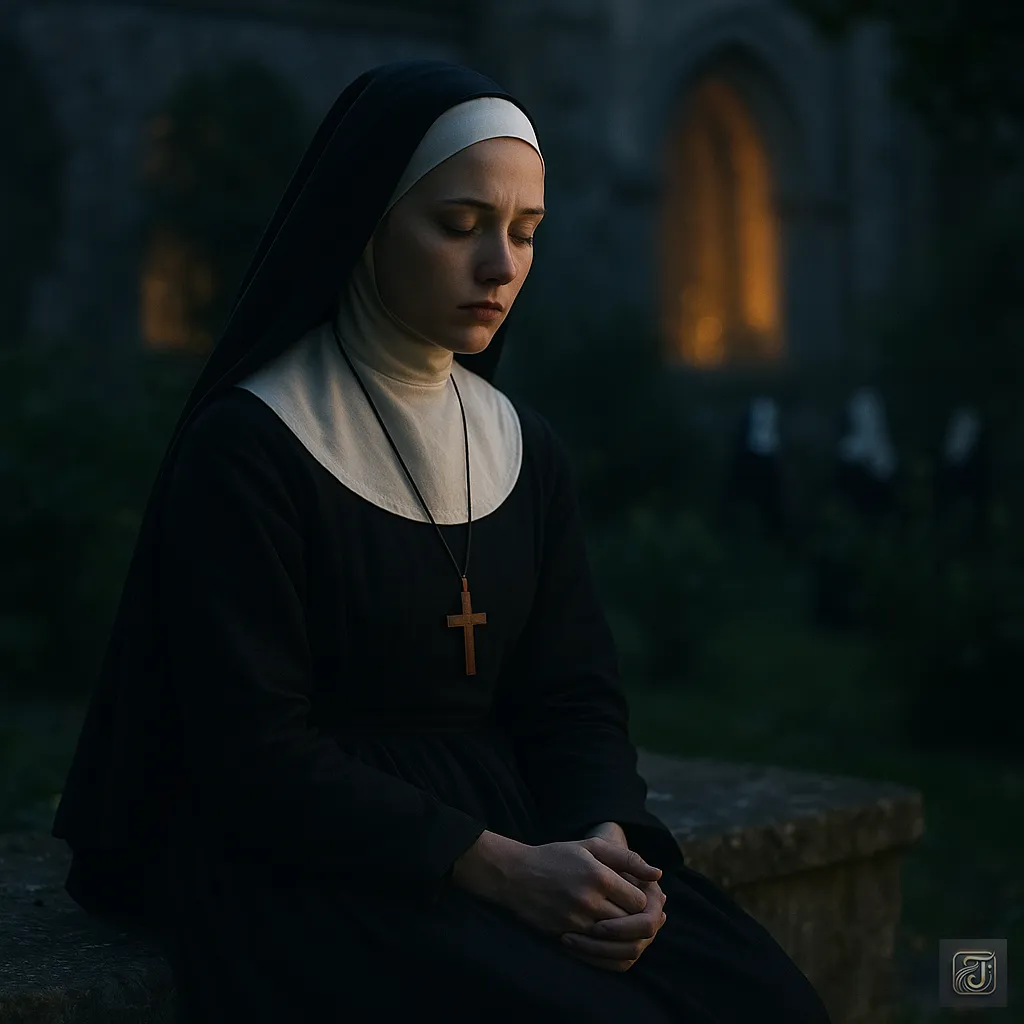
Late July 1793, the convent in Caen.
Marguerite sat quietly in a corner of the garden.
The evening breeze rustled the hem of her habit, and from afar, the faint voices of the nuns’ prayers could be heard.
But within her heart, a completely different voice echoed.
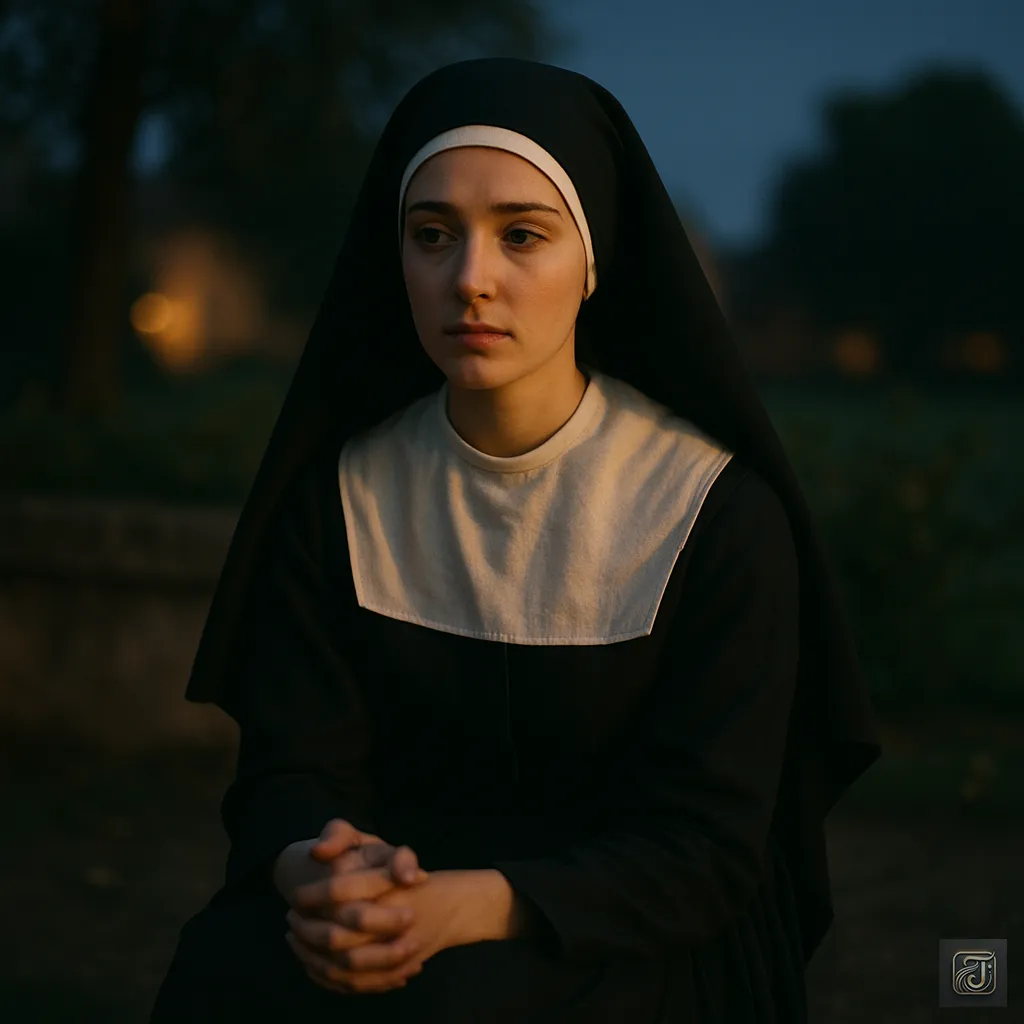
“Charlotte has been executed…”
She had received the news just a few days ago.
In the town square, the rumors were everywhere, and people spoke of Charlotte Corday’s final moments as if recounting the tale of a hero.
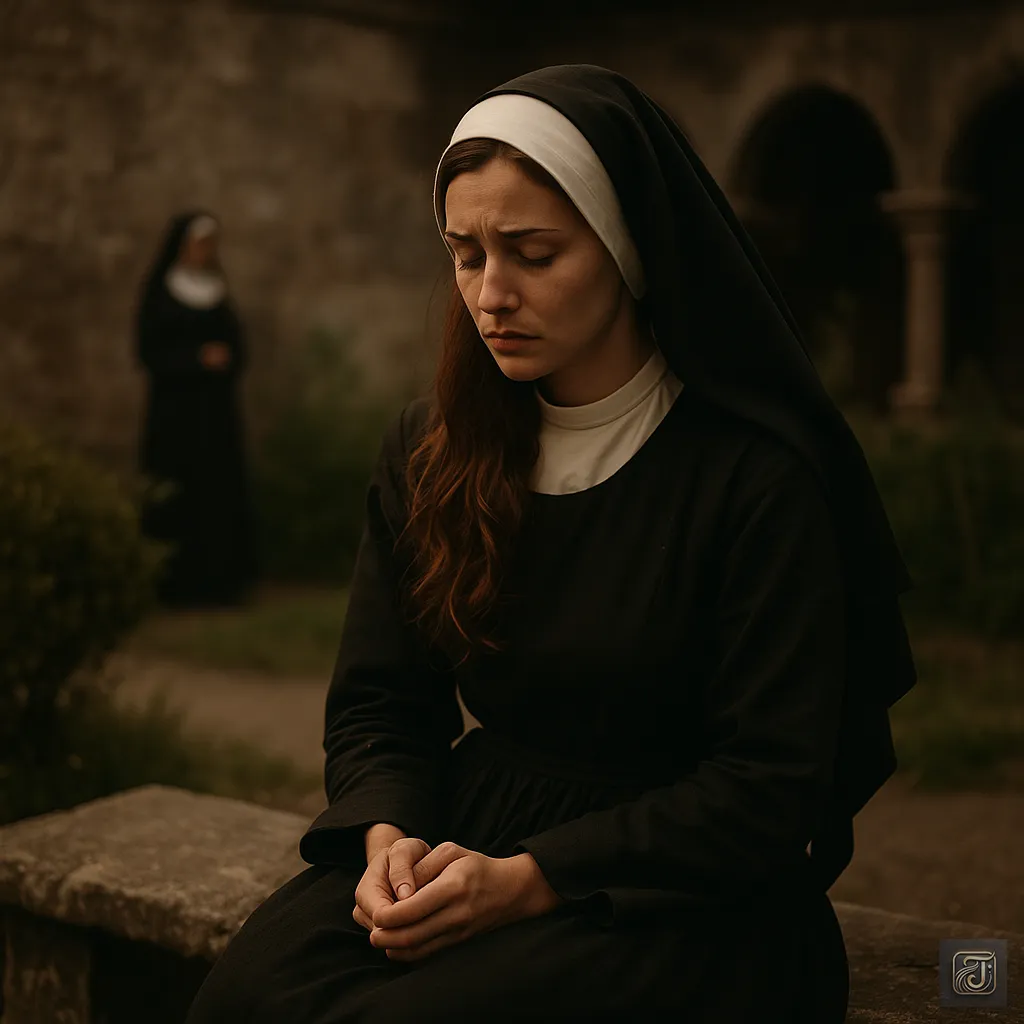
“They say that even under the blade of the guillotine, she smiled.”
“Her last words were reportedly, ‘I have saved France.’”
“I’ve heard she didn’t flinch, even when the executioner slapped her cheek.”
Each time Marguerite heard those words, her heart tightened.
She knew better than anyone how strong Charlotte had been.
Yet, even so, she continued to ask herself:
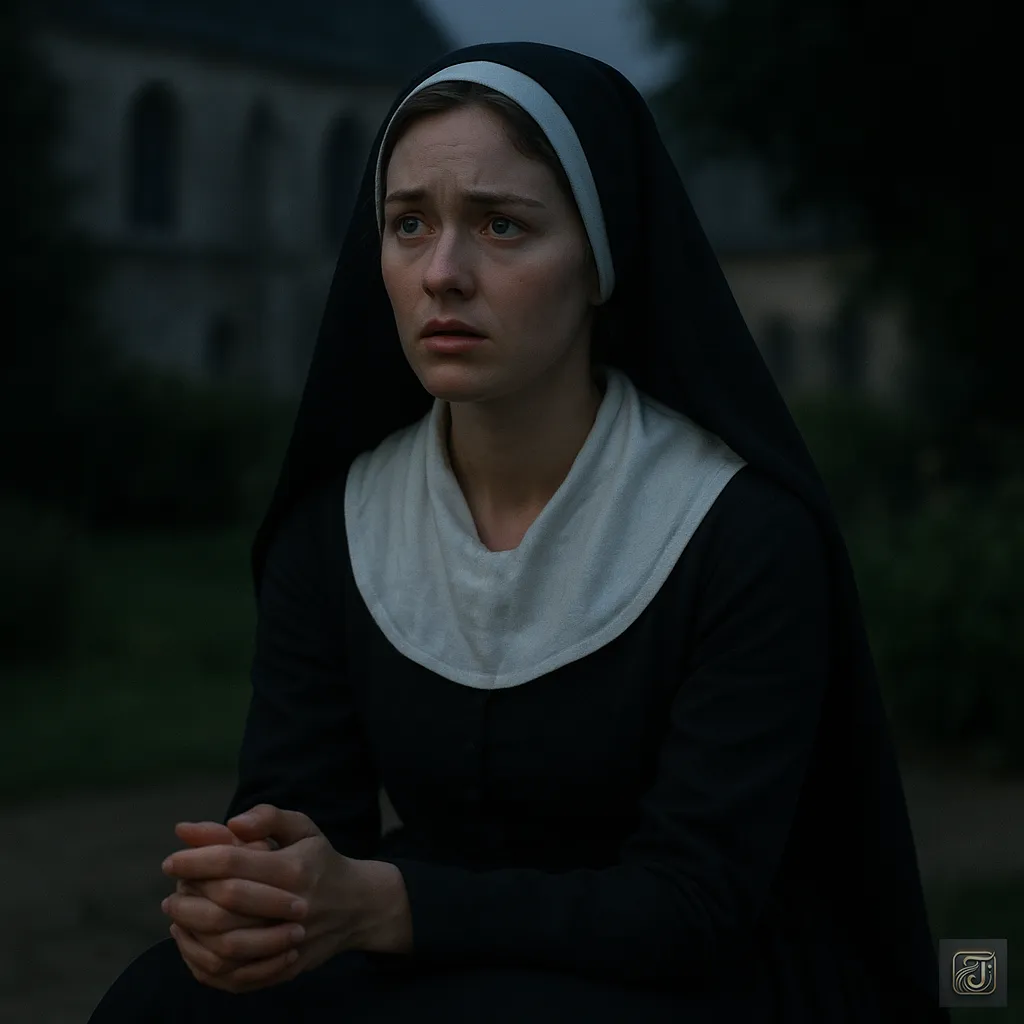
Marguerite:
“Why did you choose such an end?”
She recalled the days they had spent together at the convent.
Charlotte had always been reading.
She would hold Rousseau’s The Social Contract and passionately speak about “liberty” and “equality.”
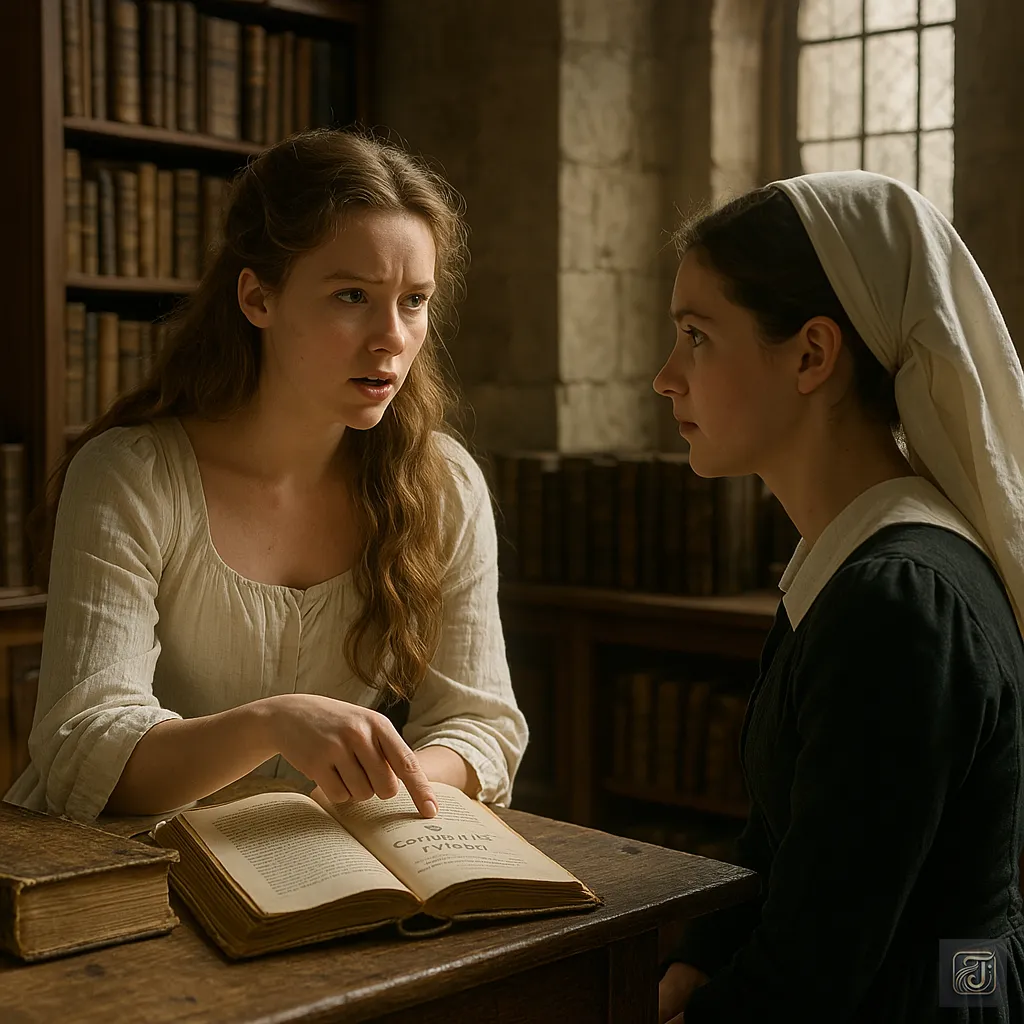
Charlotte Corday:
—— “Why must we, from birth, have our fate decided for us?”
Marguerite had always been puzzled by Charlotte’s words, yet she found herself drawn in by that passion.
But deep down, she had always known.

Marguerite:
“I could never be as strong as she was…”
Marguerite thought of the choice she had made—to continue her quiet life at the convent, while Charlotte had thrown herself into the whirlwind of revolution.
Since that day, their paths had diverged.
Yet, when she heard of Charlotte’s death, a sharp pain surged through her chest.
It was as though a part of herself had been lost.

Marguerite:
“Charlotte… were you right?”
Looking up at the night sky over Caen, Marguerite made the sign of the cross.
The future that Charlotte had believed in was still unseen.
But one thing was certain—she had remained steadfast in her convictions until the very end.

Marguerite:
“May she find peace and happiness in heaven…”
Her prayer melted into the quiet darkness of the night.
Chapter 16: What Was Left Behind
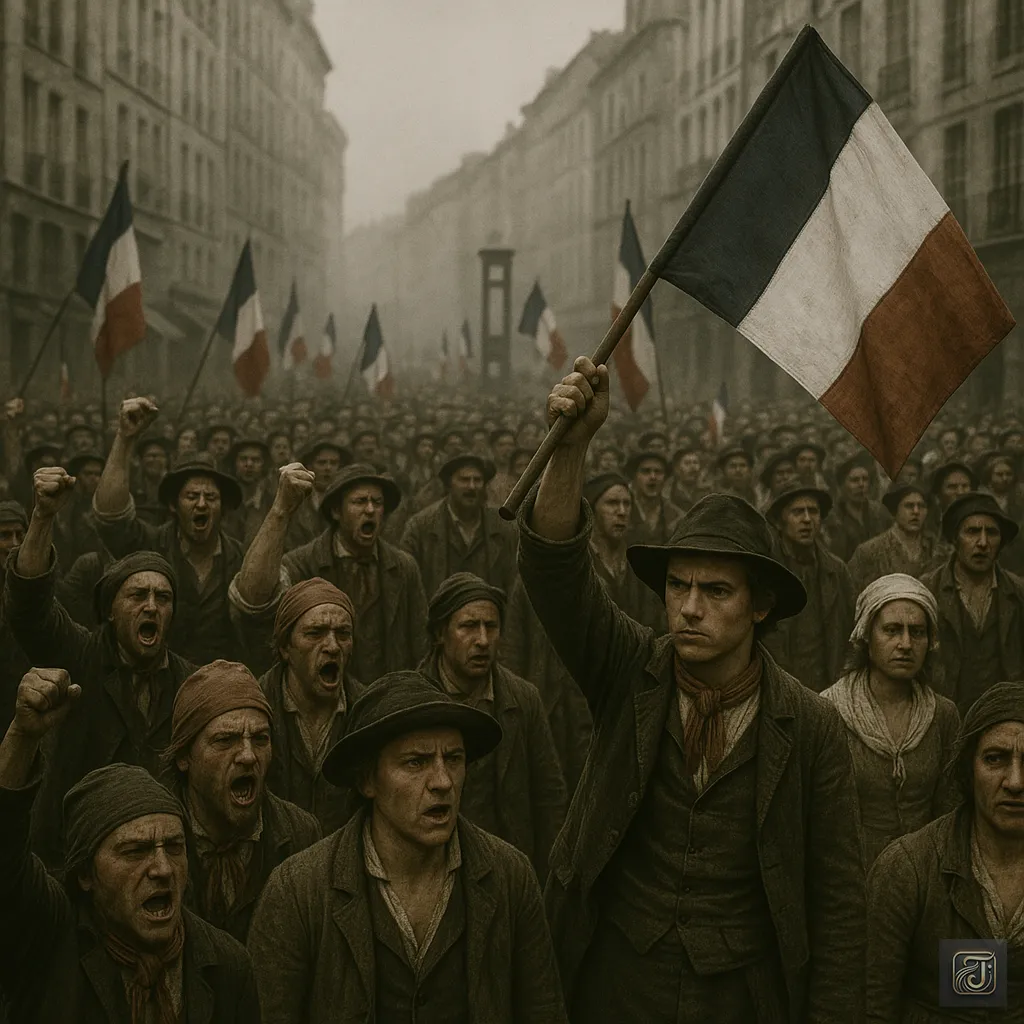
The day after Charlotte Corday fell to the guillotine, the streets of Paris remained consumed by the frenzy of revolution.
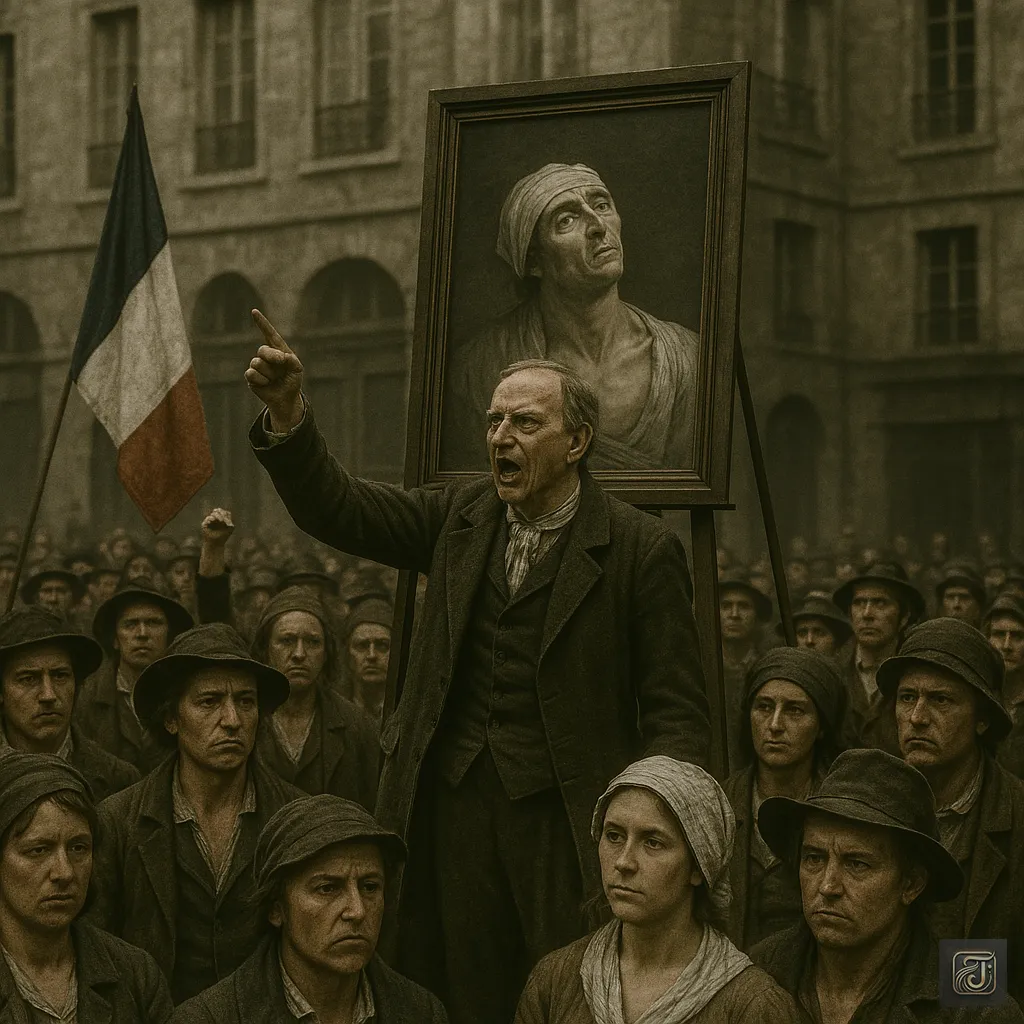
The Jacobins condemned her as nothing more than a counter-revolutionary criminal, while they exalted Jean-Paul Marat as a “martyr of the revolution.”
His portrait was displayed in the squares, and speeches praising his name were repeated endlessly.

However, at the same time, Charlotte’s assassination fueled the Jacobins’ rage, leading to further purges carried out in the name of the revolution.
The dawn of the Reign of Terror———
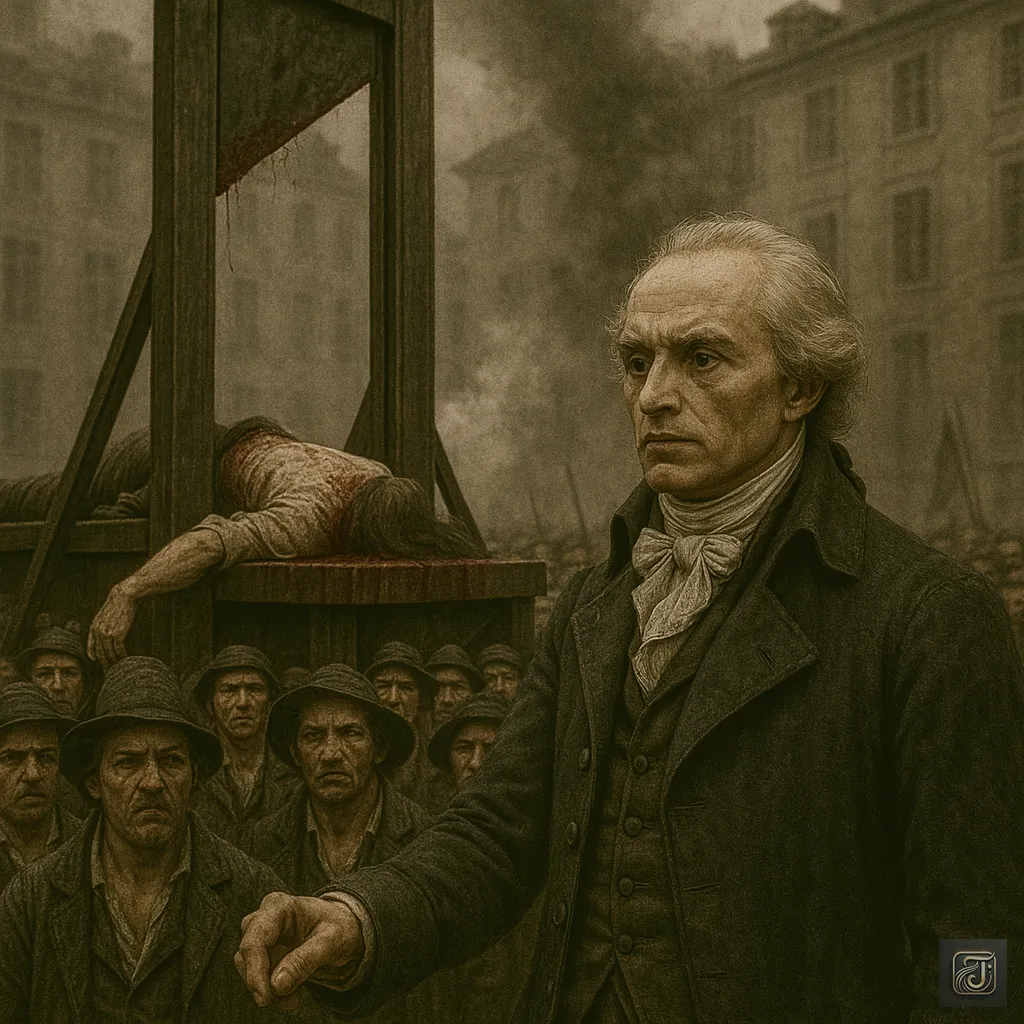
Marat’s death was not a warning for the Jacobins, but a justification for revenge.
They arrested anyone suspected of being counter-revolutionary and sharpened the guillotine’s blade even further.
Under Robespierre’s leadership, France sank deeper into a sea of blood.
However, not all people condemned Charlotte.

Among the Girondins and counter-revolutionaries, there were those who hailed her actions as a “heroic act against tyranny.”
What her dagger brought about was not just a single death, but a symbol of resistance against oppression.
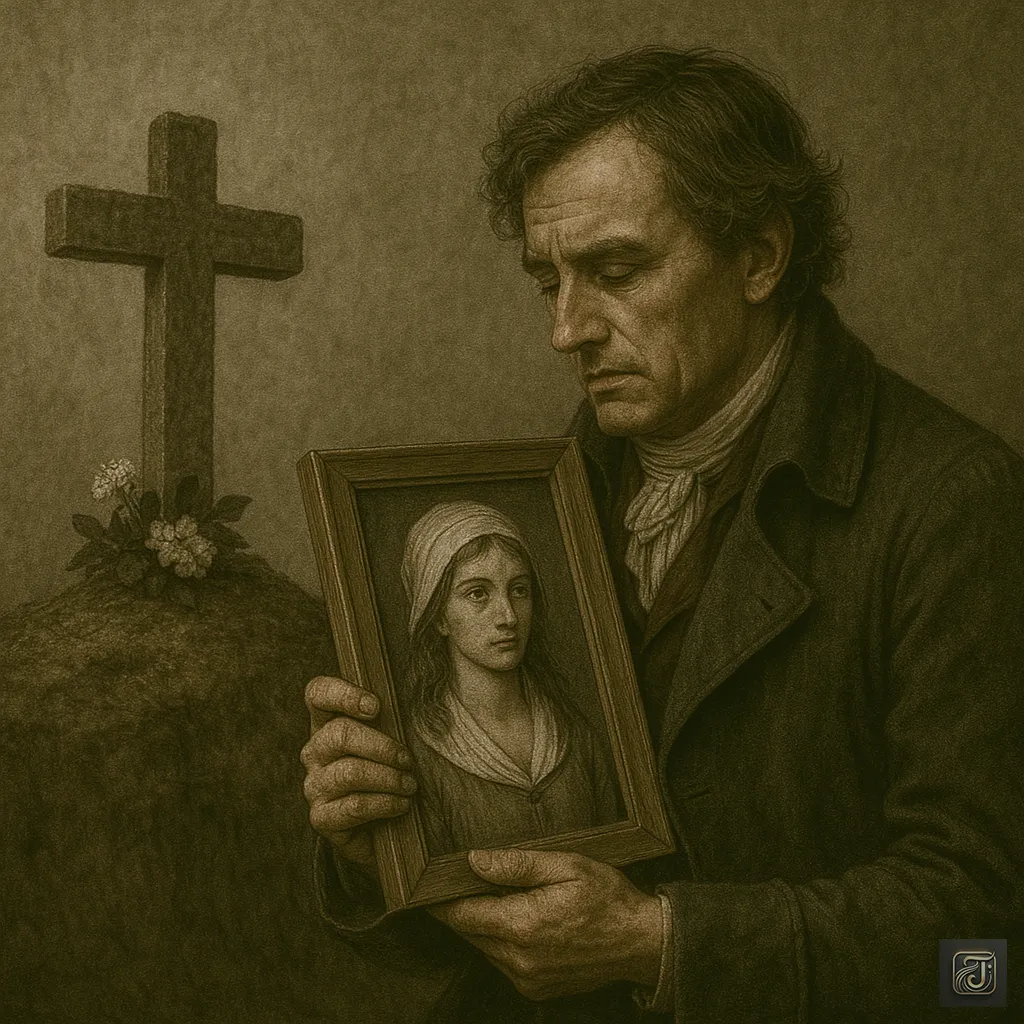
In the land of Normandy, there were those who quietly mourned her in secret.
As time passed, the French Revolution sank deeper into further chaos.
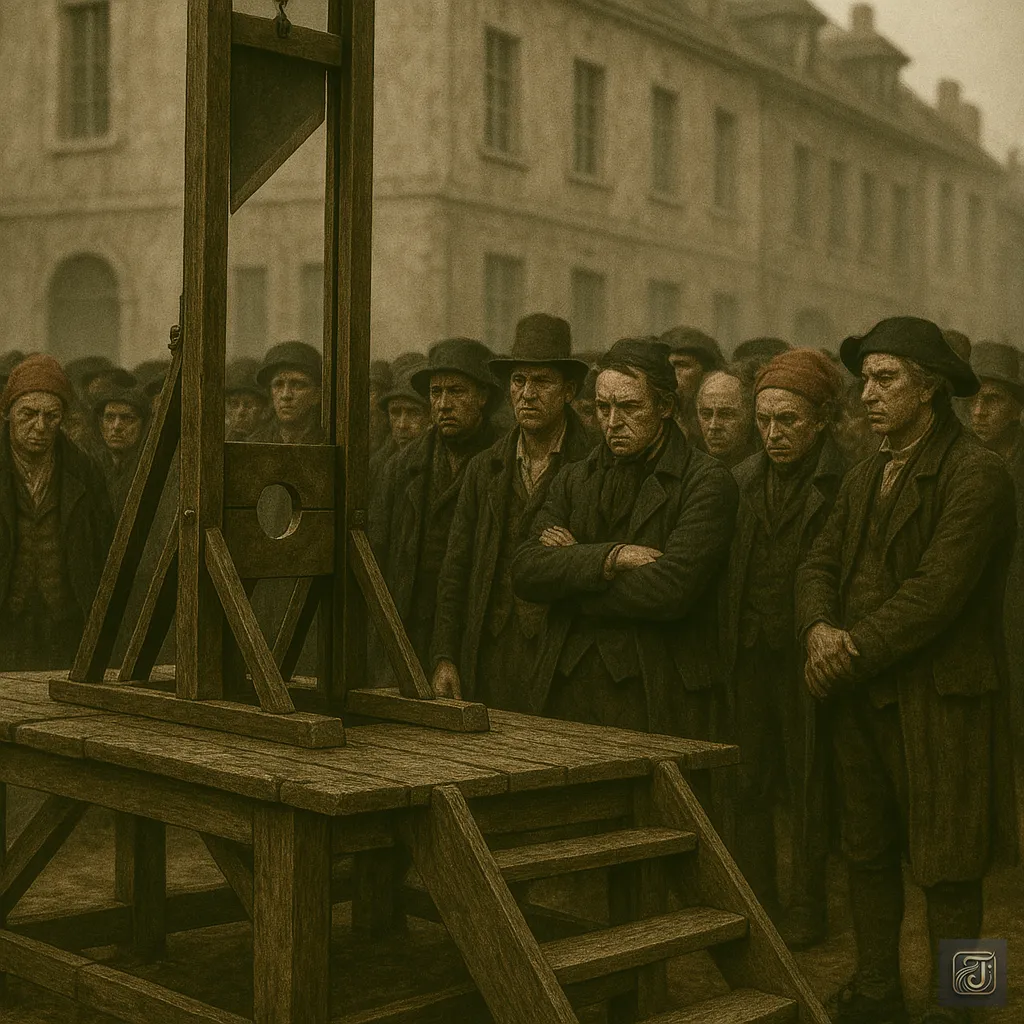
The Reign of Terror eventually consumed the Jacobins themselves, and it came to an end with the execution of Robespierre.
However, Charlotte Corday’s name was never forgotten.
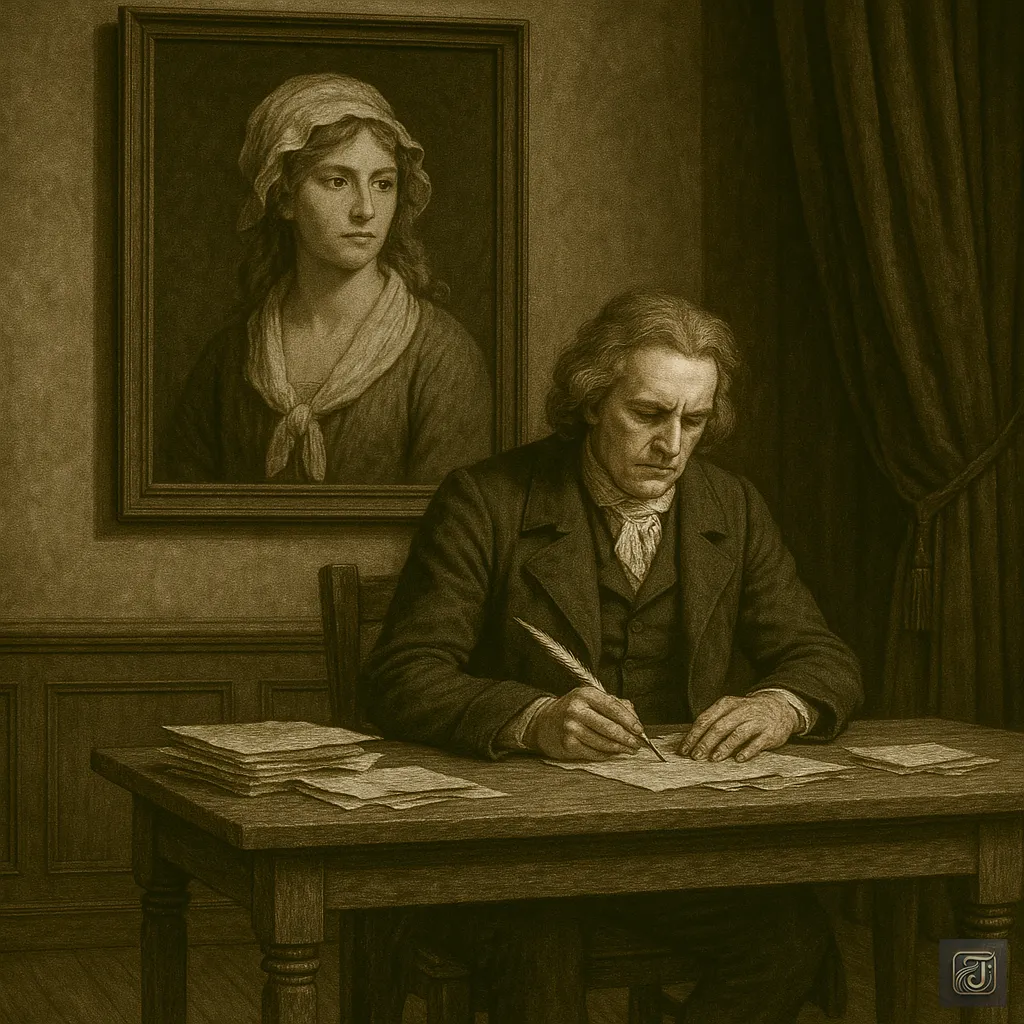
By the 19th century, she was re-evaluated as “the solitary heroine of the revolution.”
Friedrich Schiller dramatized her story in a play, praising her noble convictions.
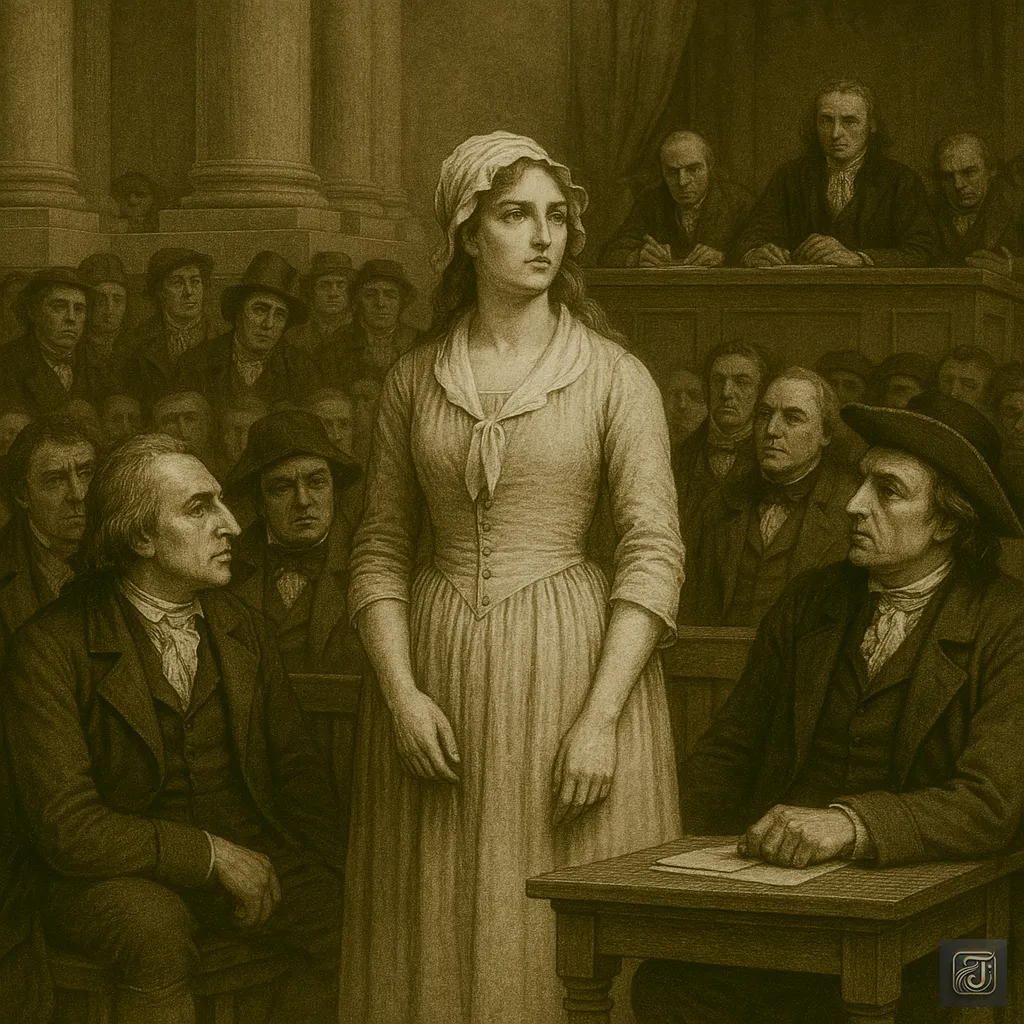
Furthermore, Paul Baudry’s painting The Trial of Charlotte Corday immortalized her resolute figure in history.
People asked:
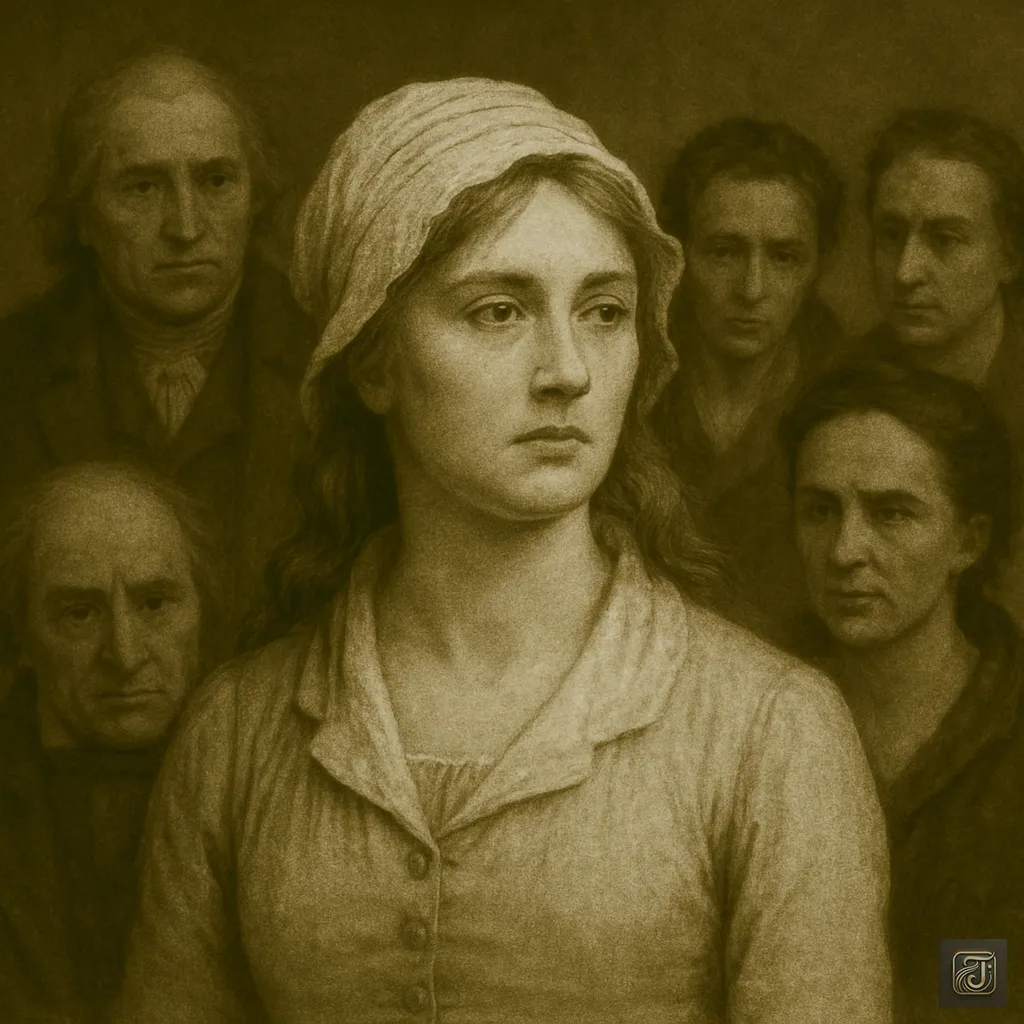
Was she truly a hero, or was she a criminal?
History never gave a clear answer.
Yet, her convictions and actions have been passed down through the ages.
The guillotine’s blade took only her life.
Her resolve continues to live on in the annals of history.
Epilogue: The Flower That Bloomed in the Shadow of Revolution
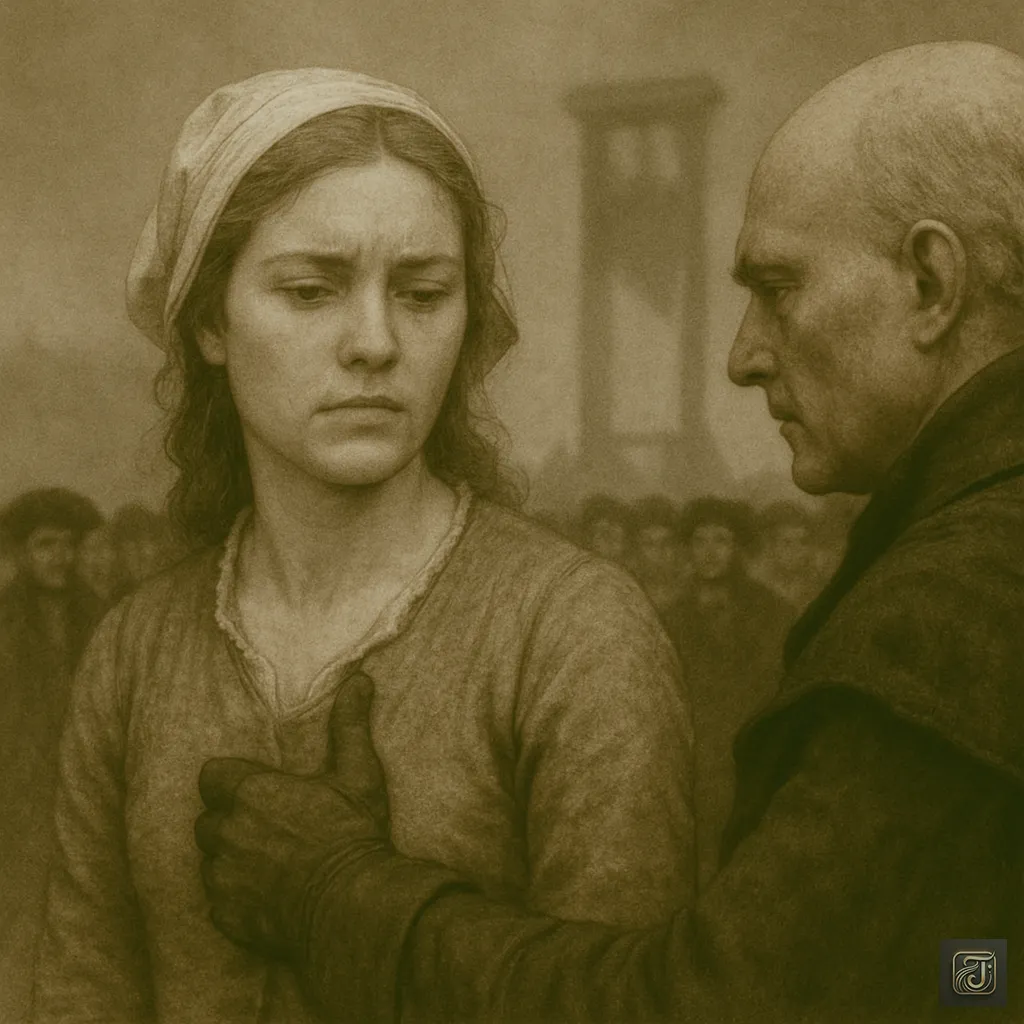
Charlotte Corday—her name became an indelible presence in the tumult of the French Revolution.
She took up a dagger to stop the tyranny of the Jacobins.
Yet, the blade she wielded did not bring freedom, but rather another chain of bloodshed.
The death of Jean-Paul Marat only amplified the anger of the Jacobins, and France sank further into the darkness of terror.
Was her action heroic, or was it reckless?
History has not provided a clear answer to that question.
However, her final words, and the tale of her cheek being struck by the executioner after her death, have been passed down as if they symbolize the revolution itself.
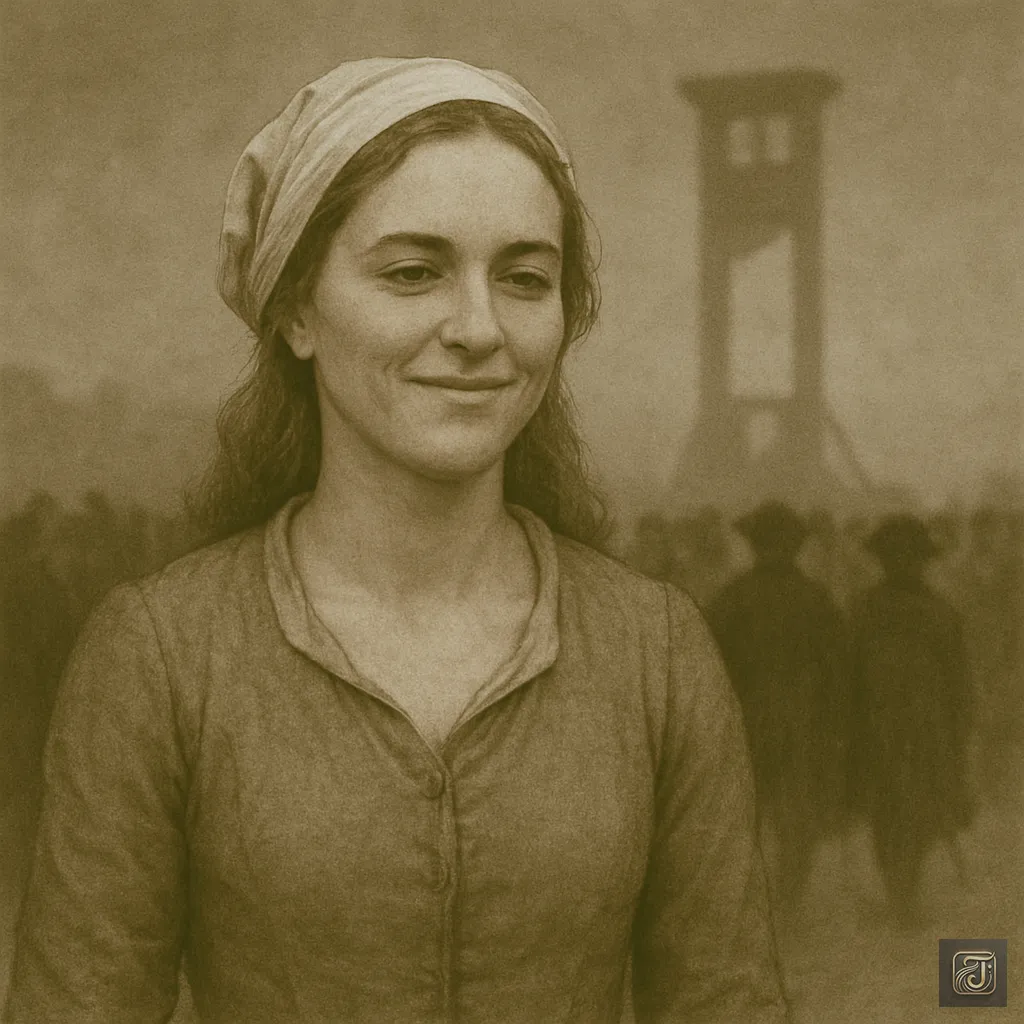
The French Revolution was a battle for liberty.
Yet, in the name of that liberty, countless lives were taken.
When the ideals of revolution became stained with violence, can we truly call it freedom?
The story of Charlotte Corday continues to ask that question of us.
And the smile she showed in her final moments, as she faced the guillotine, remains a quiet resistance to history—a symbol that is still remembered and passed down.
Afterword
The name Charlotte Corday is etched into the chaos of the French Revolution—sharp, sorrowful, unforgettable.
In a time when even raising one’s voice could cost a life, she chose to act.
She paid the ultimate price to inscribe her belief in justice into the pages of history.
Her life burned like a flame—fierce, brilliant, and tragically brief.
Through this story, we are faced with the question:
Was she a hero?
Or was she consumed by madness?
One thing is certain—she acted on what she believed to be right.
And the weight of that conviction cannot be denied.
Before writing Charlotte’s tale, I also wrote about the life of Marie Antoinette—another woman who faced the blade of the guillotine during the Revolution.
Though they stood on opposite sides of society—queen and assassin—they were both ultimately swept away by the same storm.
Marie Antoinette was born into royalty, adorned in luxury, only to become a symbol of hatred and meet a tragic end.
If Charlotte Corday was the dagger of justice, Marie Antoinette was the rose of a fading world.
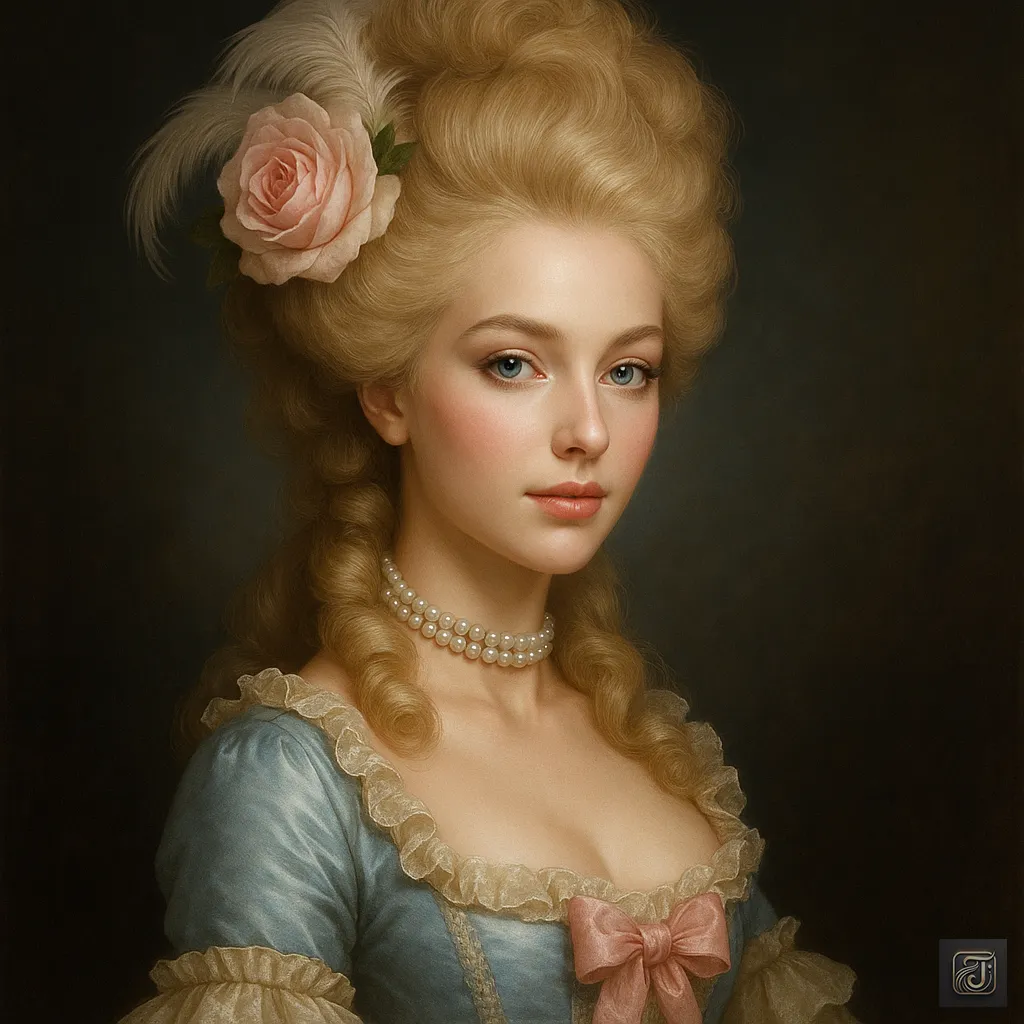
This is a story similar to the tragedy of Marie Antoinette that I wrote about before.
One of the causes of the French Revolution was that while the nobility and clergy were exempt from taxes, only the common people suffered under heavy tax burdens.
Marie Antoinette👈Click: There is her story.
I invite you to read her story as well, to witness how both women were caught in the same tide of history.
Revolution creates heroes—and victims.
And in its shadow, countless nameless lives vanish quietly.
Charlotte’s story is but one voice among many, echoing the cries of a turbulent era.
If you felt even a sliver of her sorrow, her resolve, or her hope—then this story has done its part.
Thank you for reading — Author: Fuji
If you found this article helpful or enjoyable, please consider supporting me with a cup of coffee! 👈Click☕🙏
I’m a passionate blogger who loves diving deep into human history and sharing captivating stories about remarkable figures and events from the past.
My blog combines engaging storytelling with beautiful illustrations, making history accessible and enjoyable for everyone.
Currently, I write my blog while managing a full-time job.
Balancing both limits the time I can dedicate to research, writing, and illustrations.
With your support on Ko-fi, I can reduce the time spent on my main job and focus more on blogging, allowing me to increase the frequency of updates and bring you even more captivating stories.
Whether it’s a one-time coffee or a regular contribution, every bit goes directly into making history engaging and fun for my readers.
Thank you for joining me on this journey through time. Let’s uncover the past together!
If you found this article insightful, please consider supporting me with a cup of coffee! 👈Click☕🙏
Author: Fuji
Human history is truly complex, isn’t it?
There are countless websites introducing historical figures and events,
but many of them are just plain explanations—not exactly exciting to read.
On the other hand, reading books takes a lot of time and effort.
That’s where I come in.
Through “stories that are more engaging than explanations and shorter than books,”
I aim to bring the world’s history and humanity’s records to you in a more accessible and interesting way.
If my stories inspire you to love history a little more, I’d be absolutely thrilled!





Comment